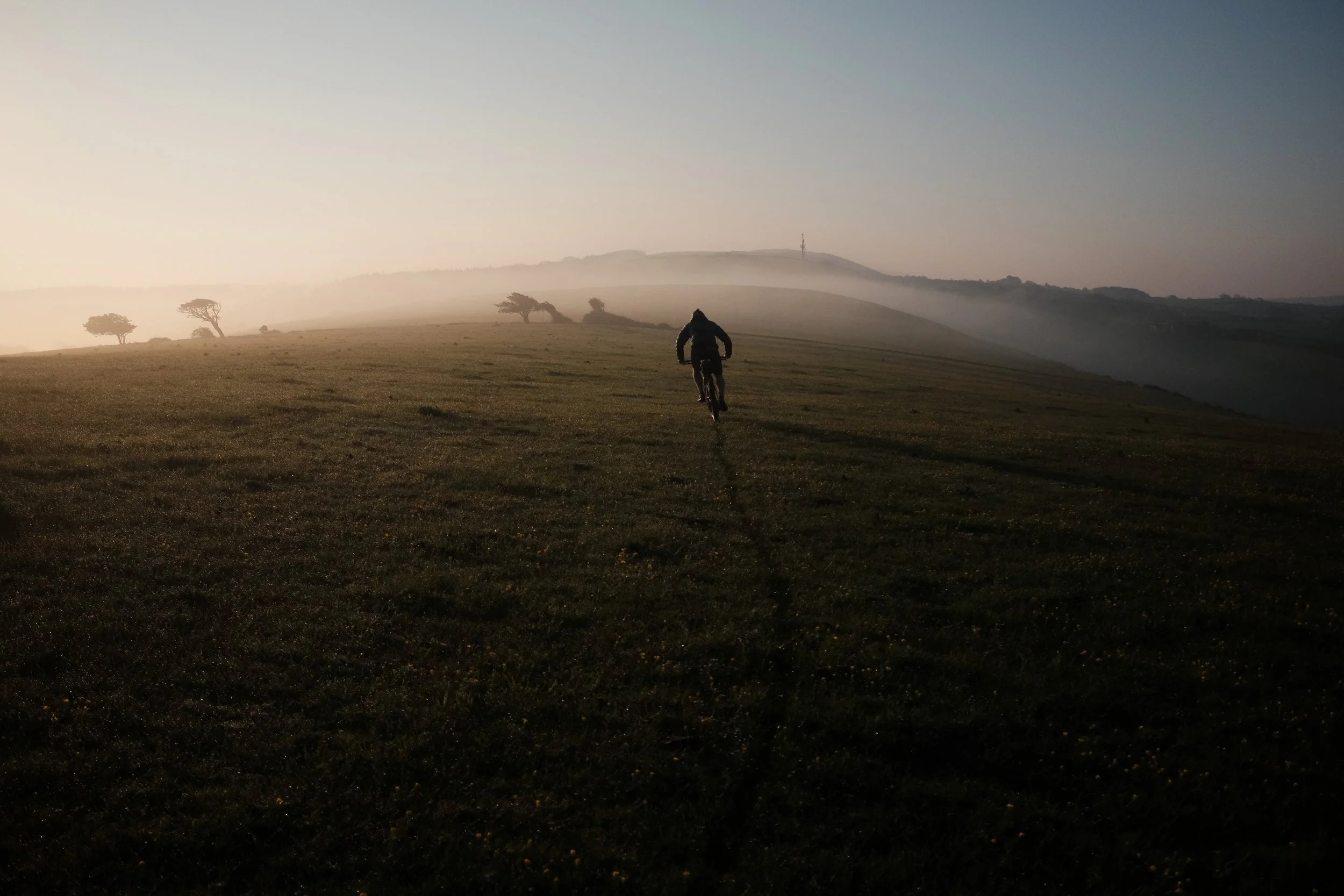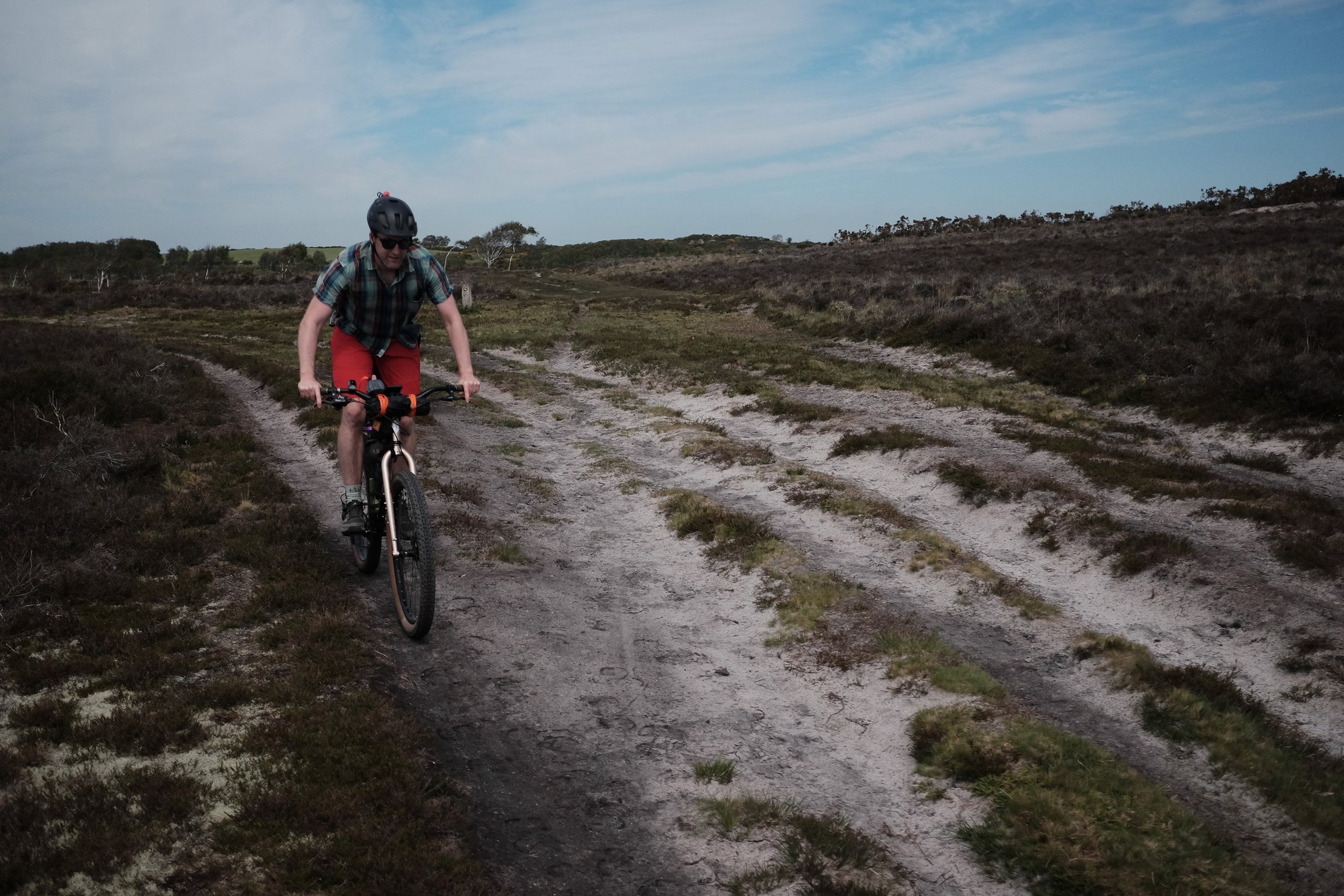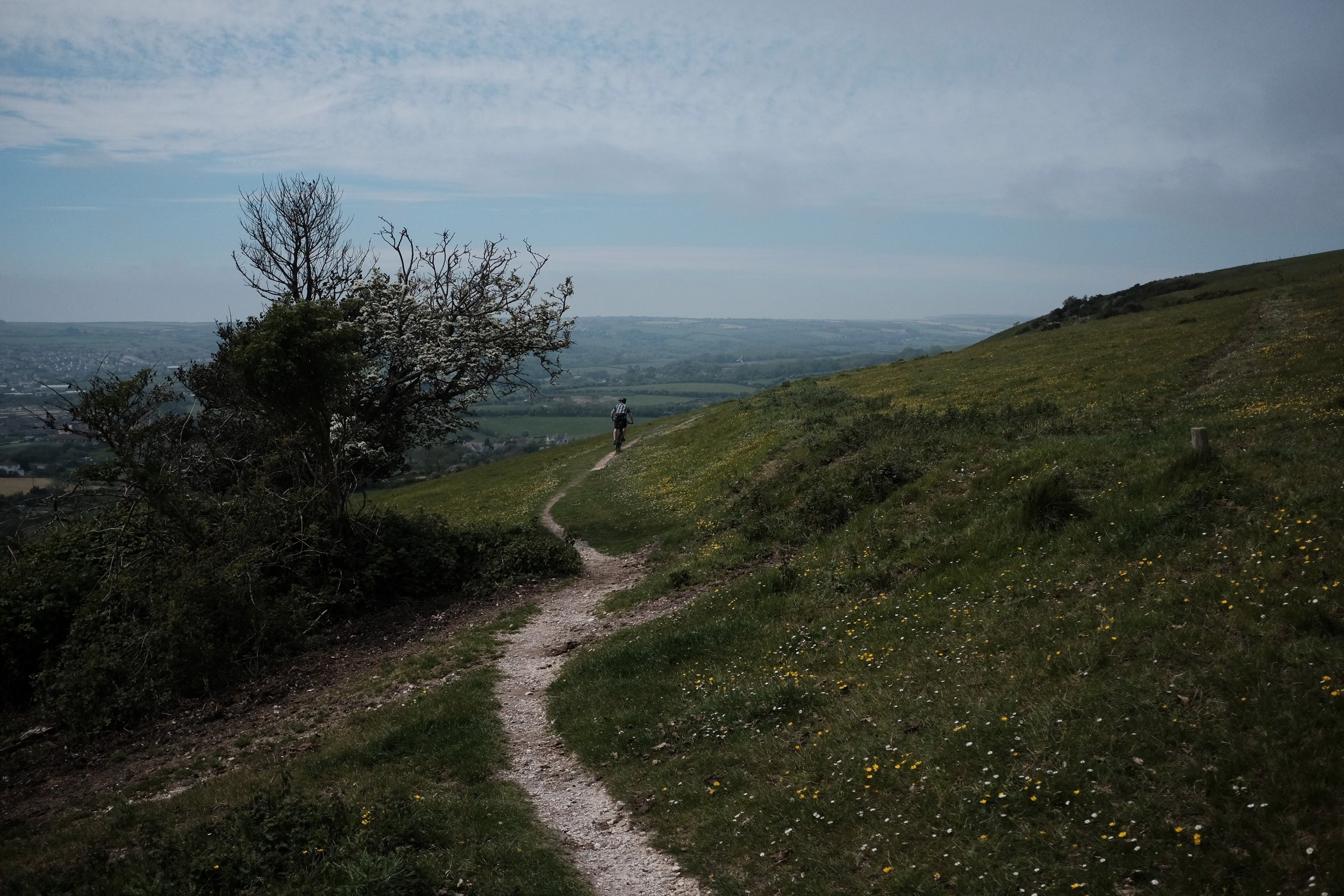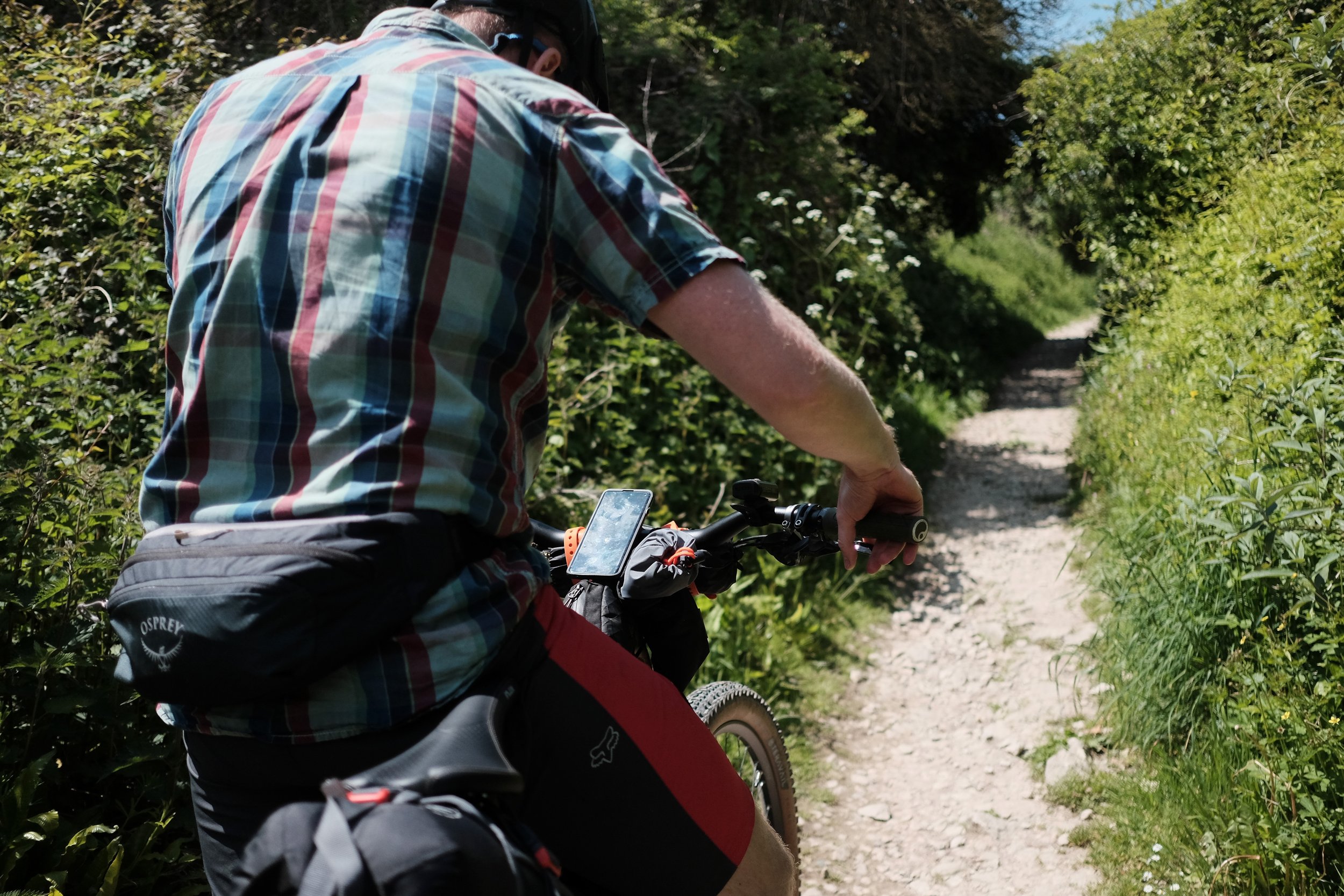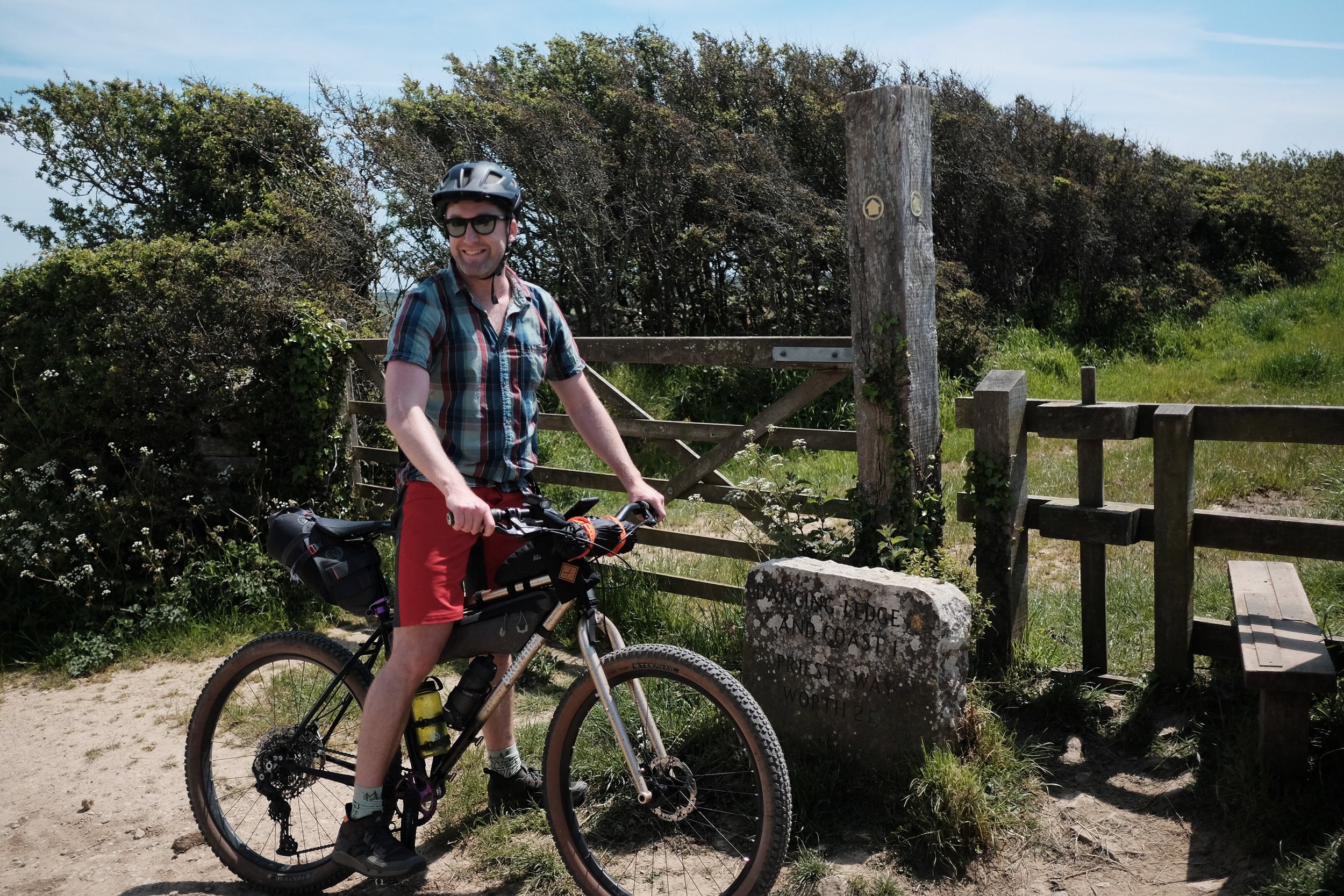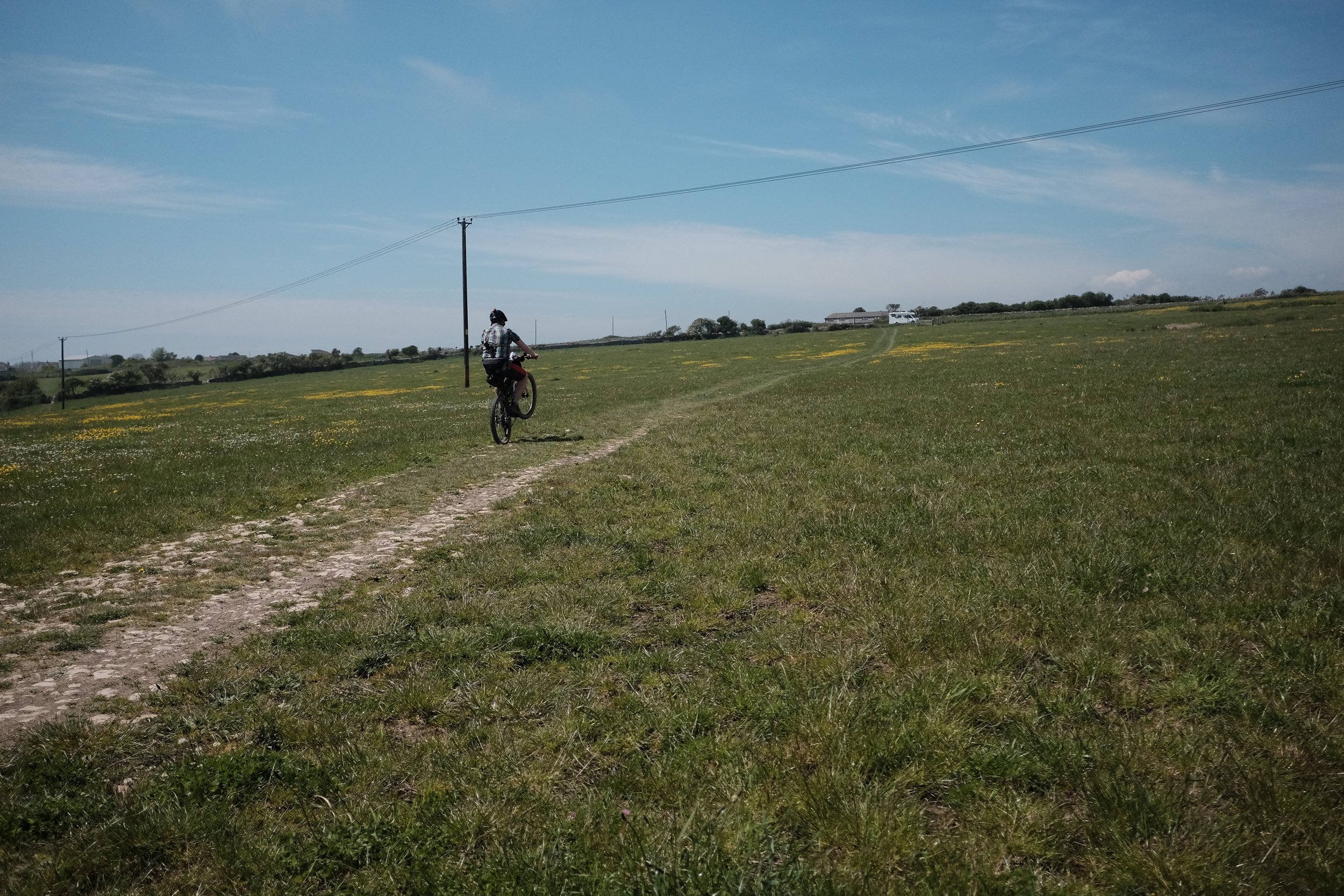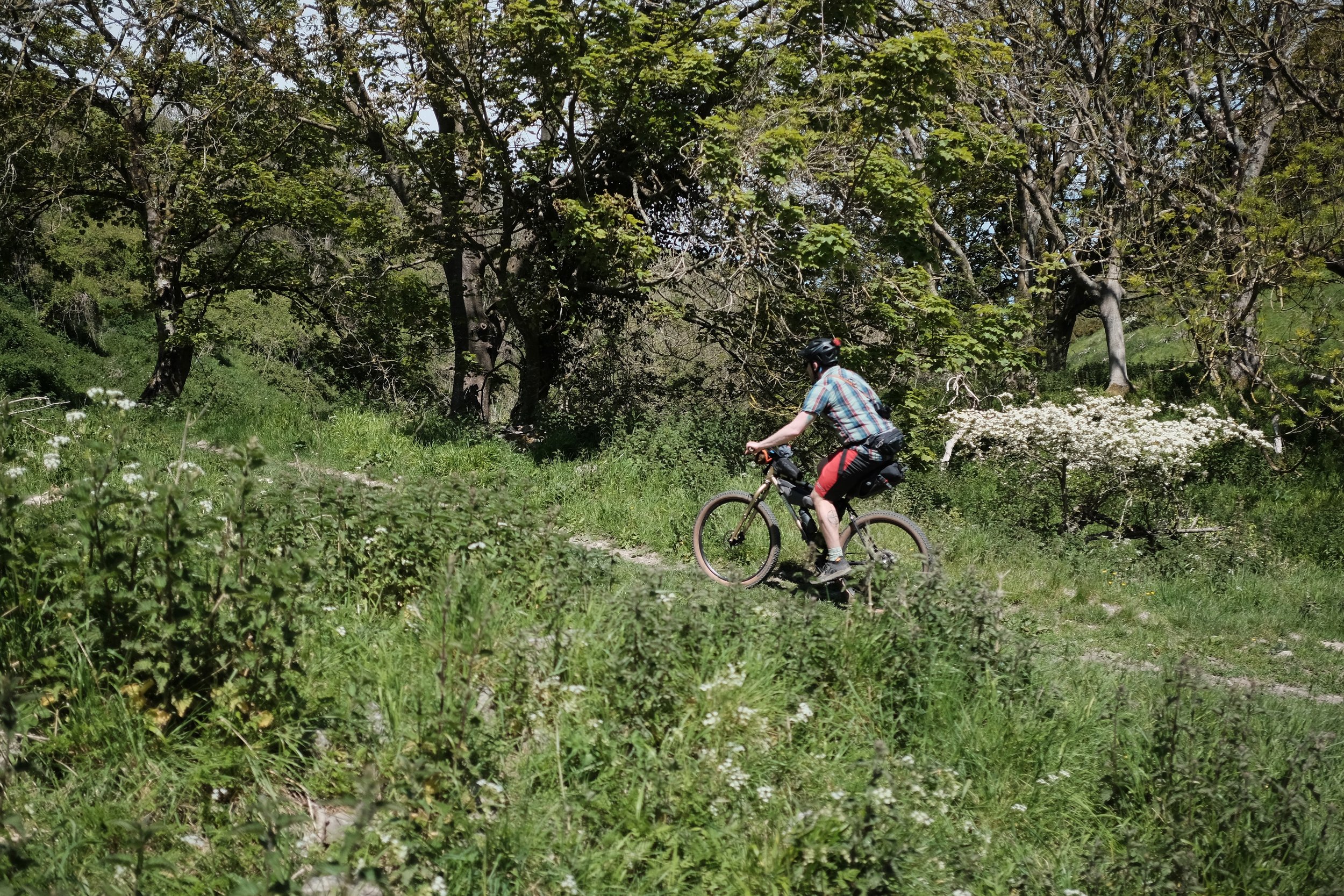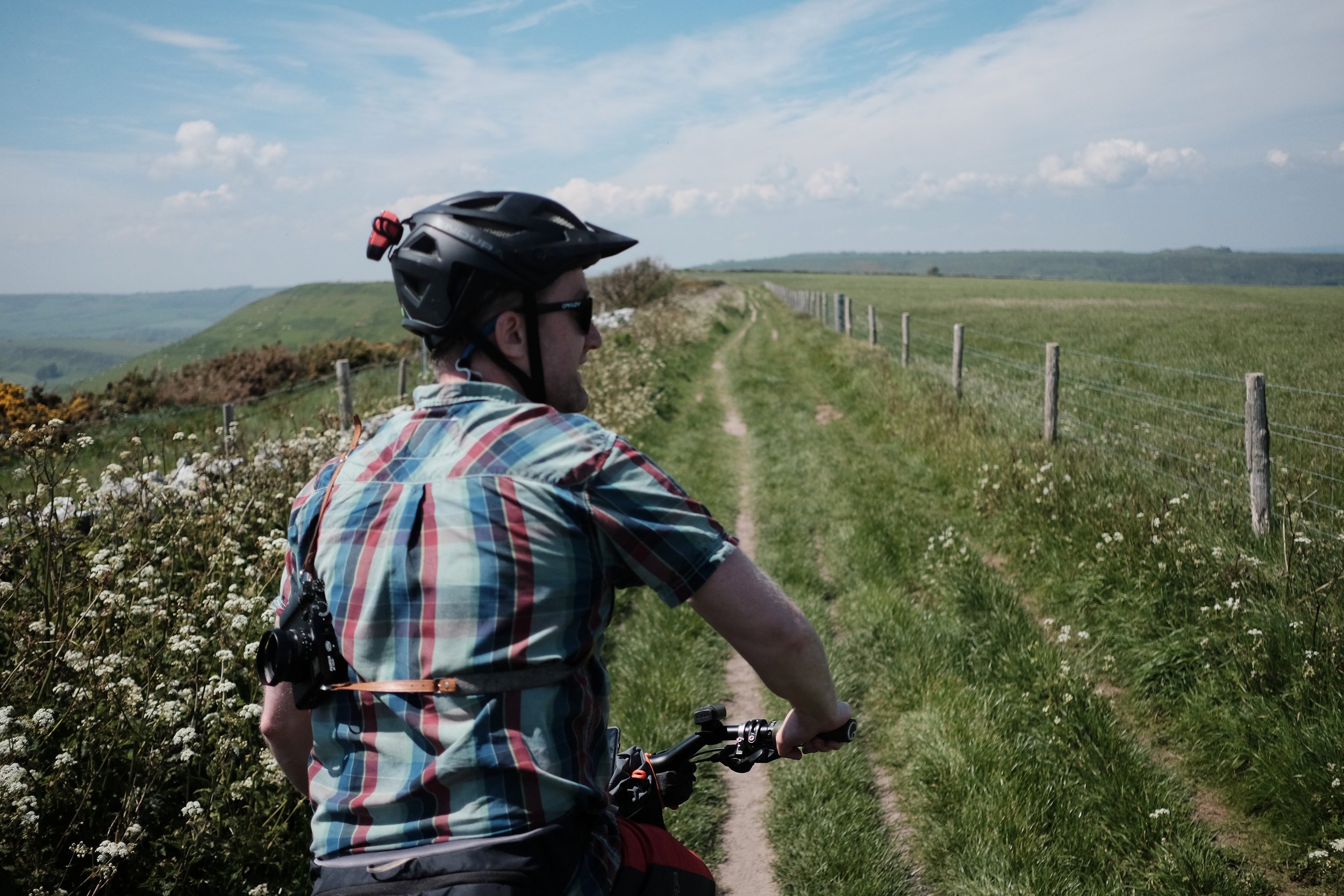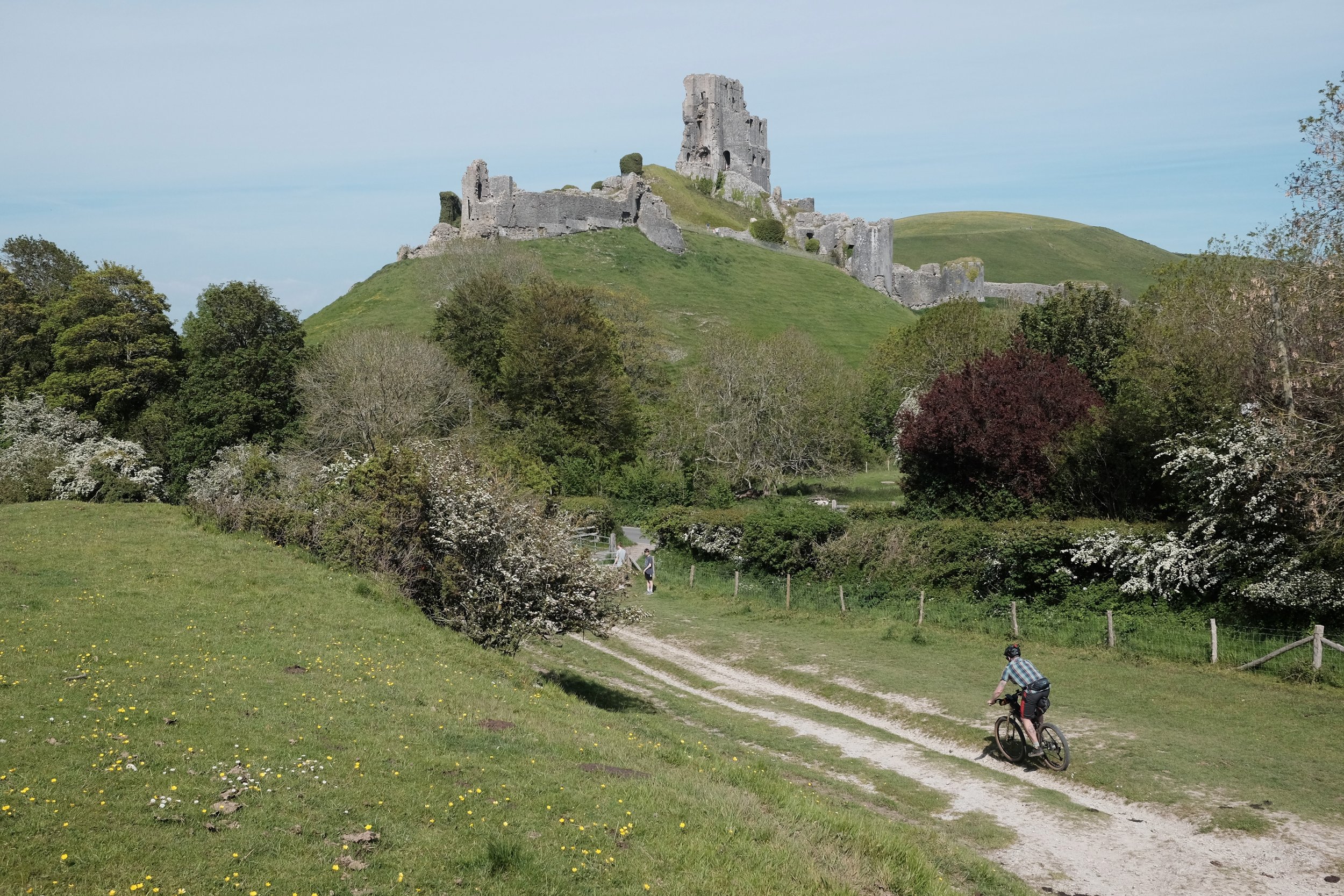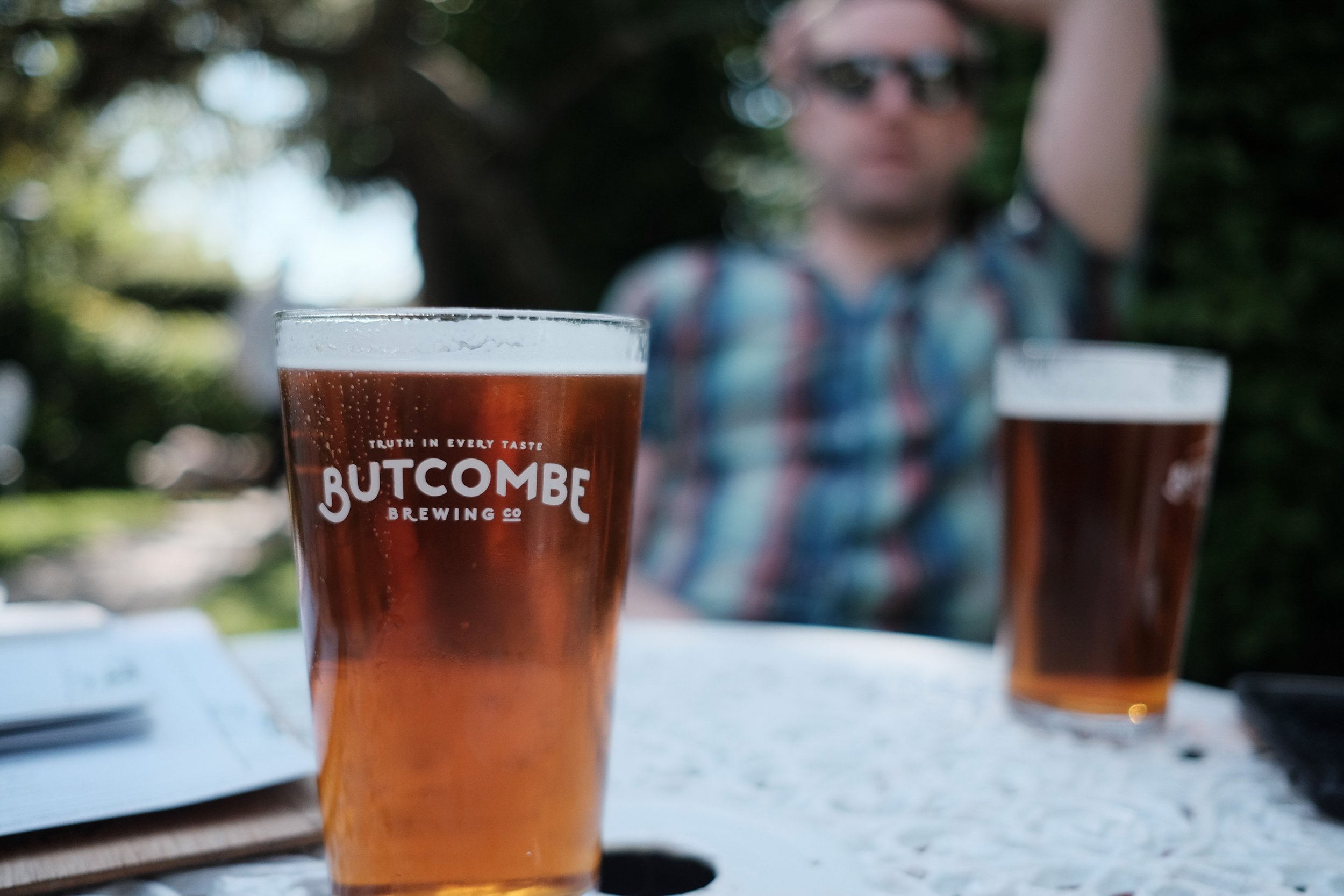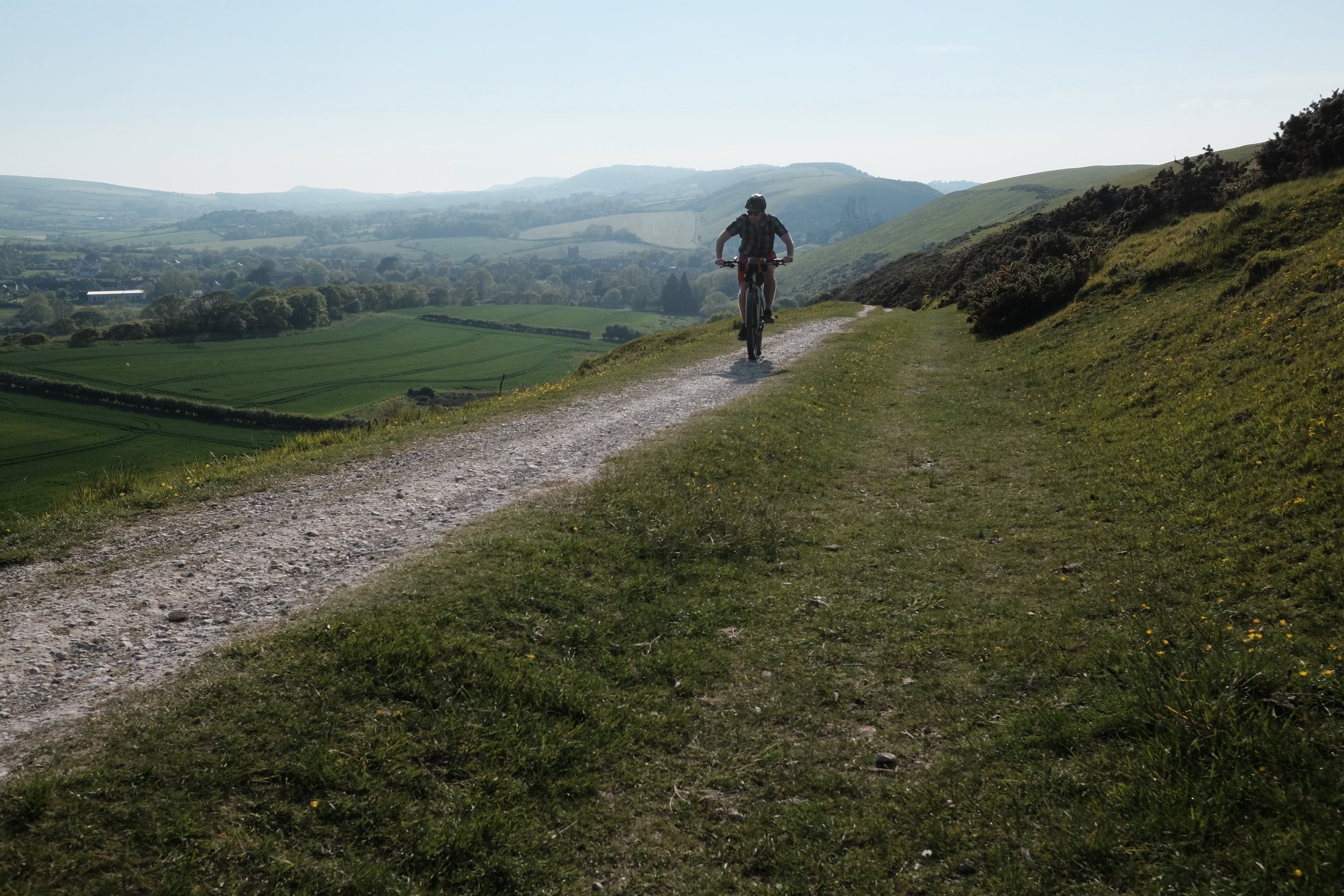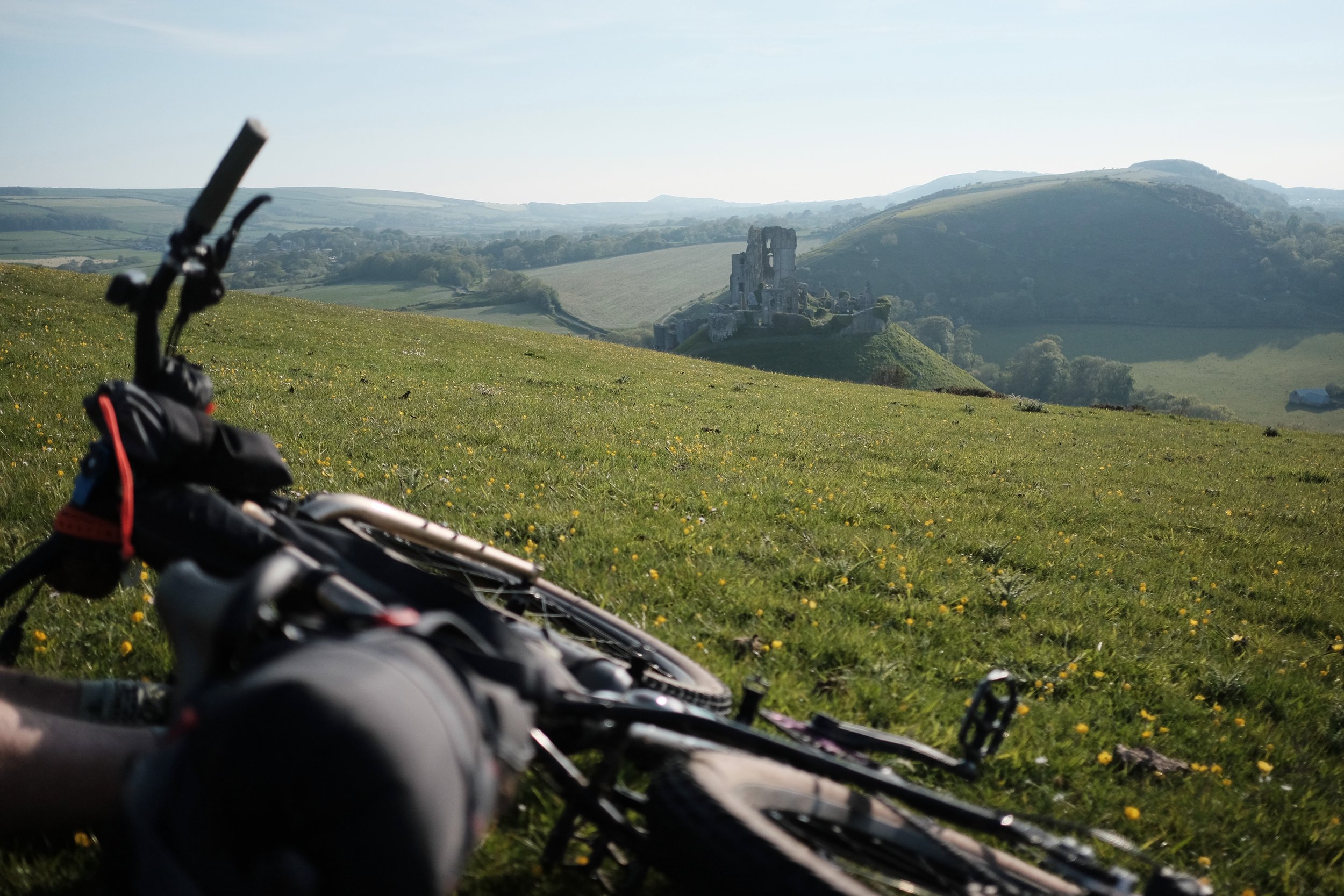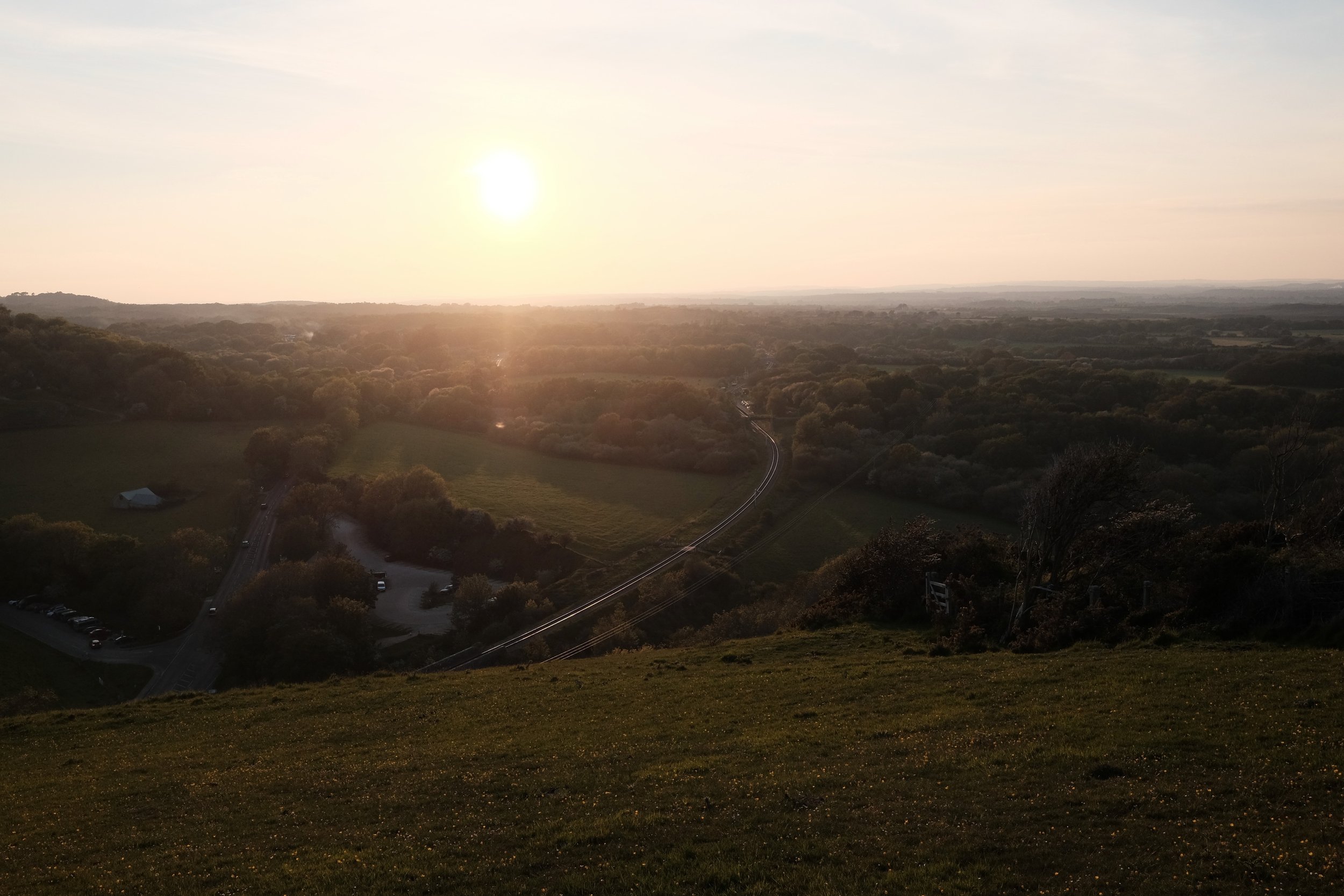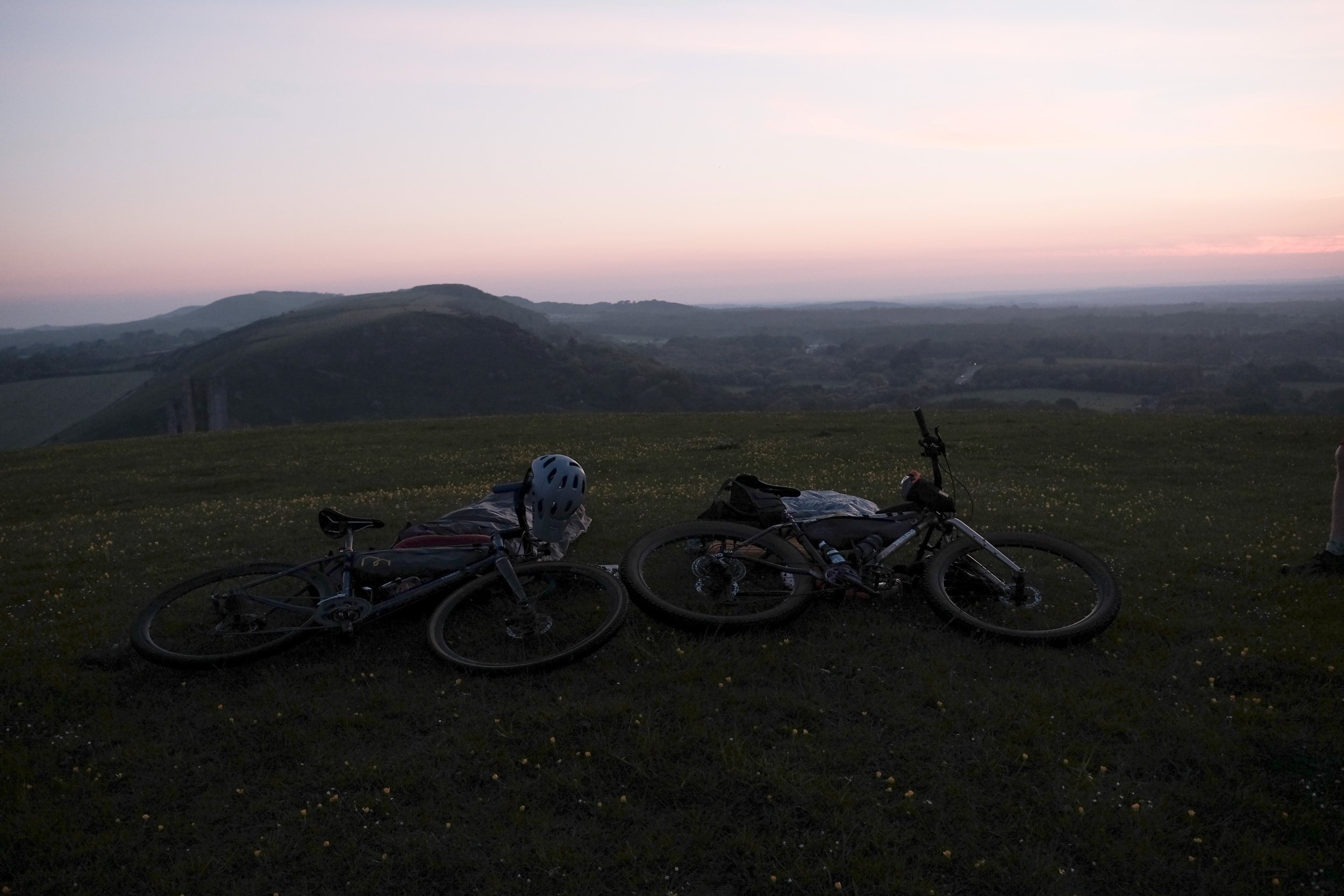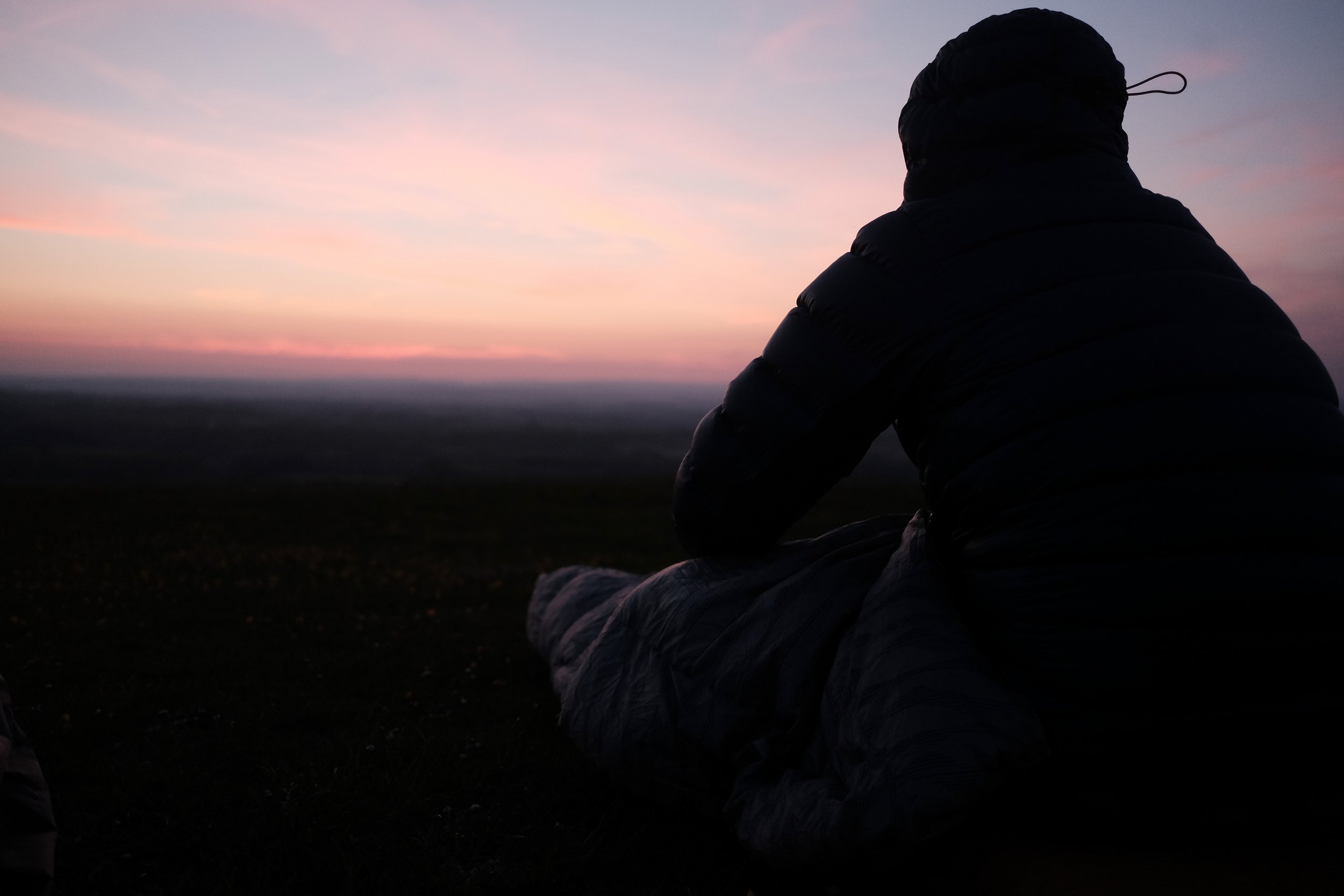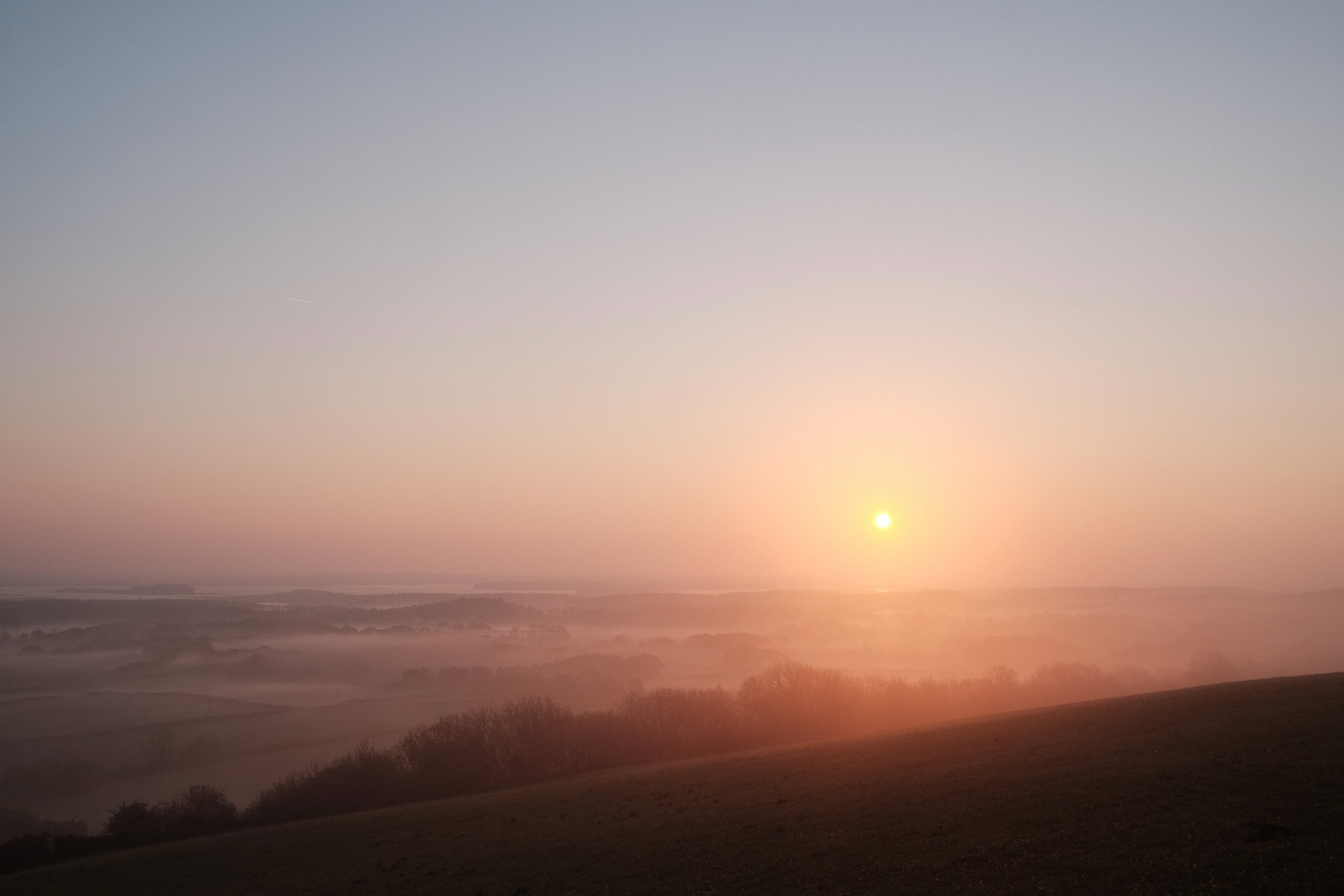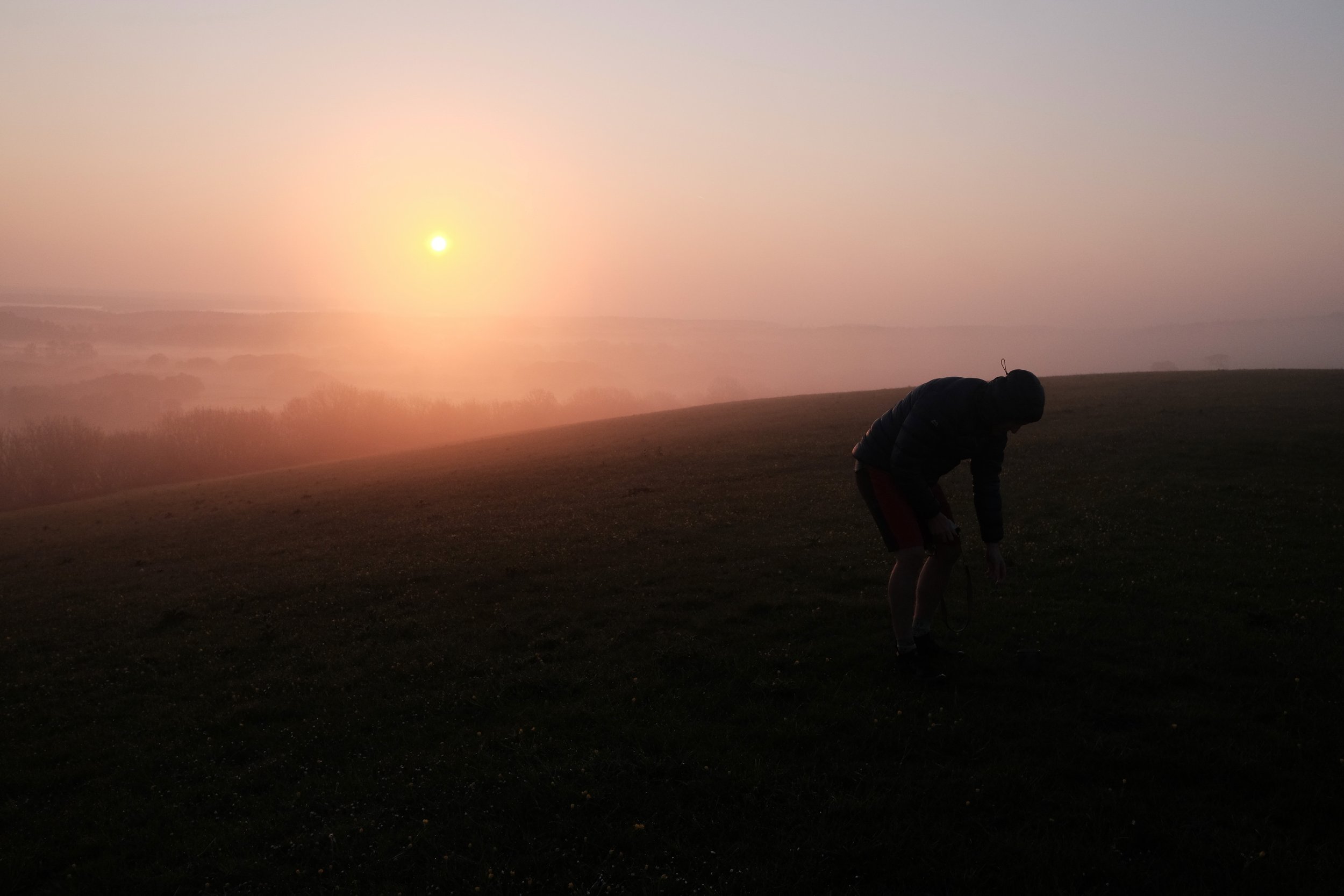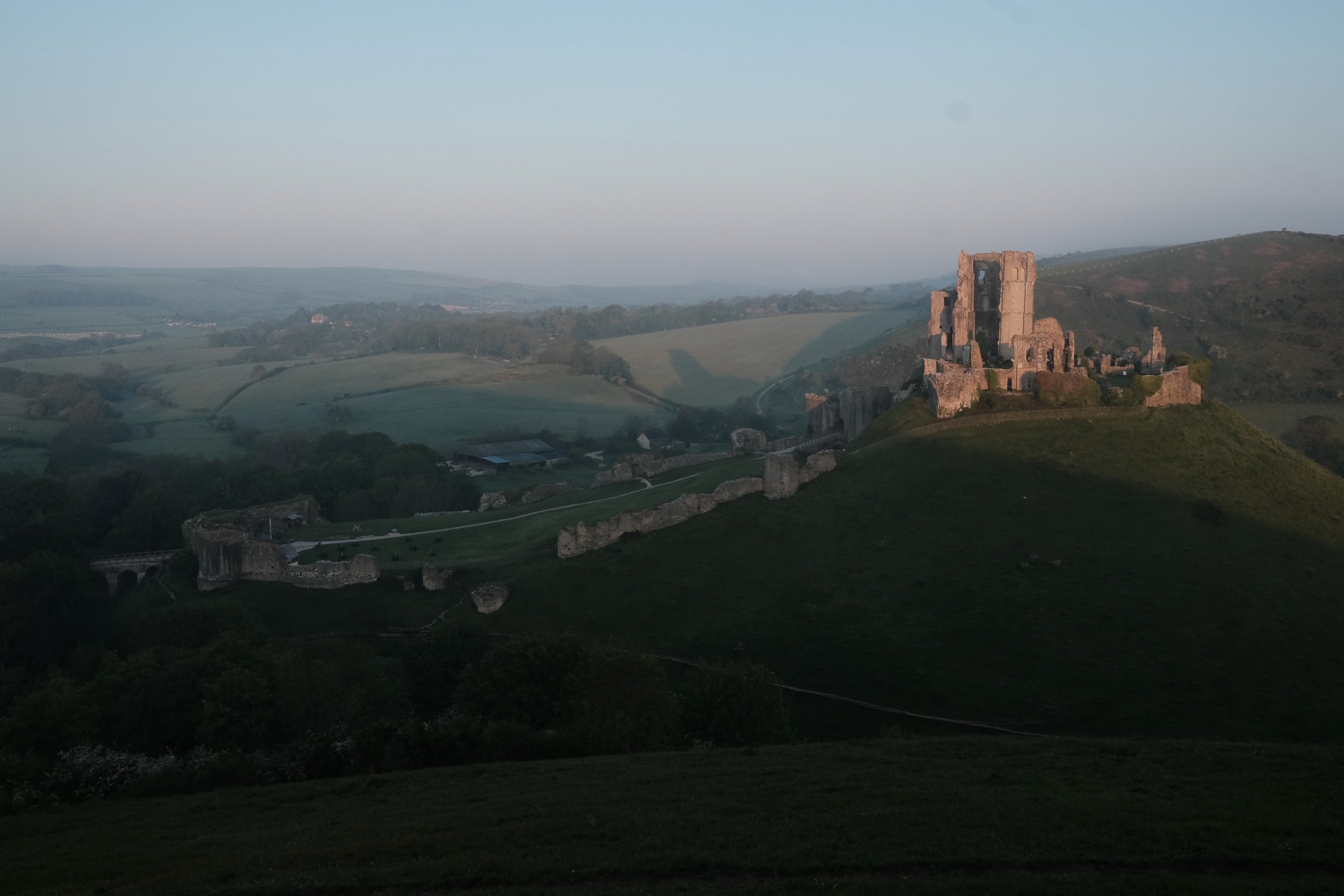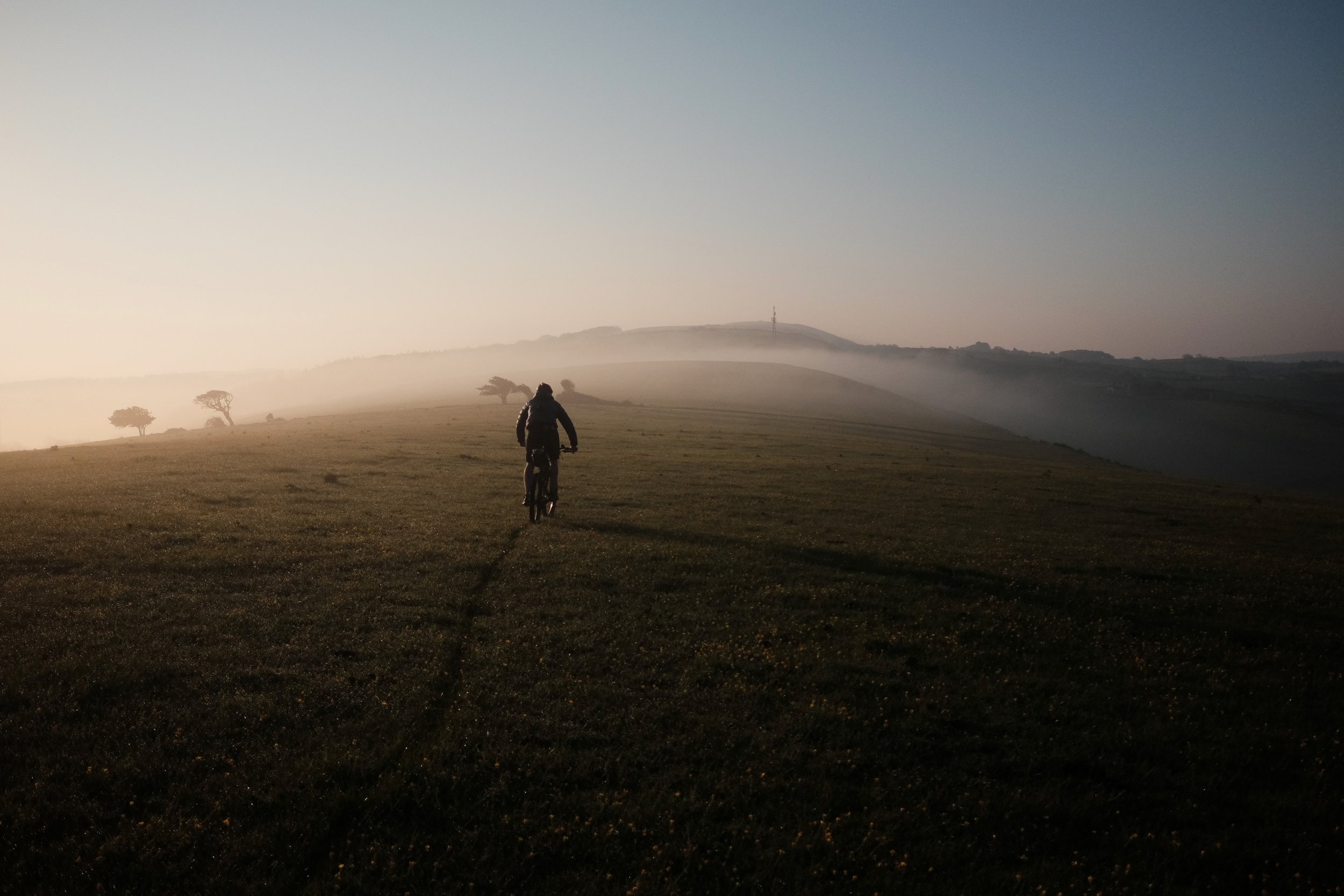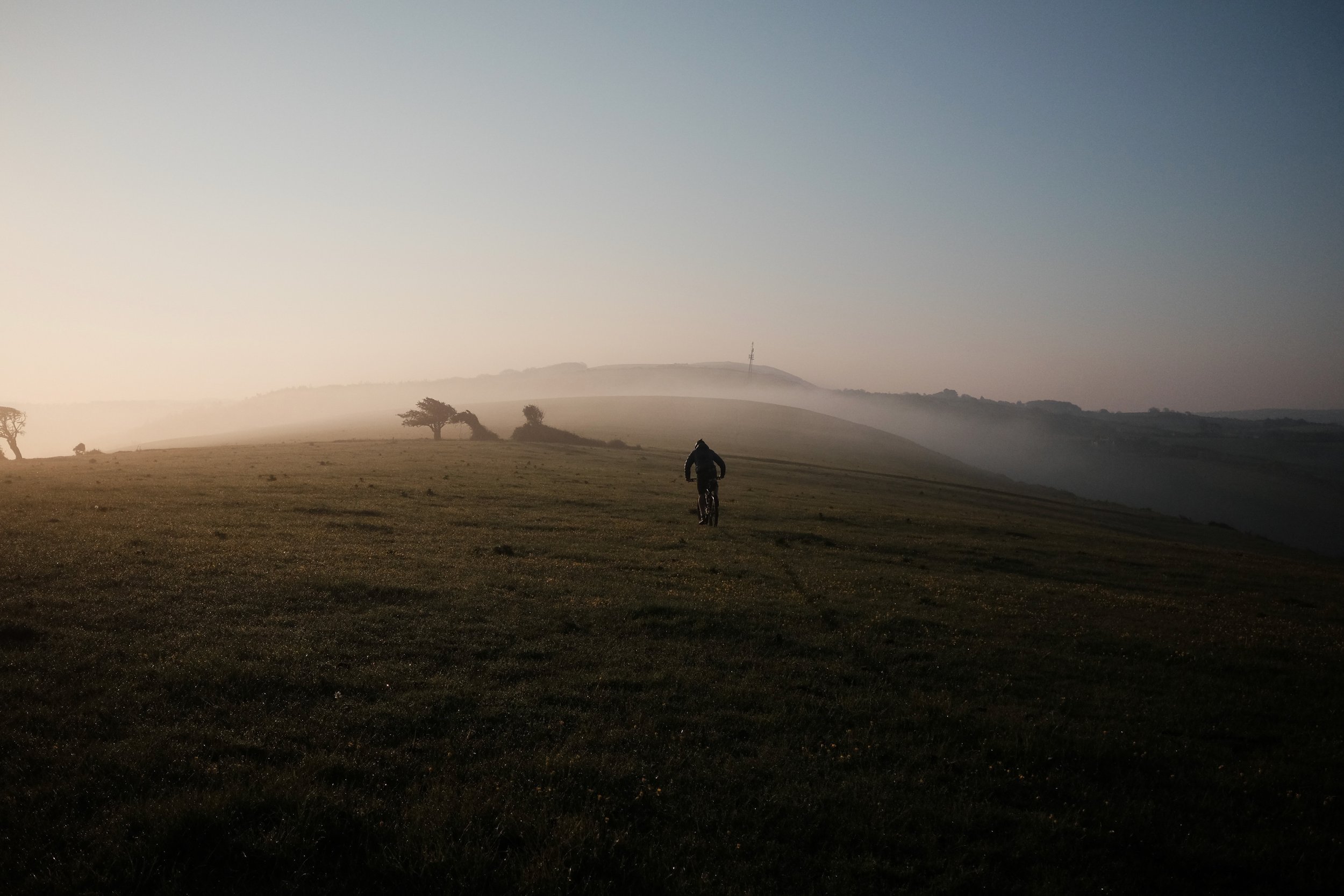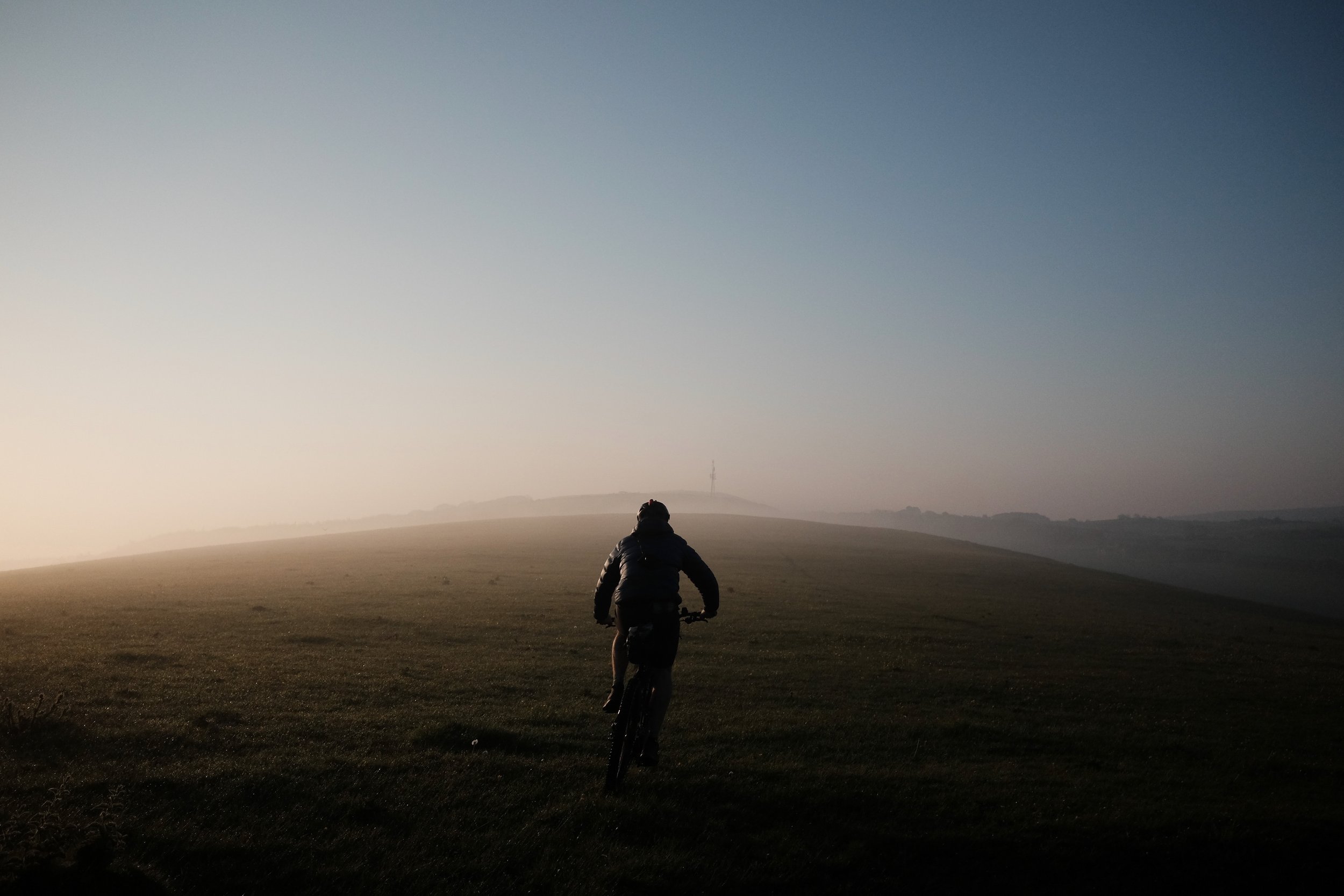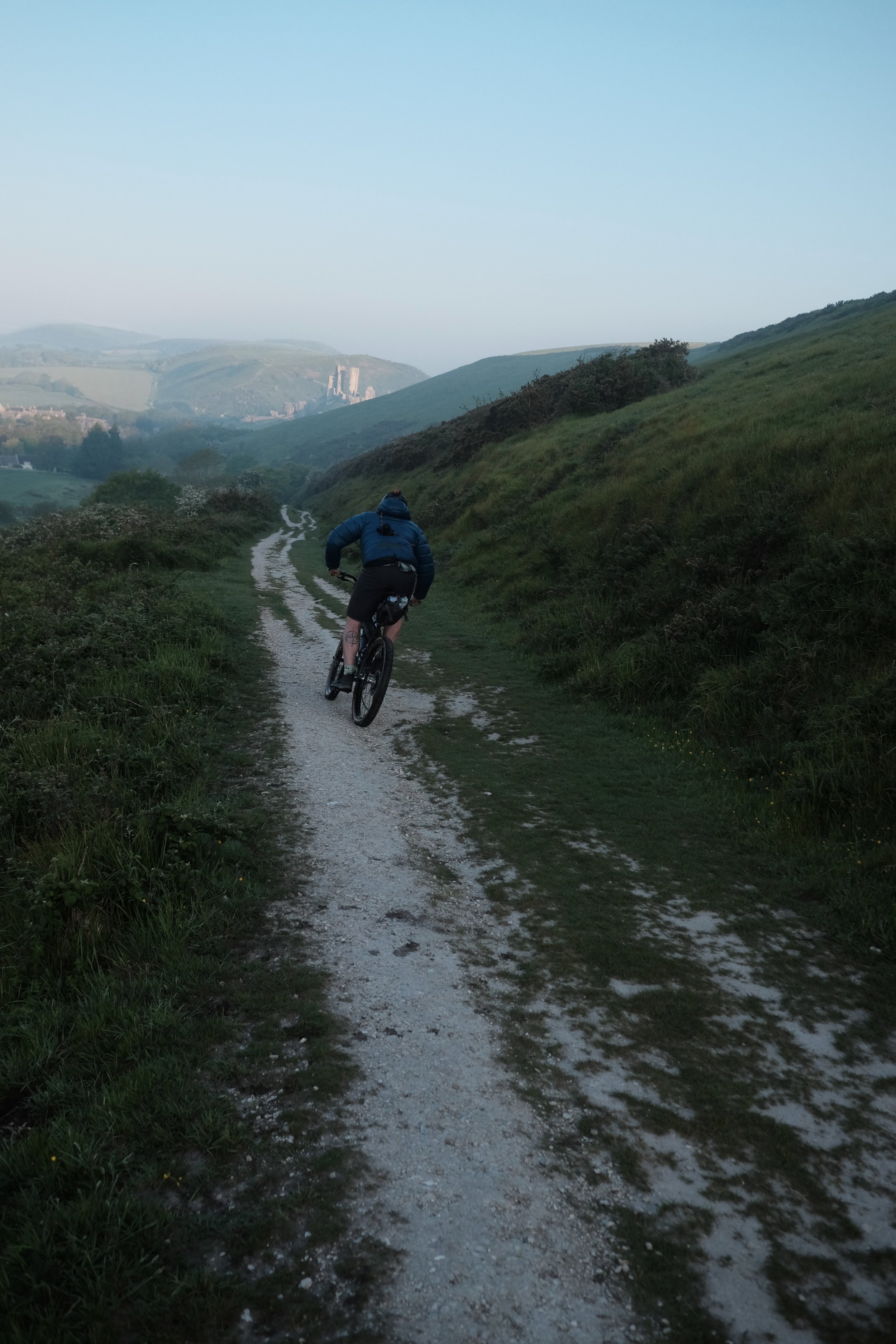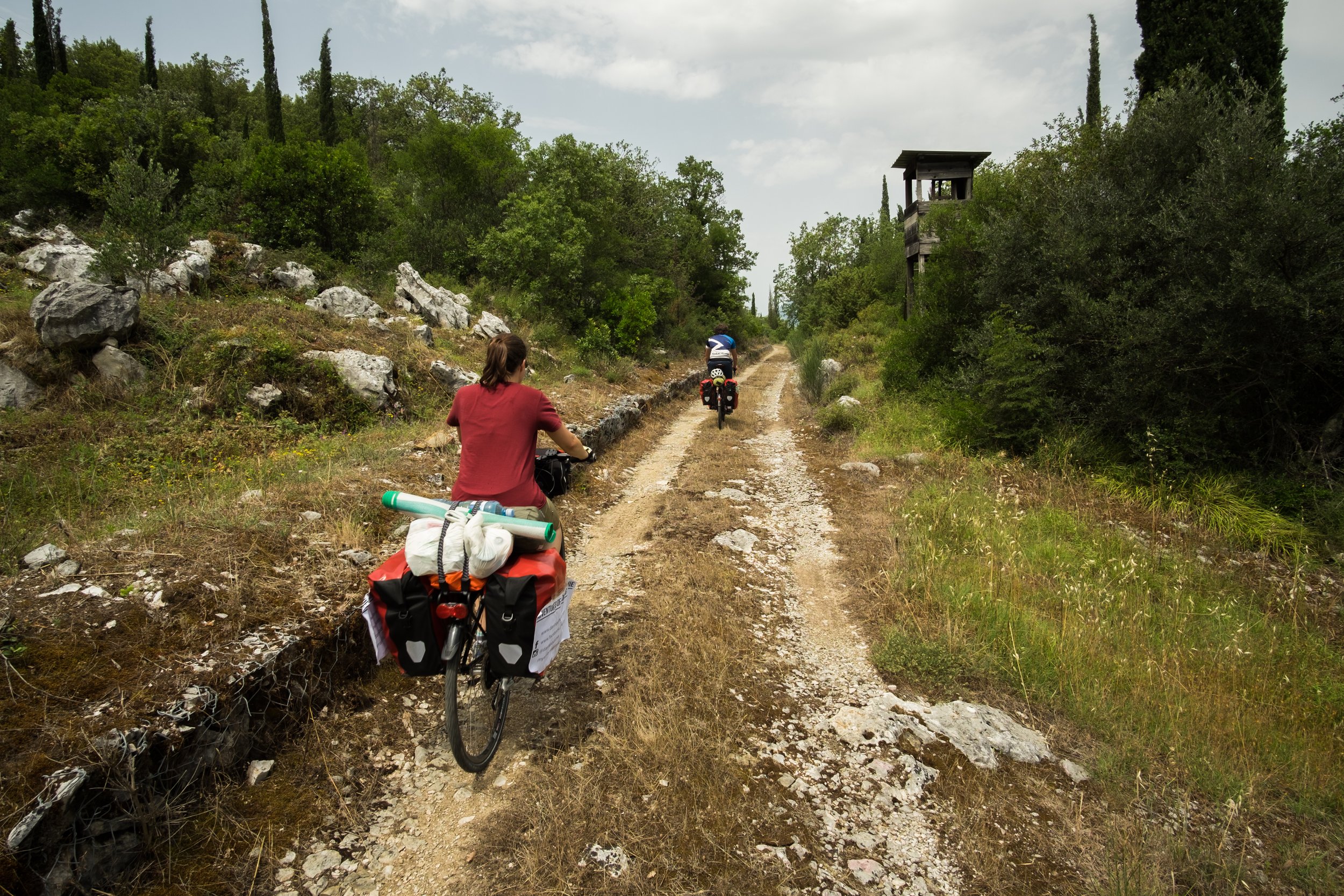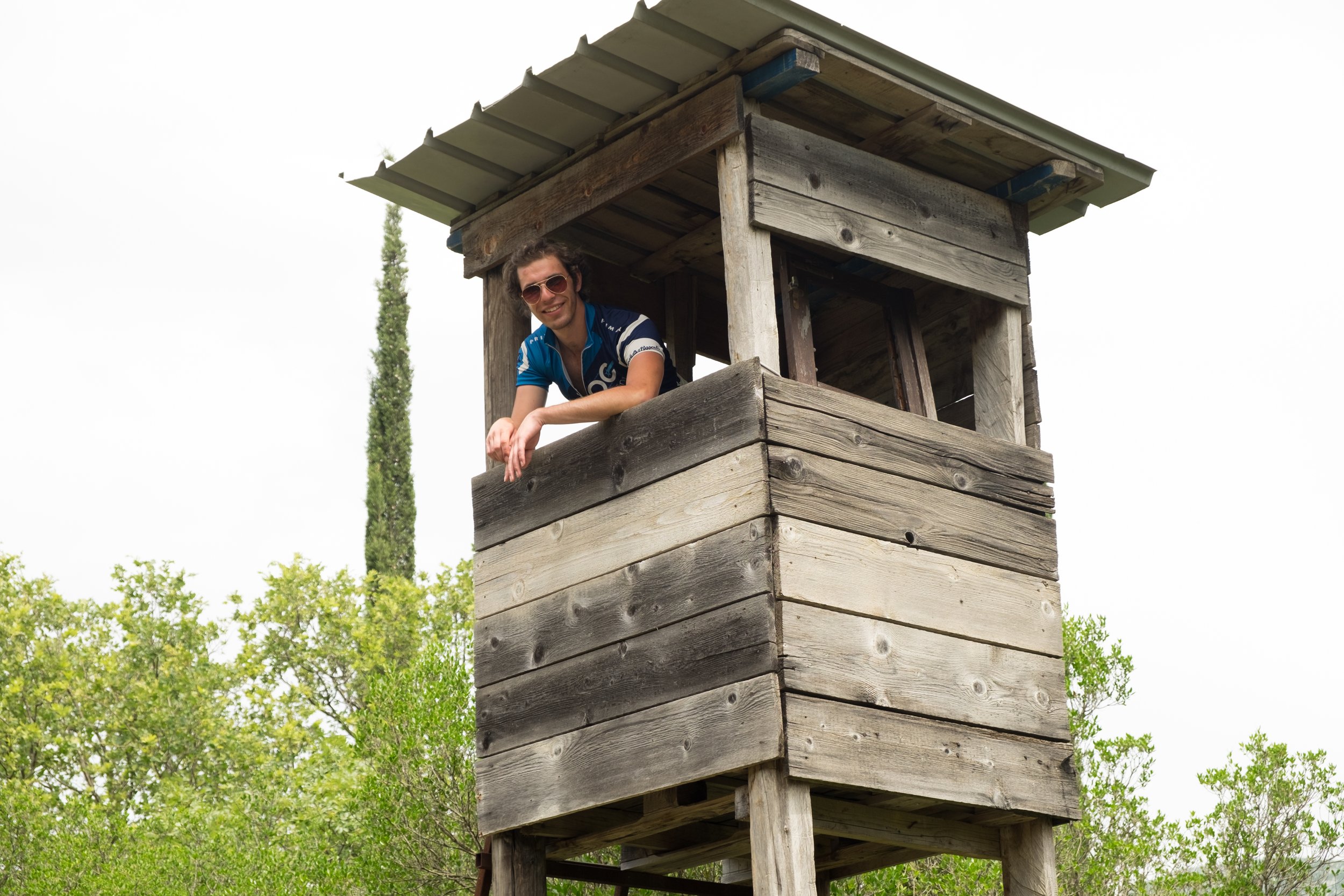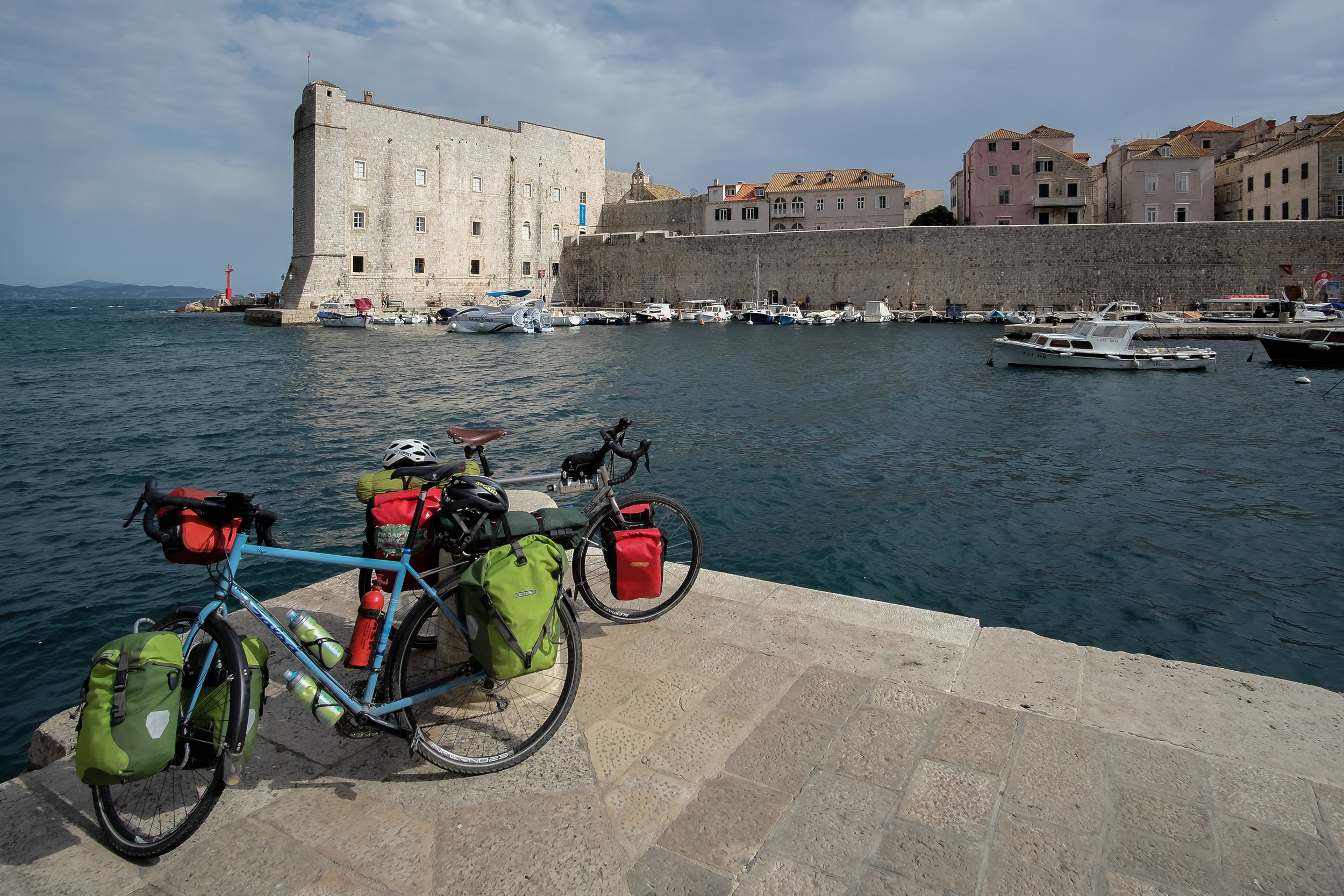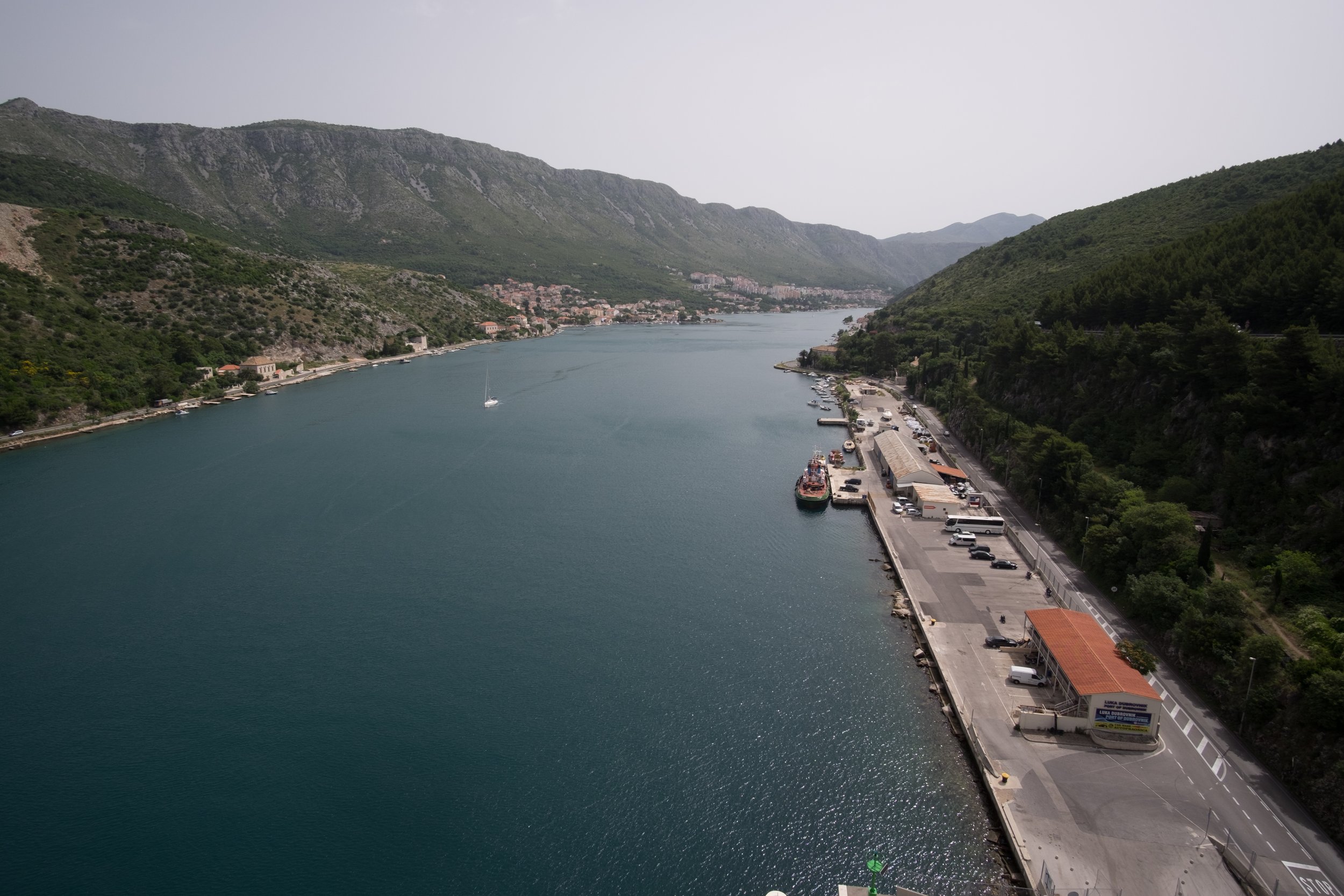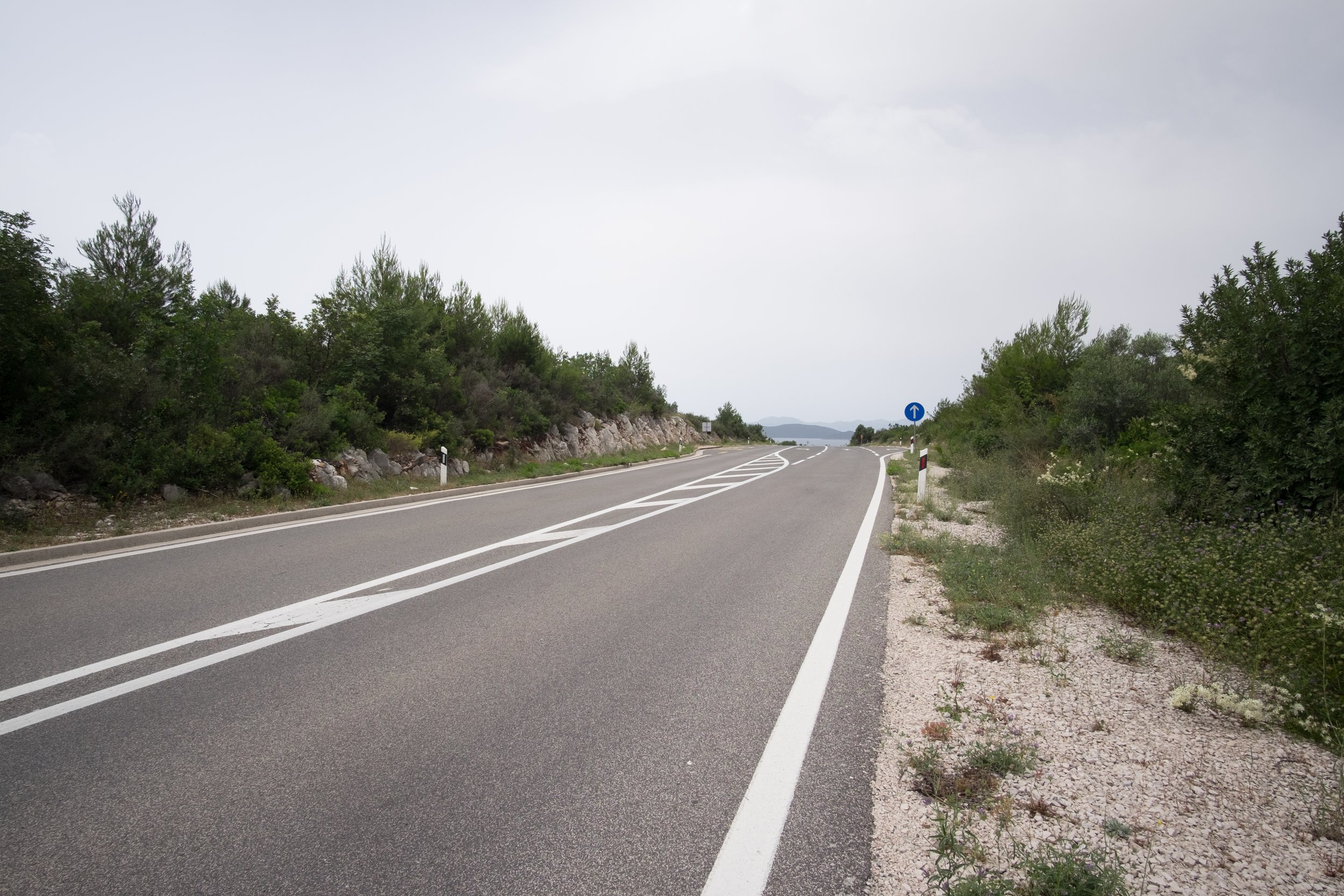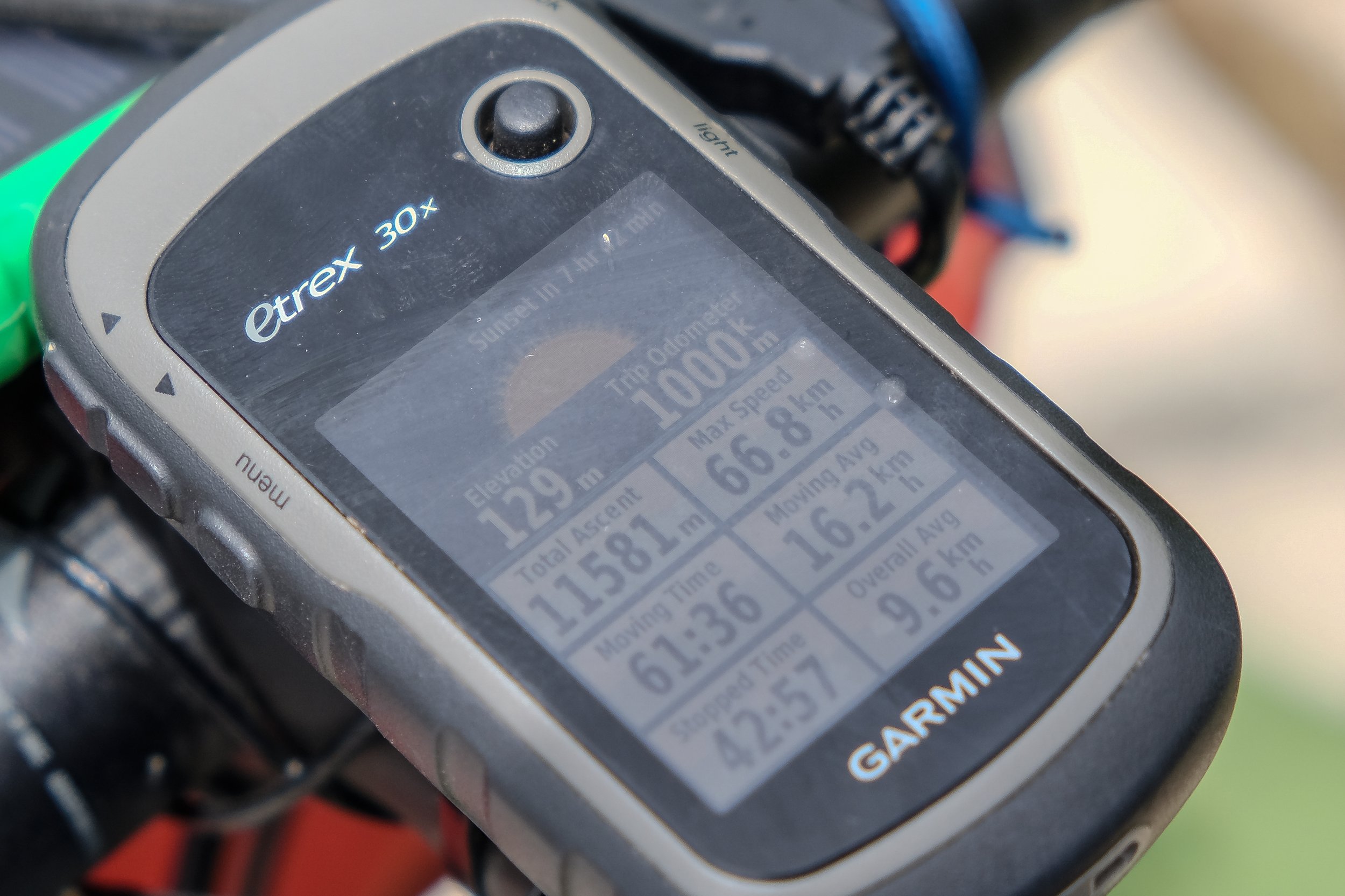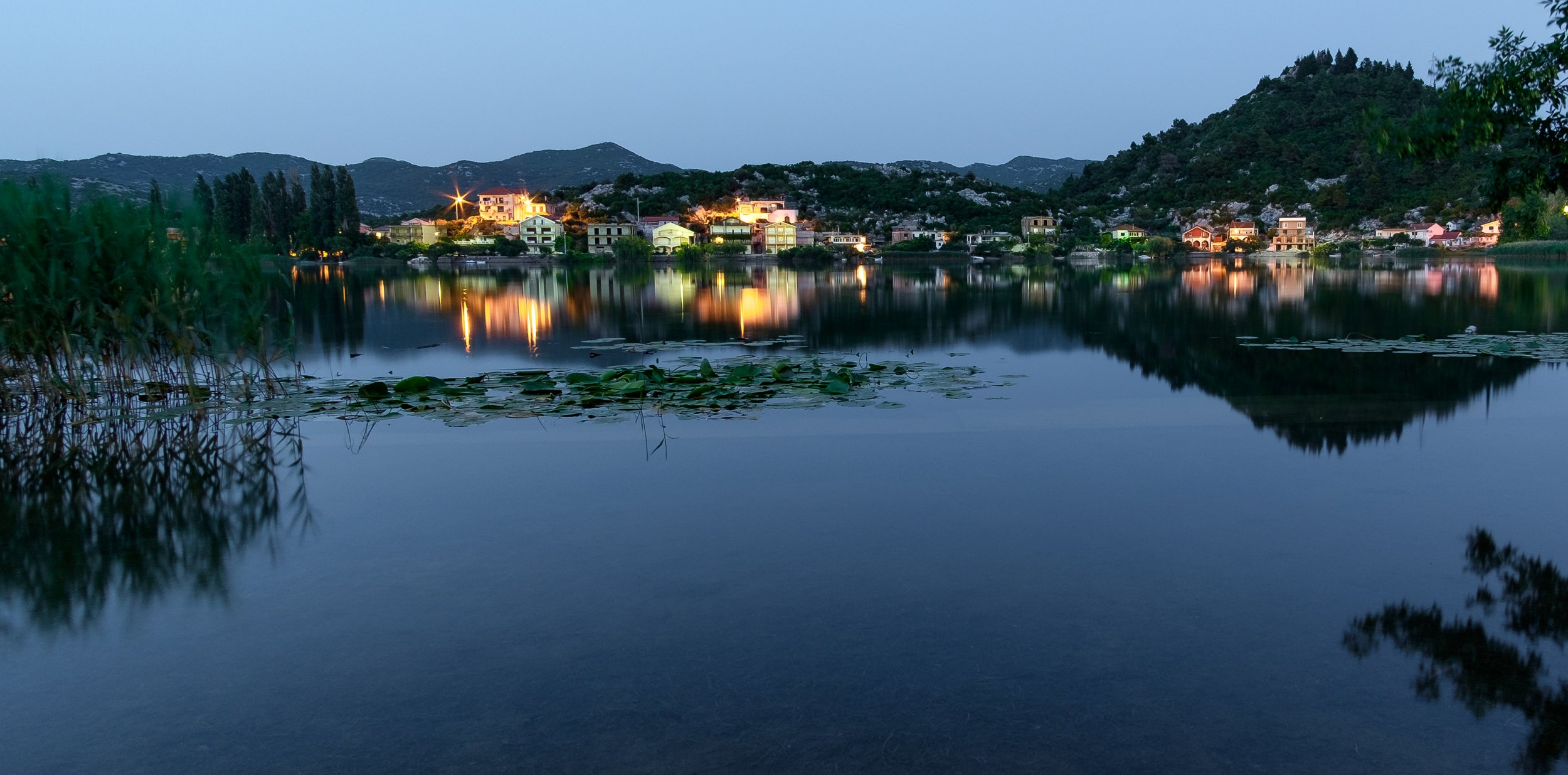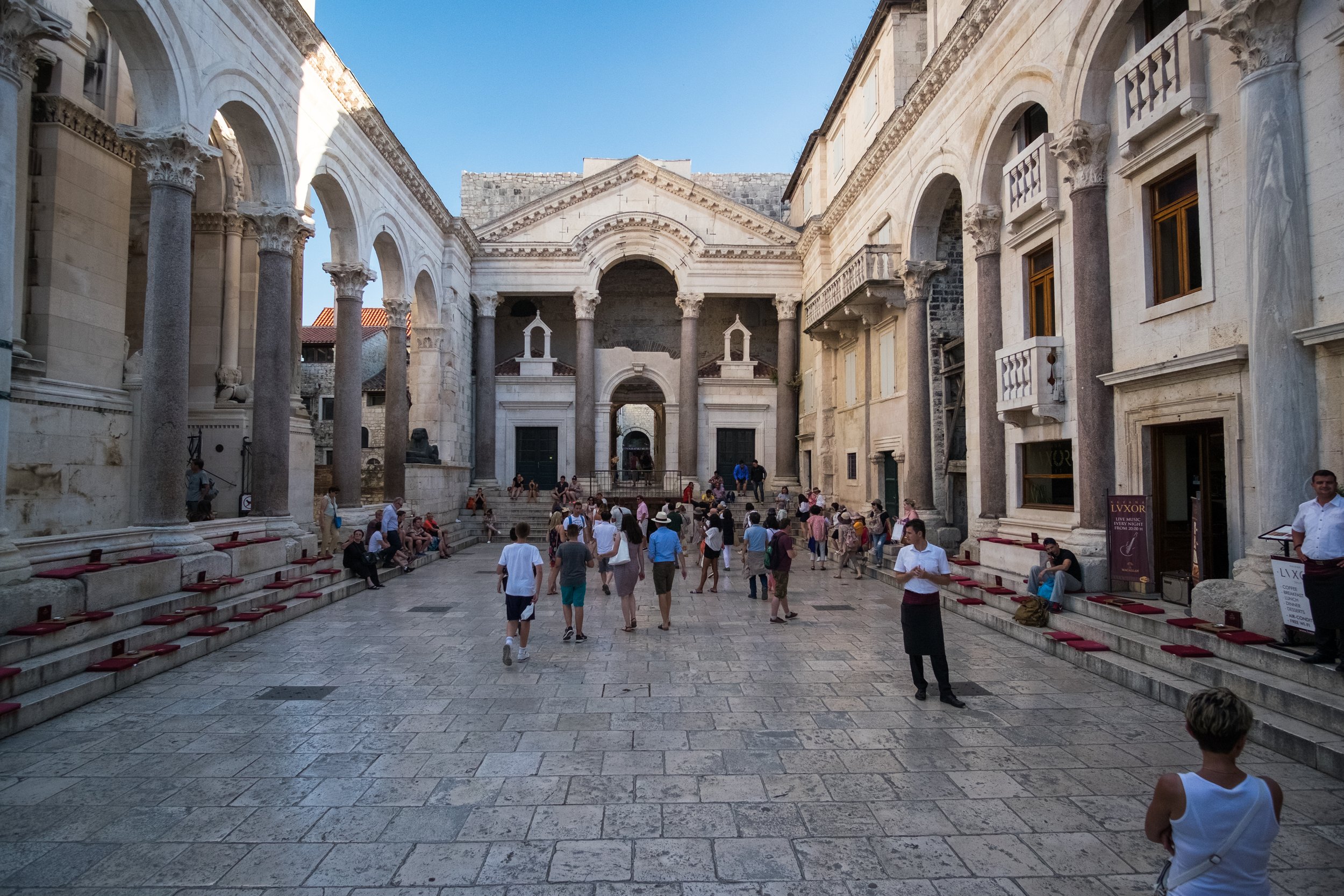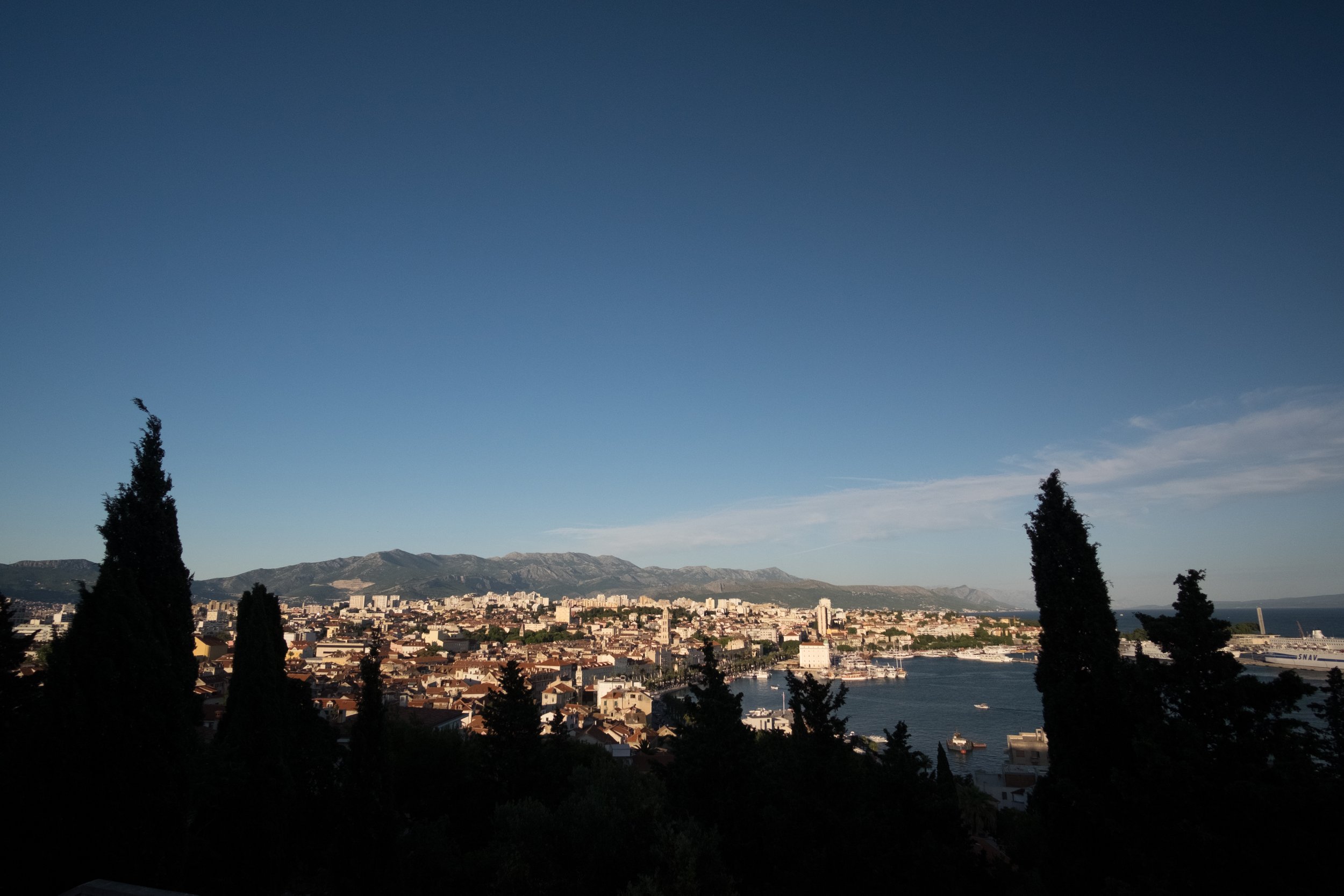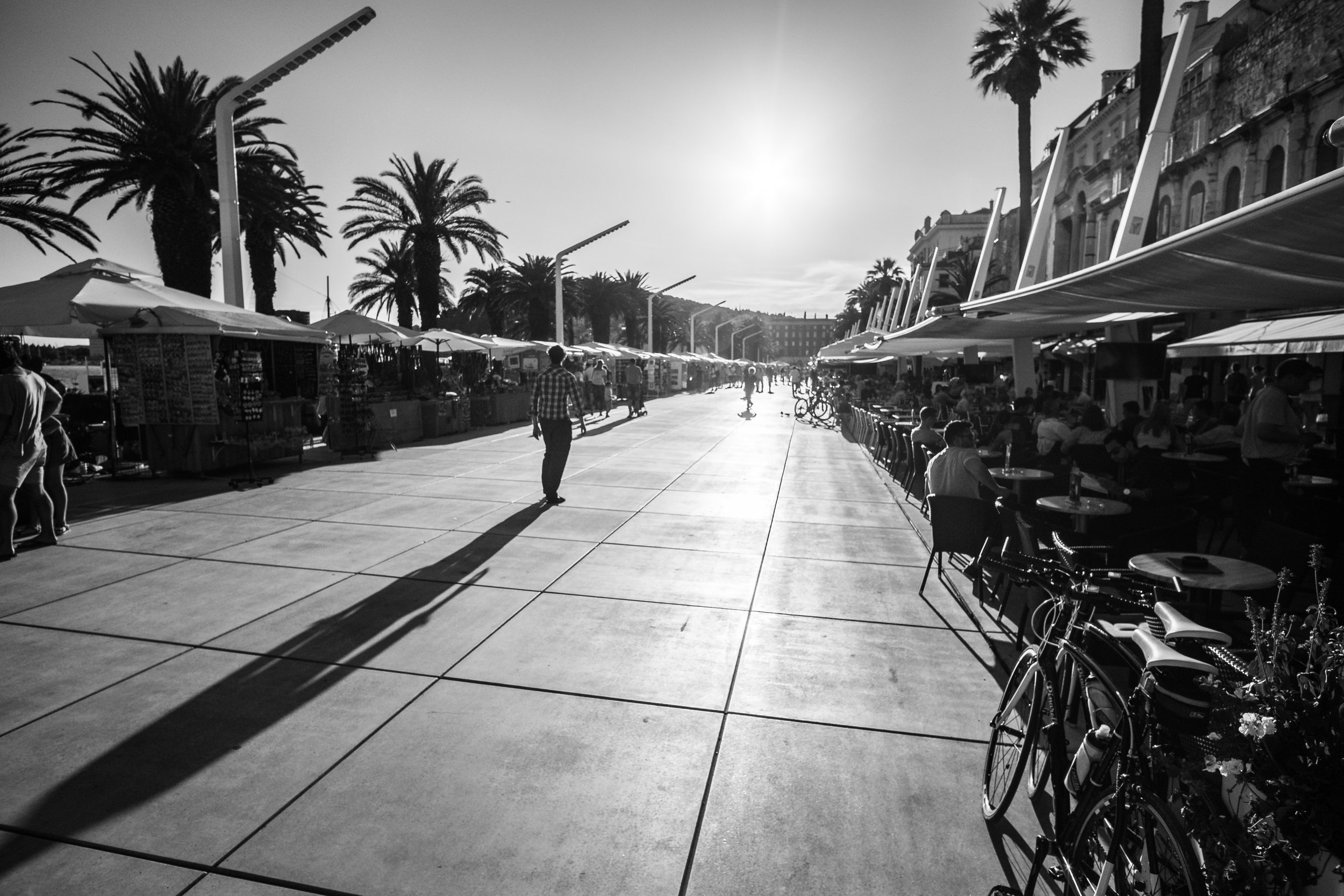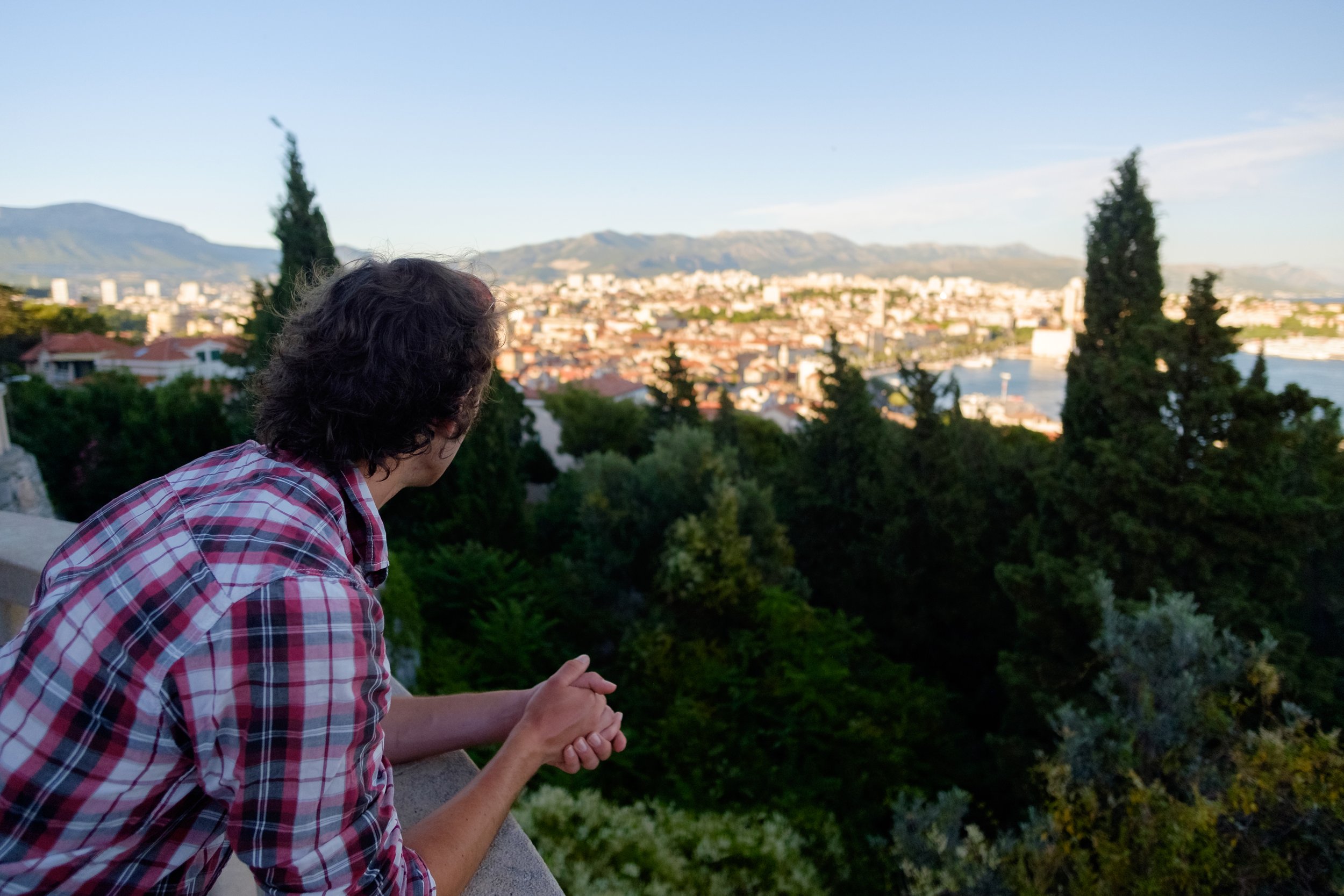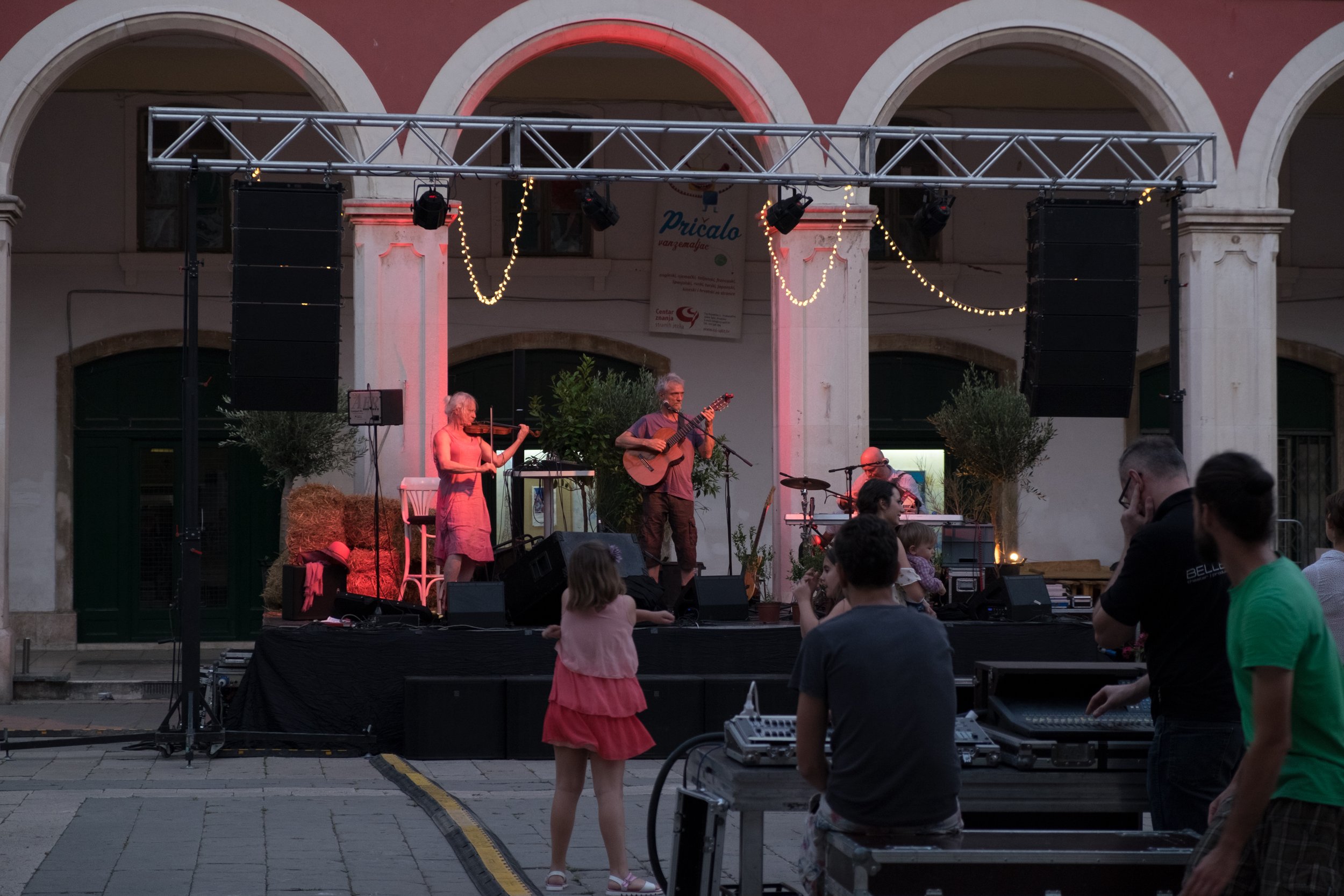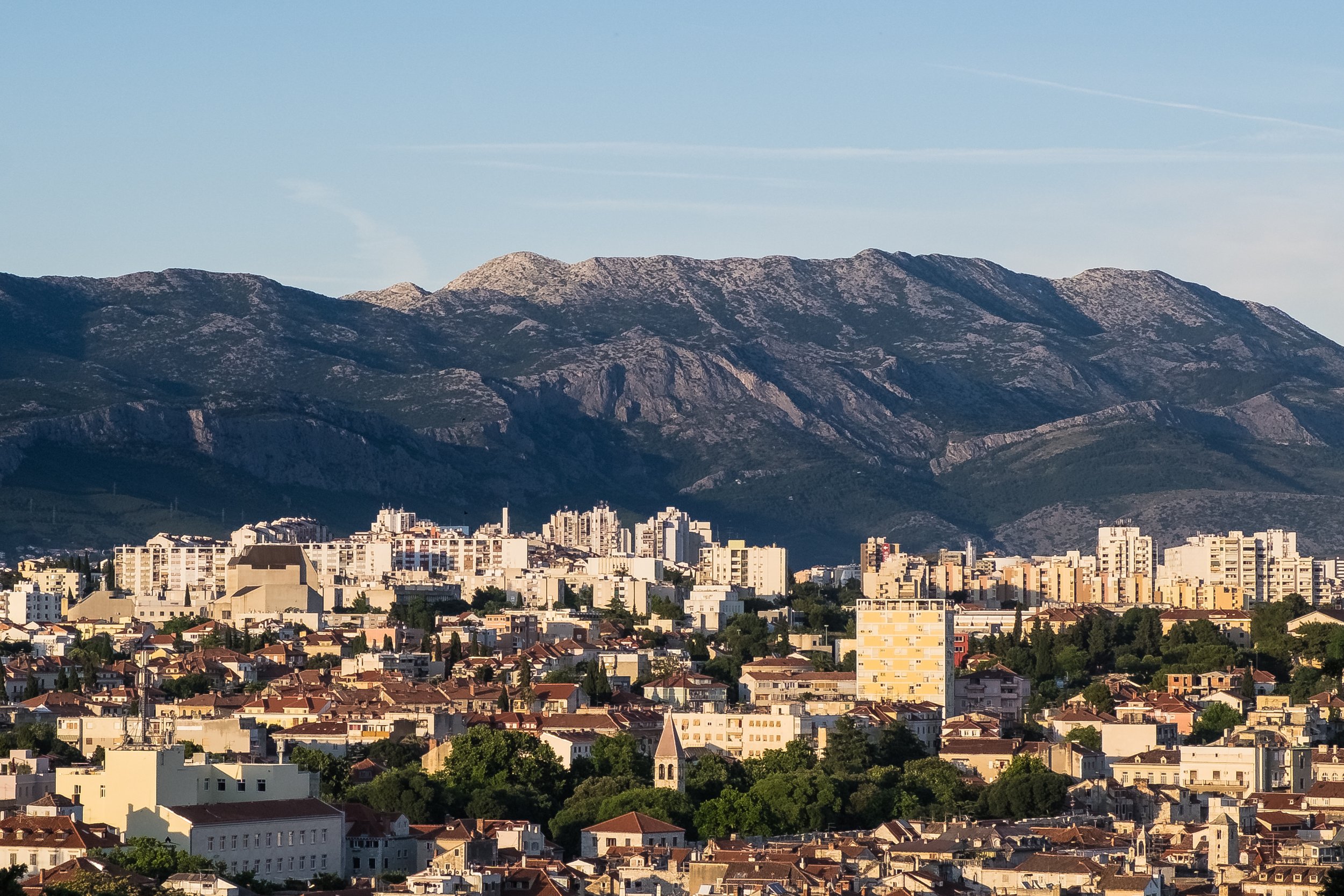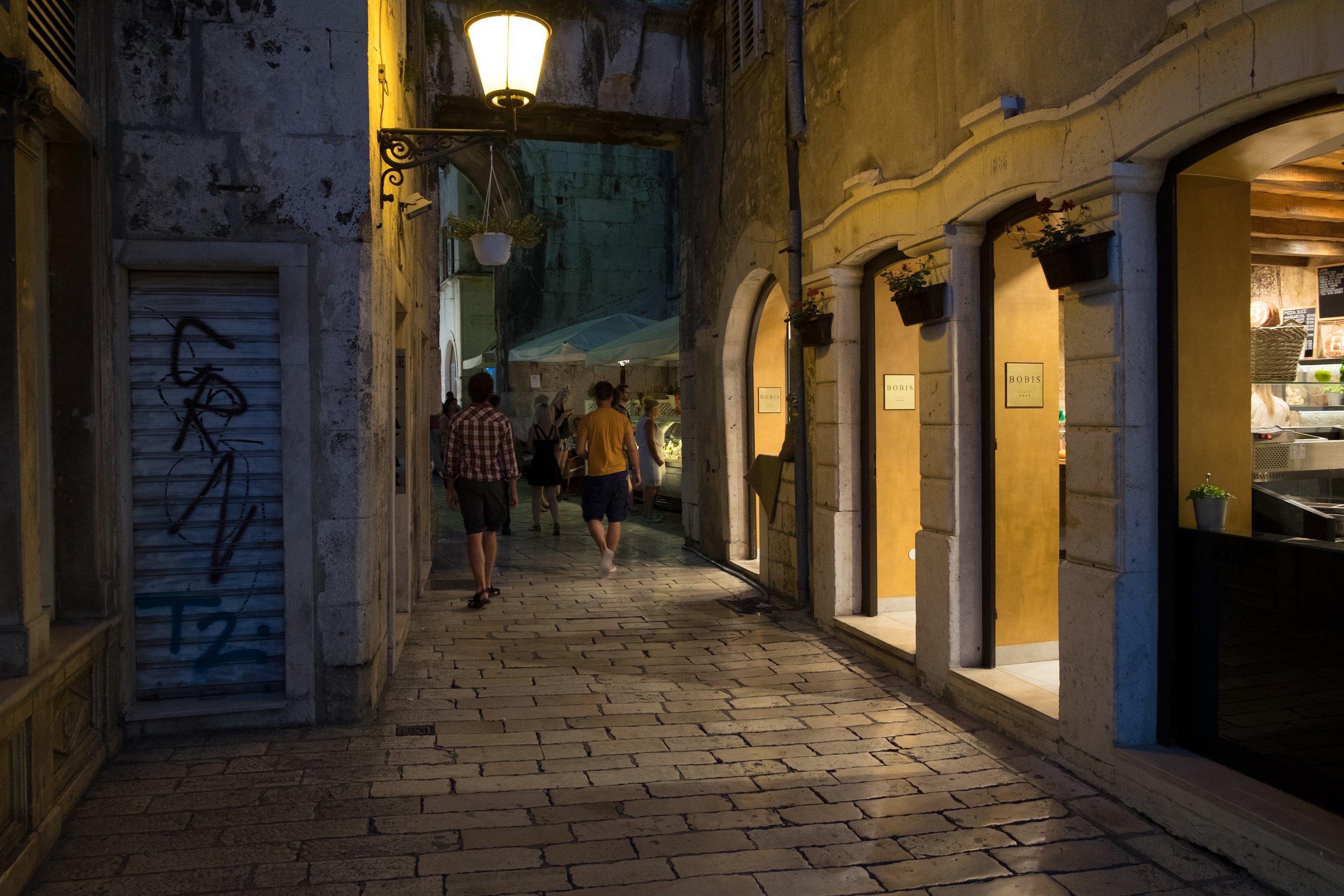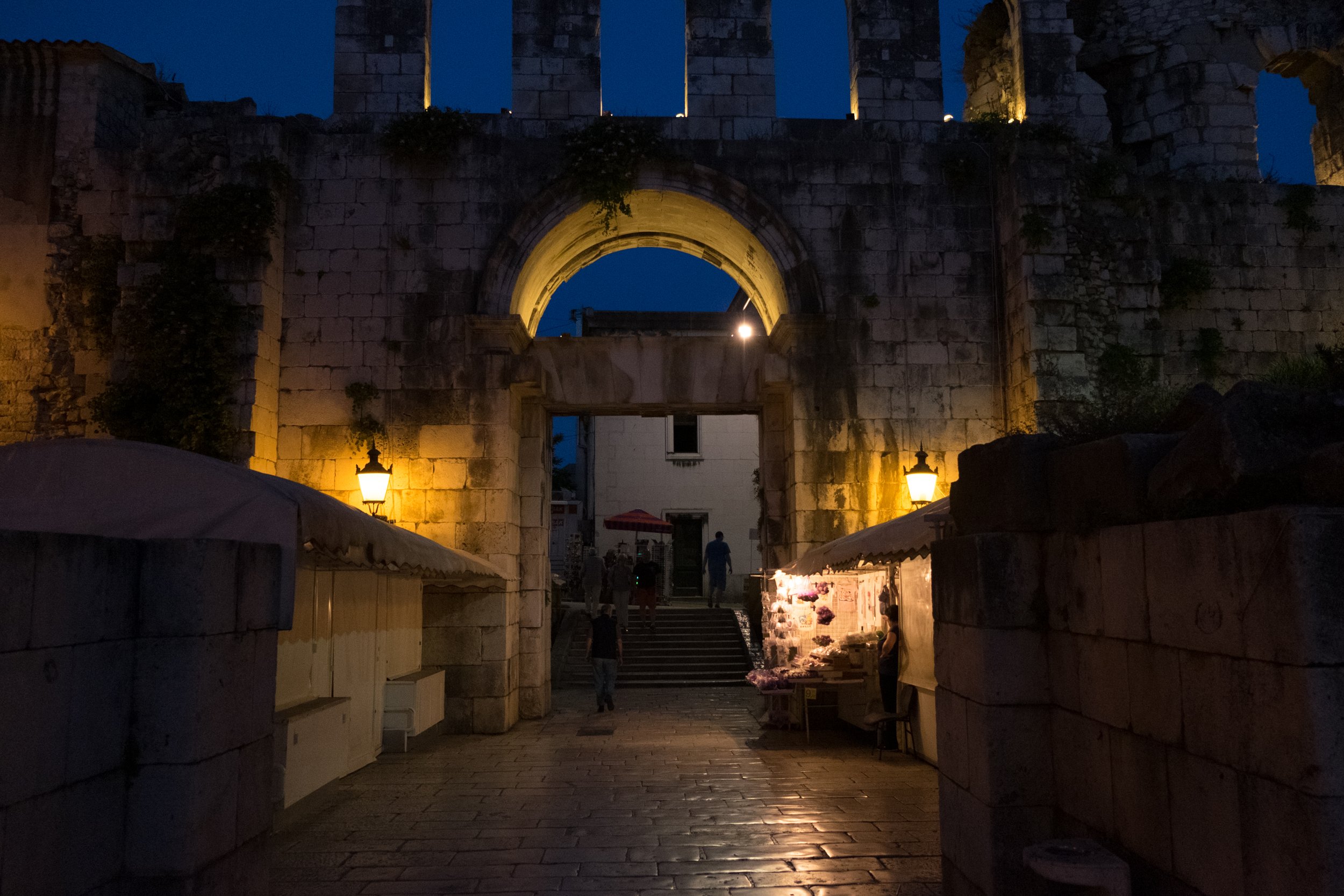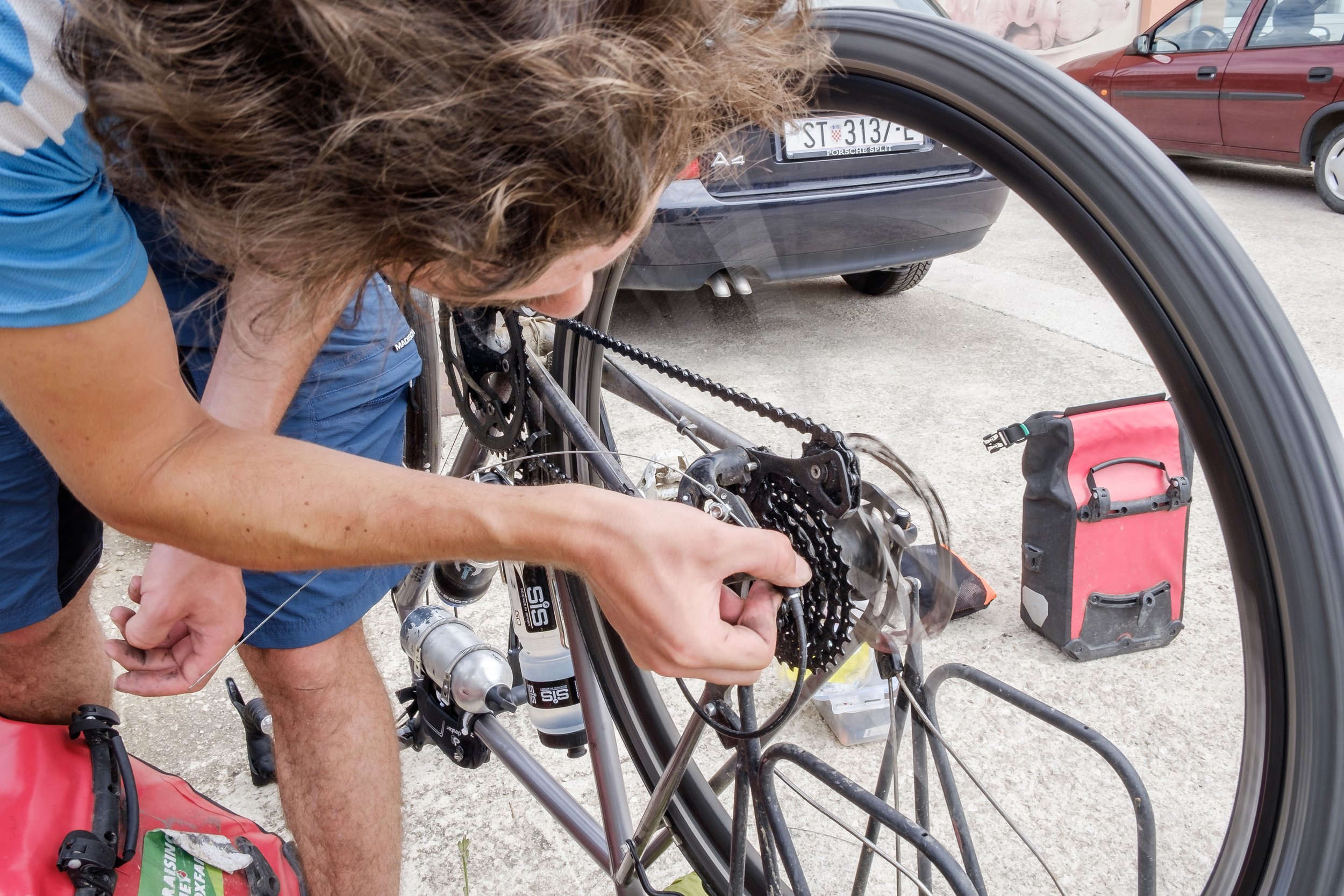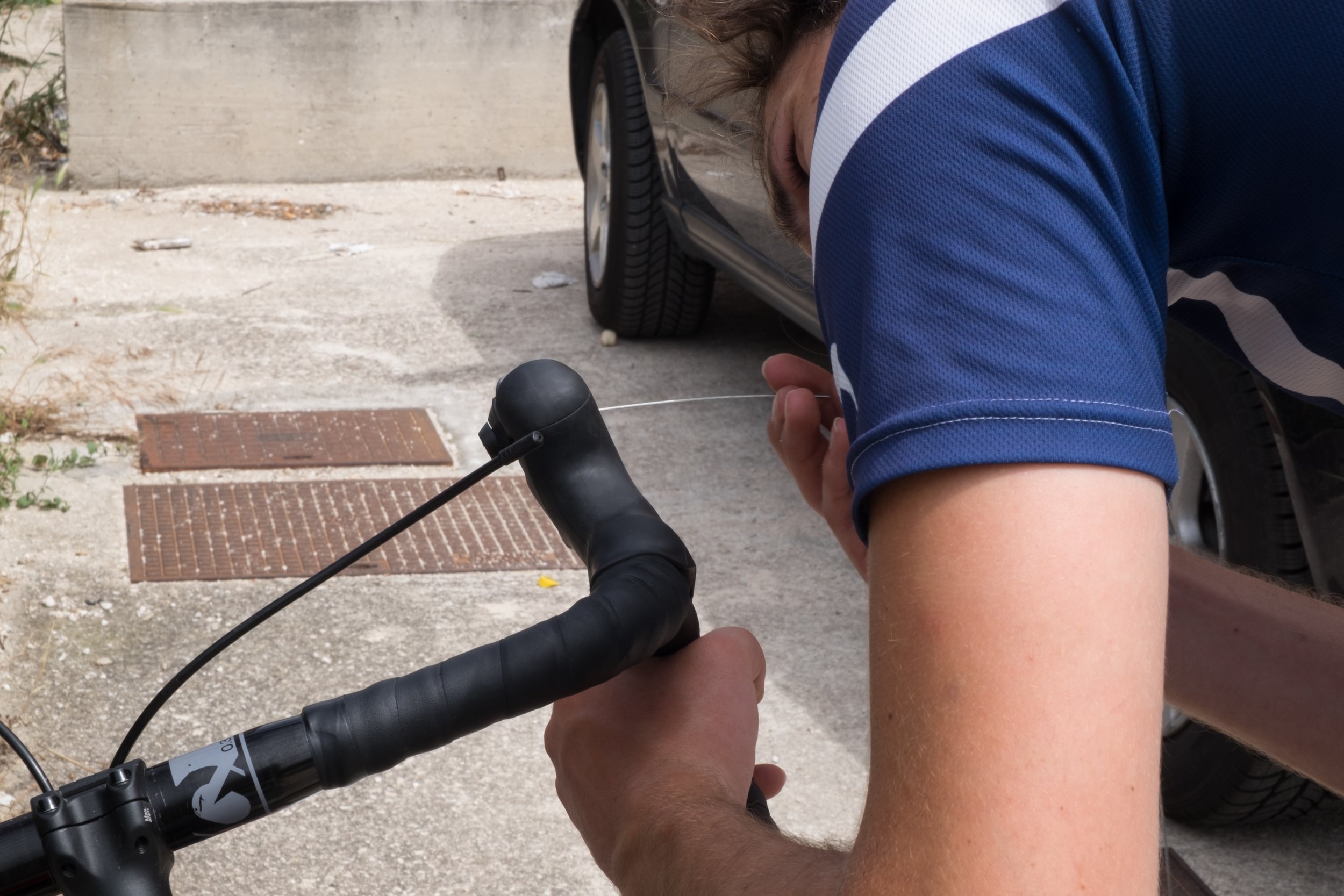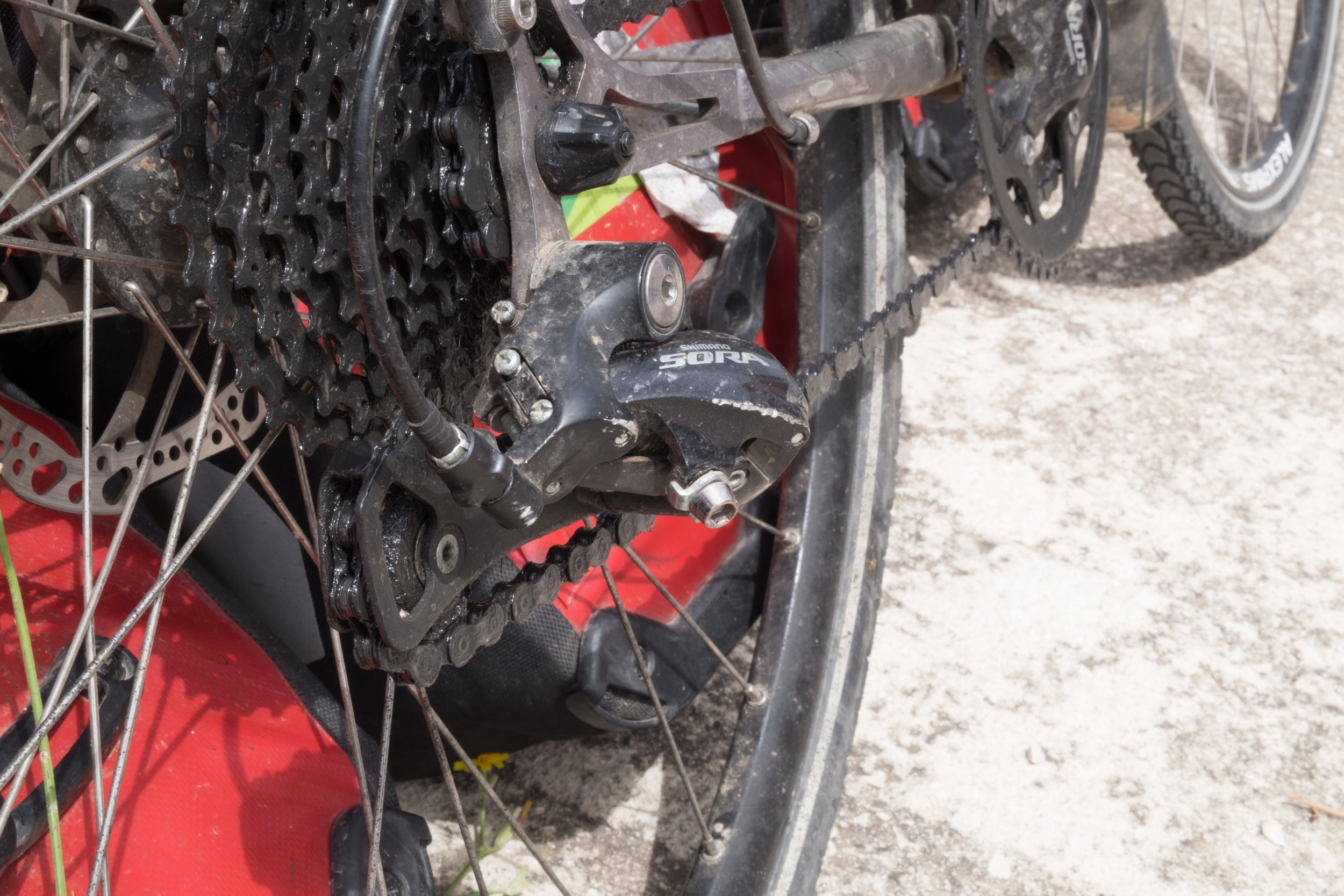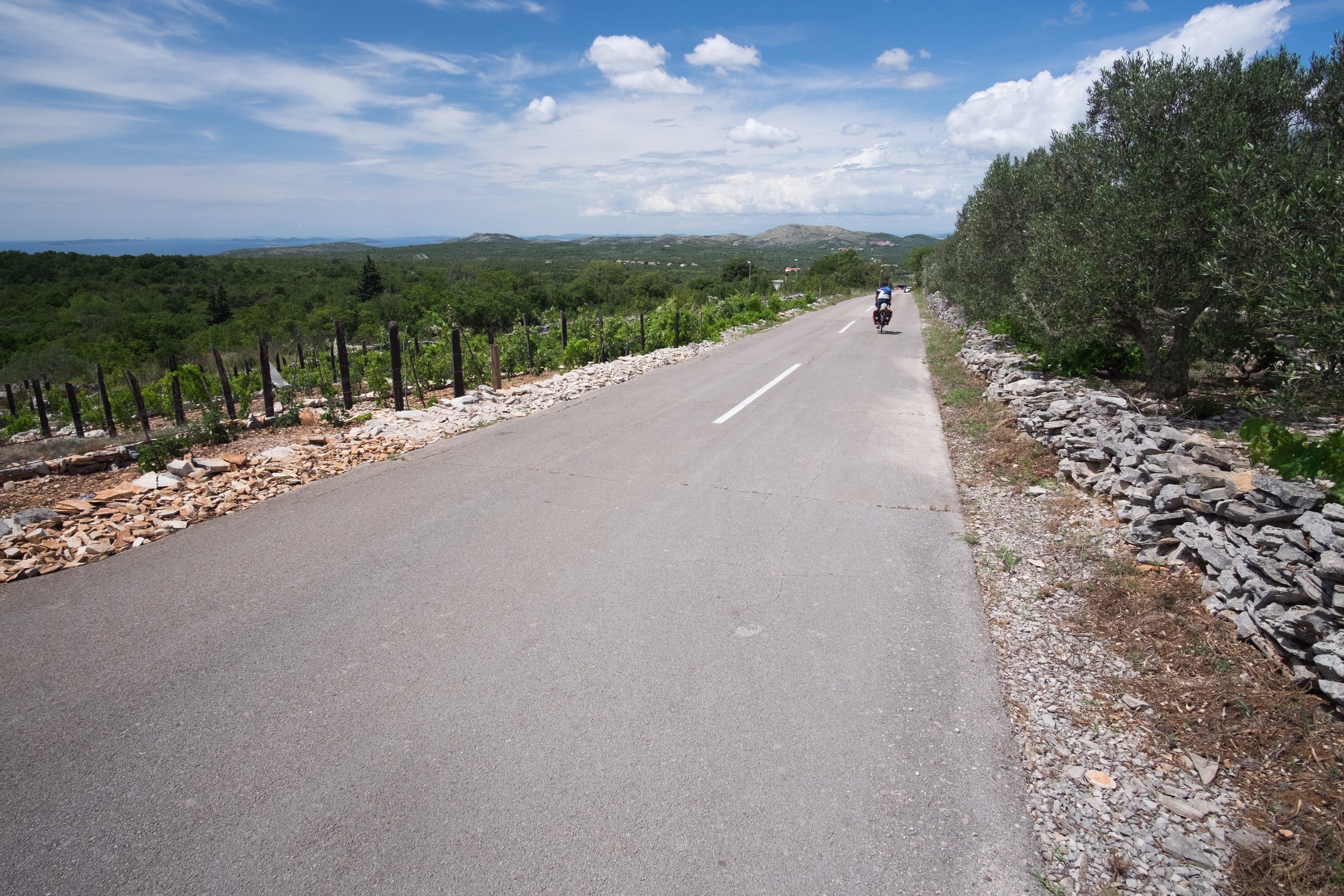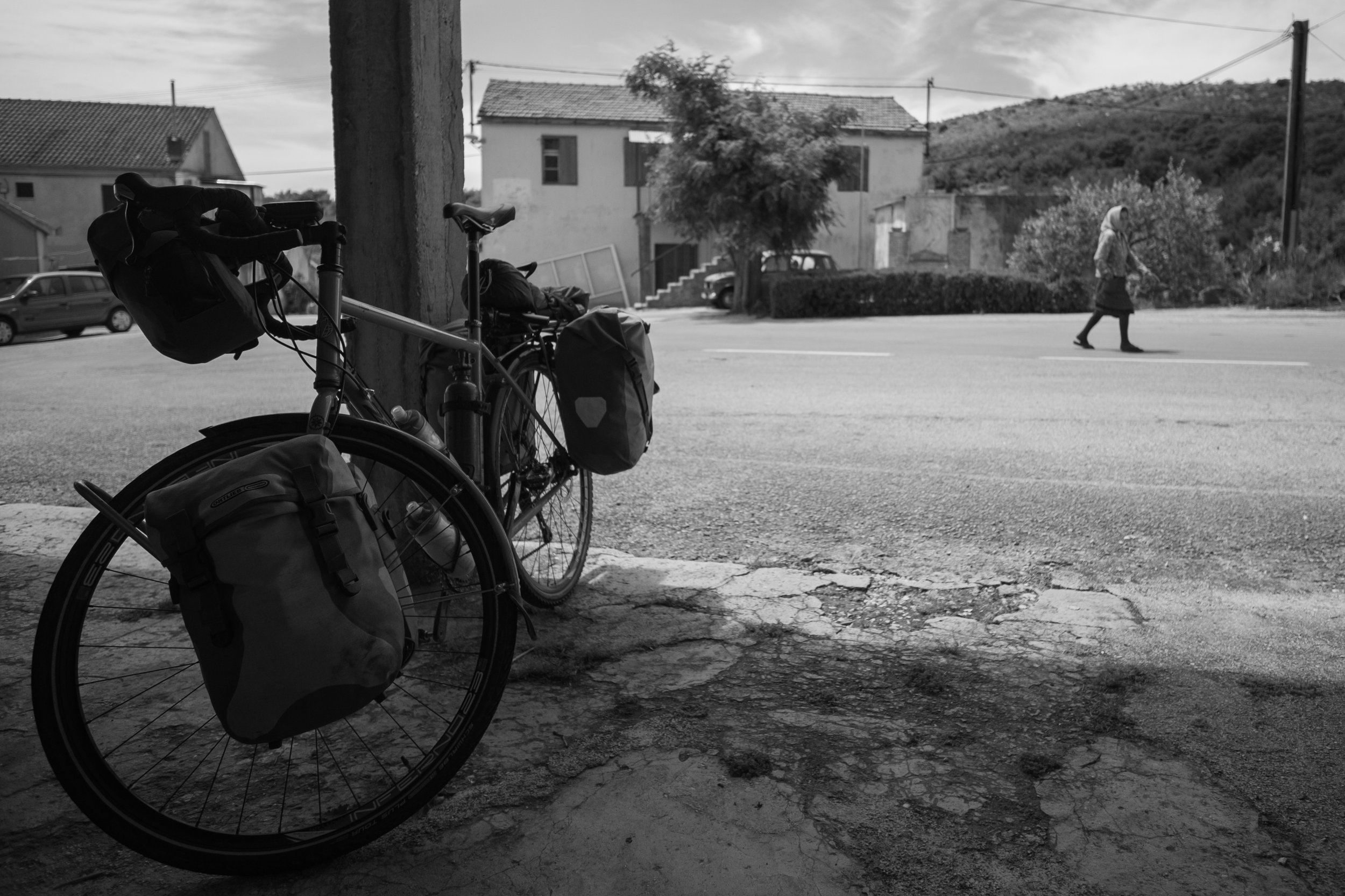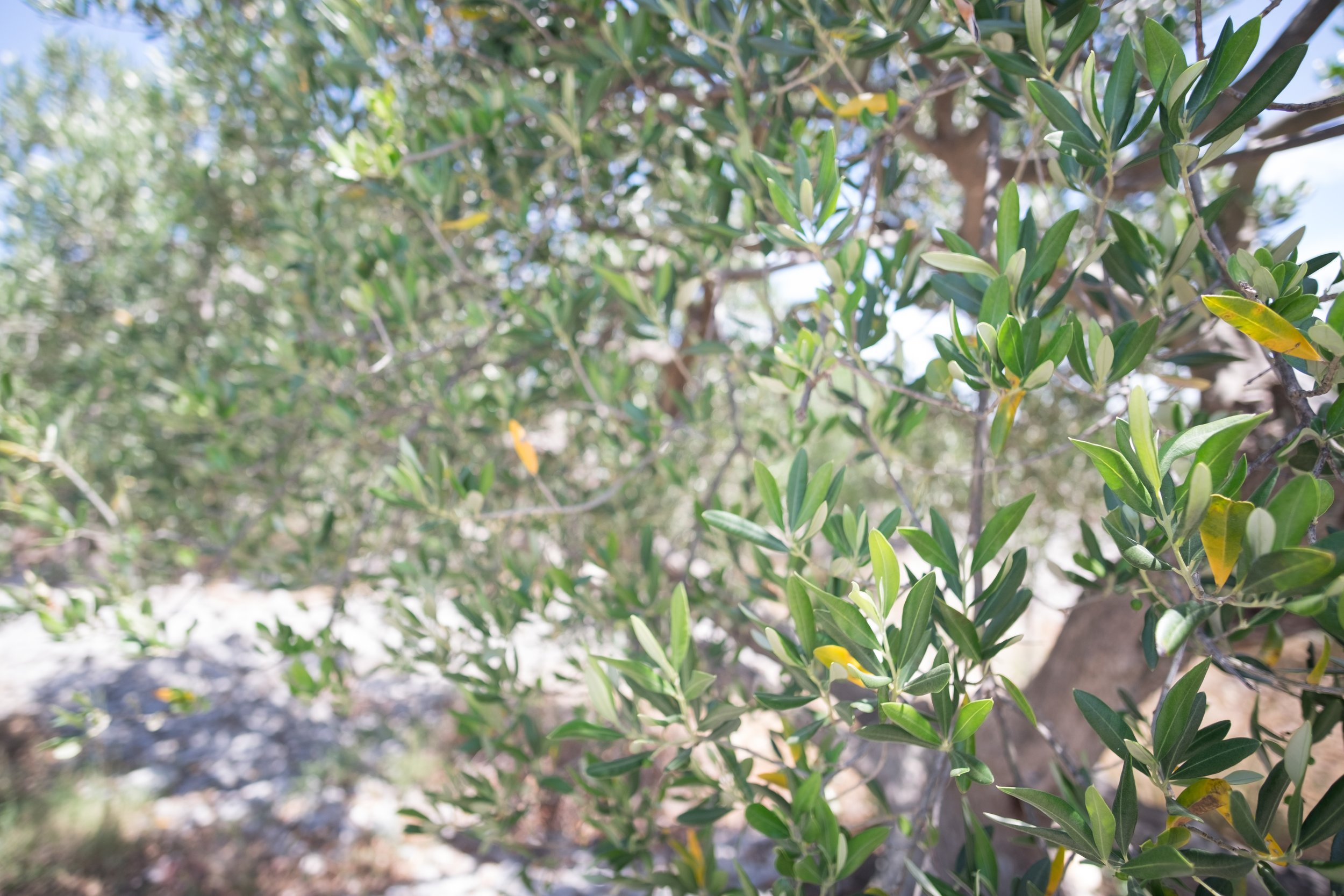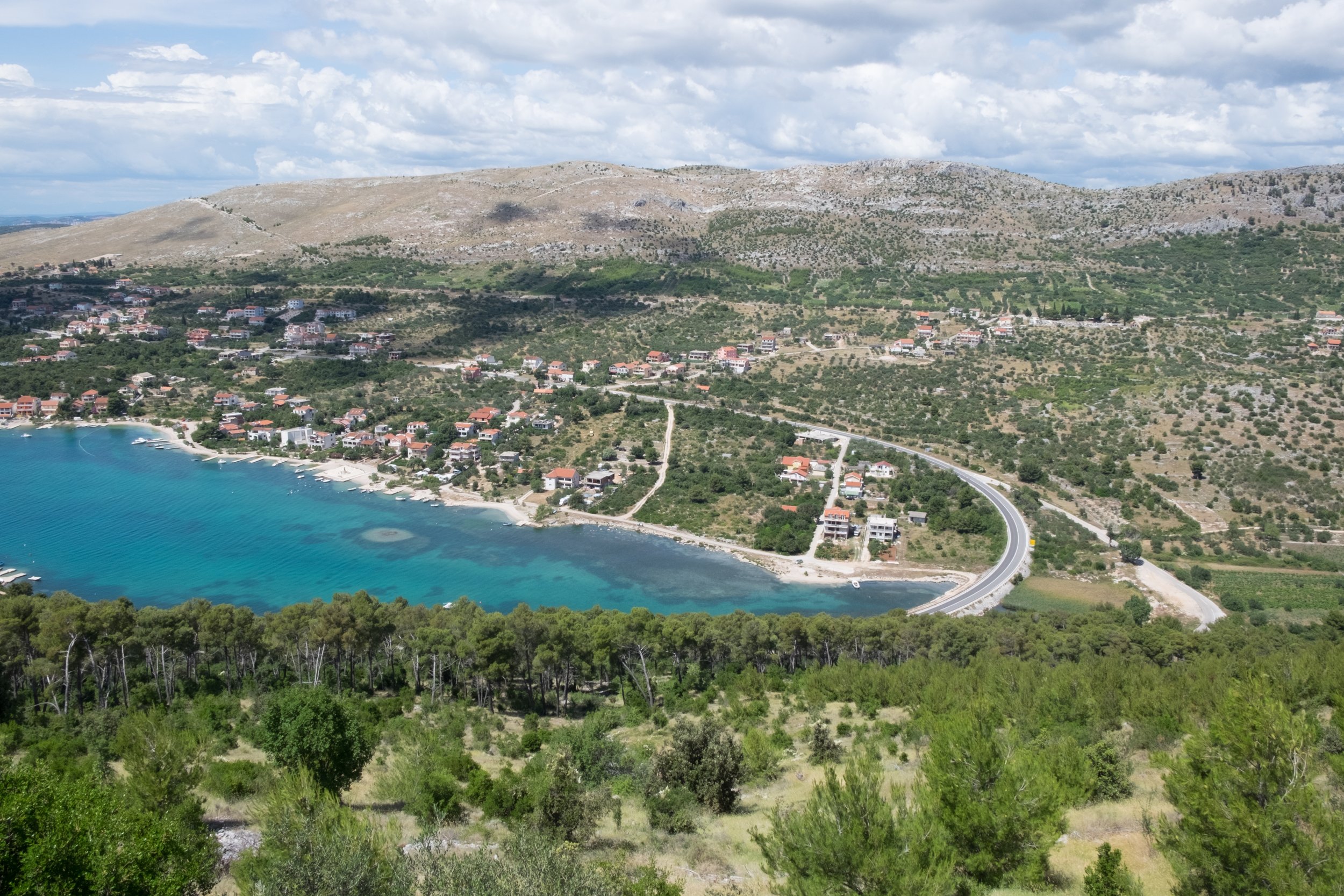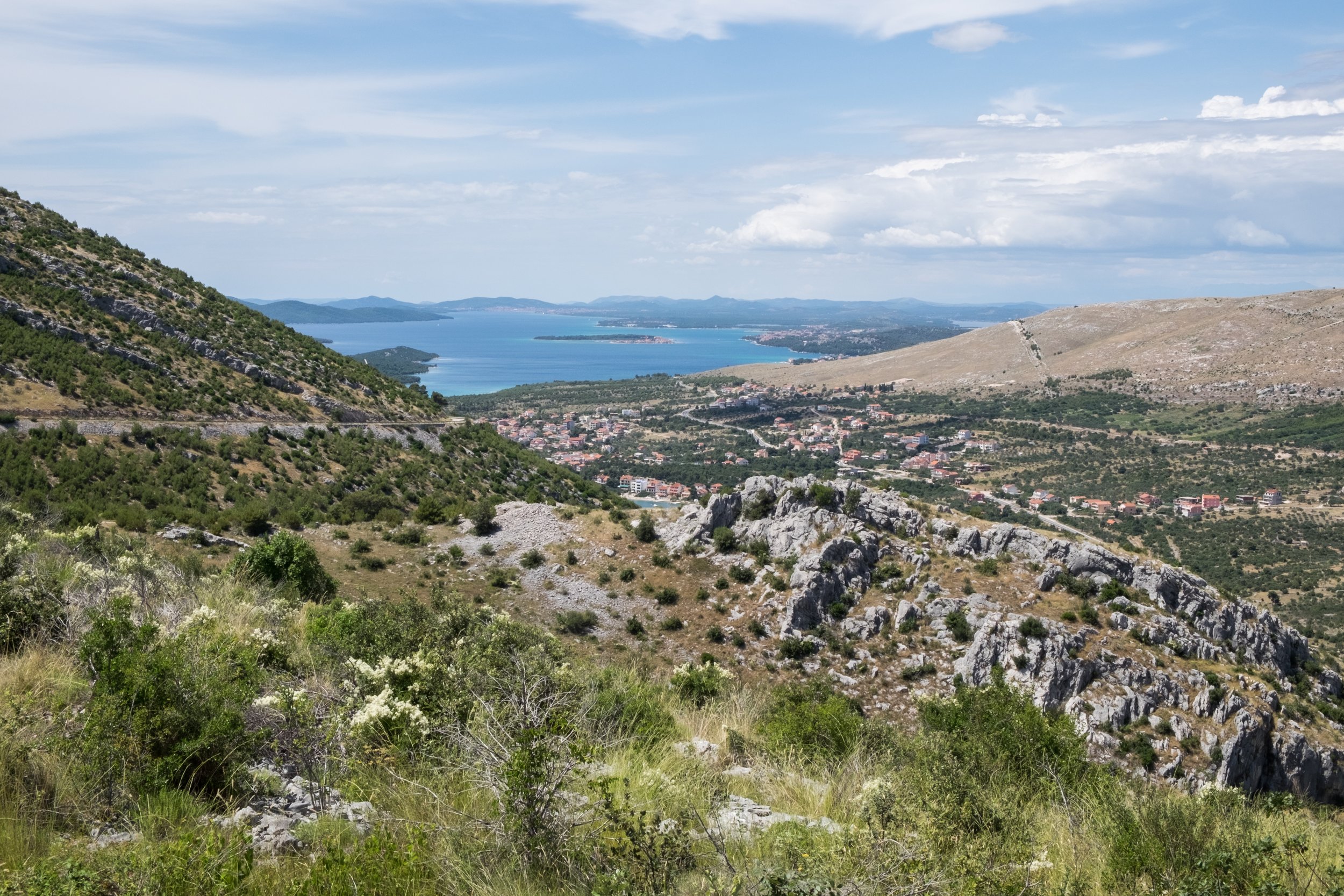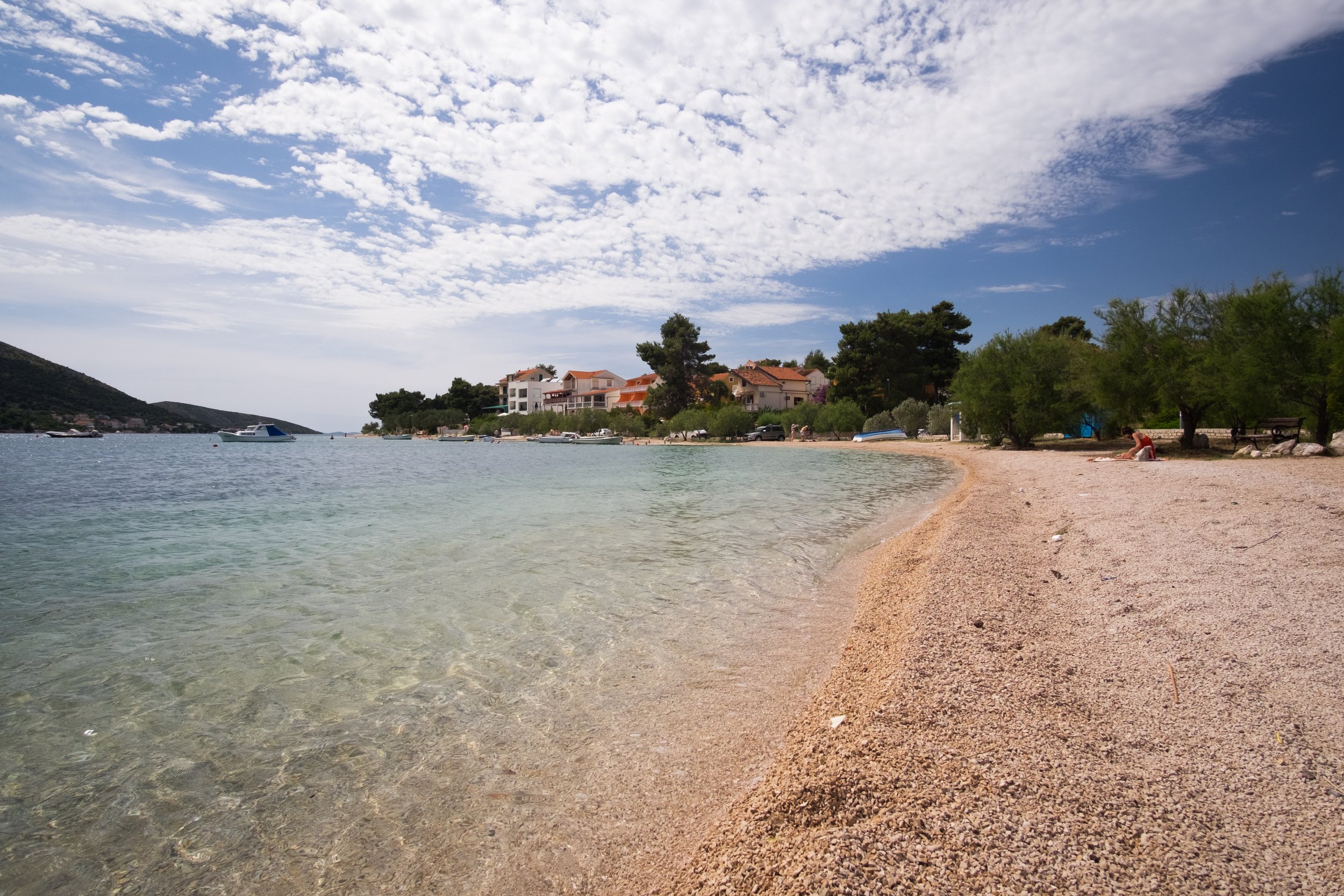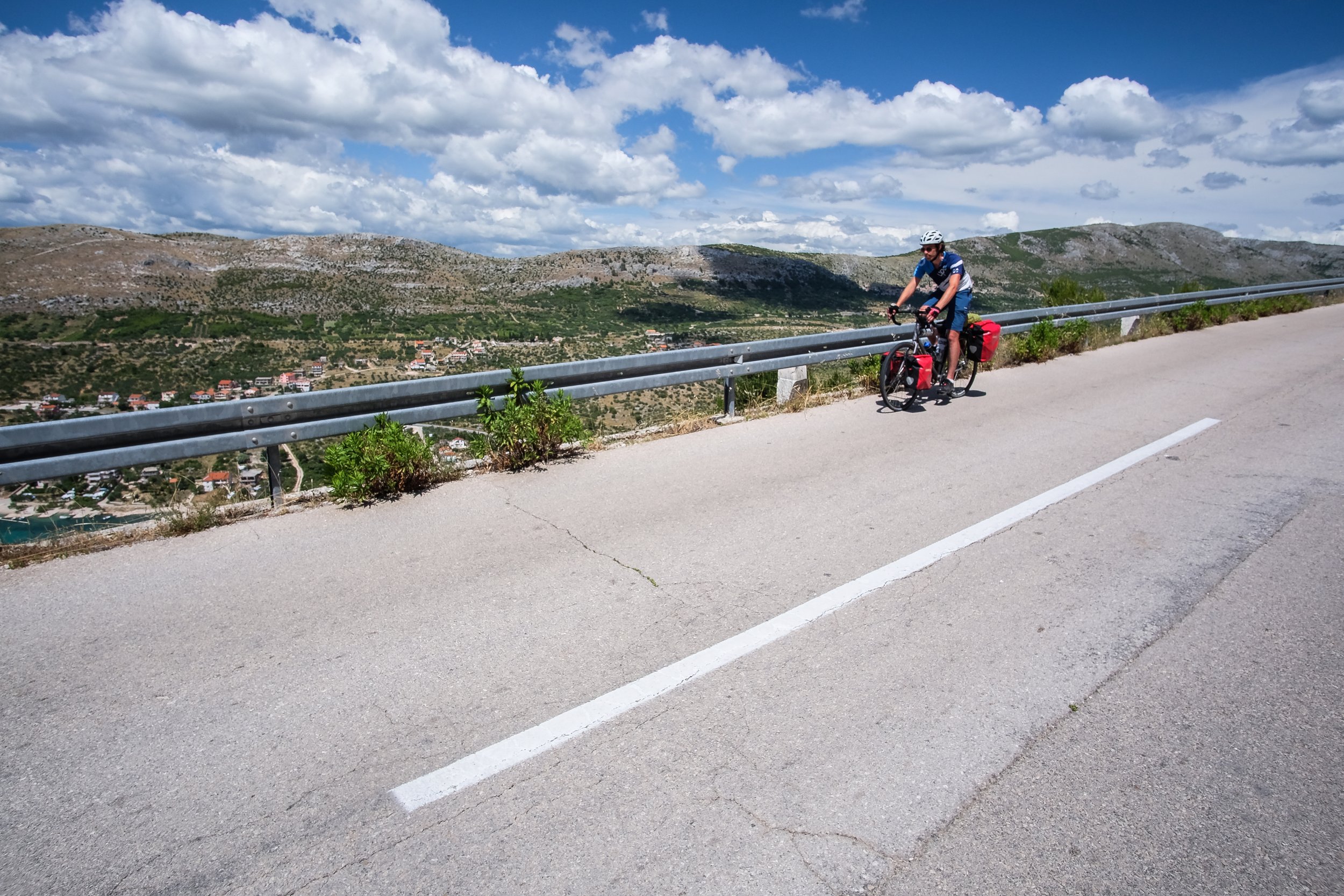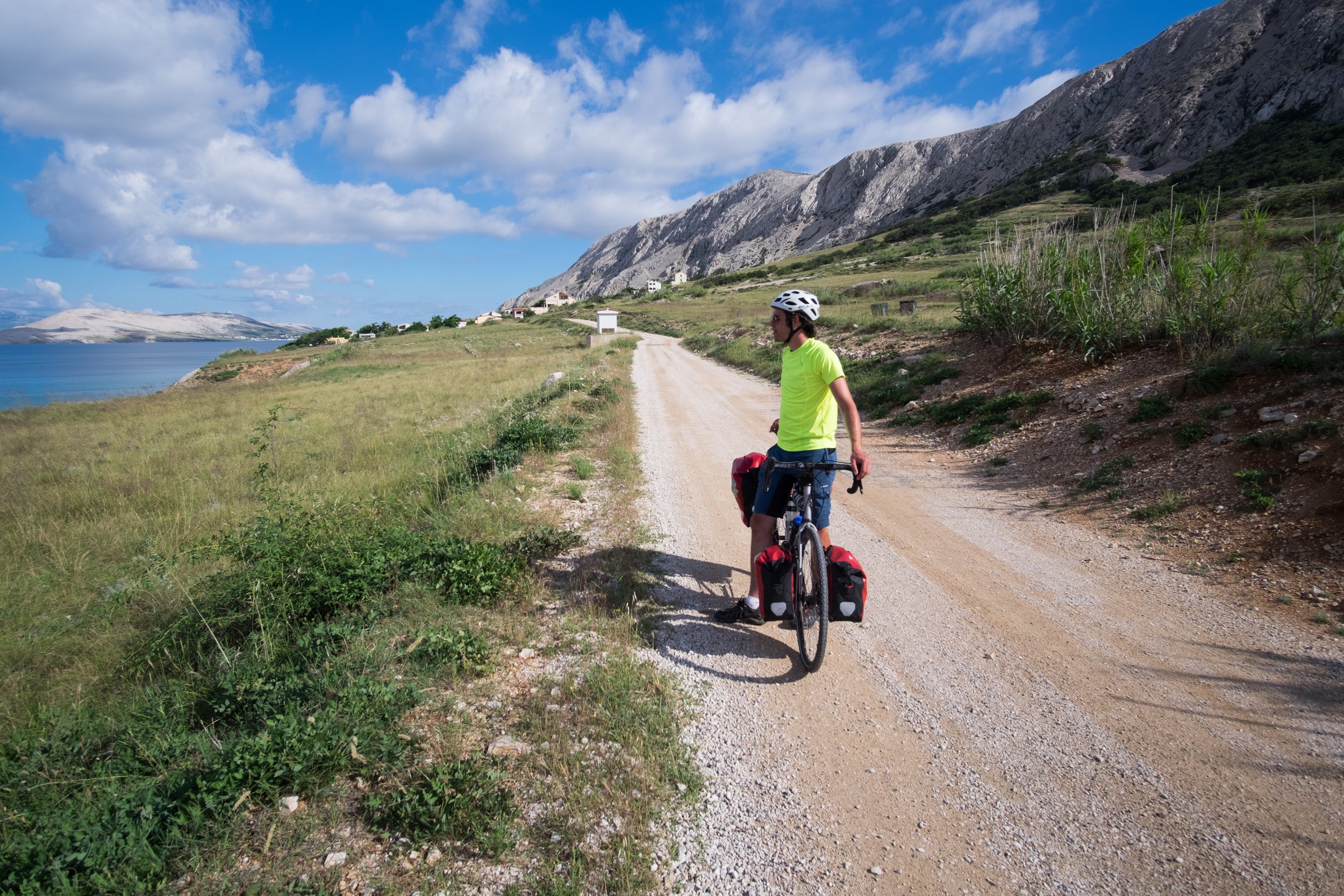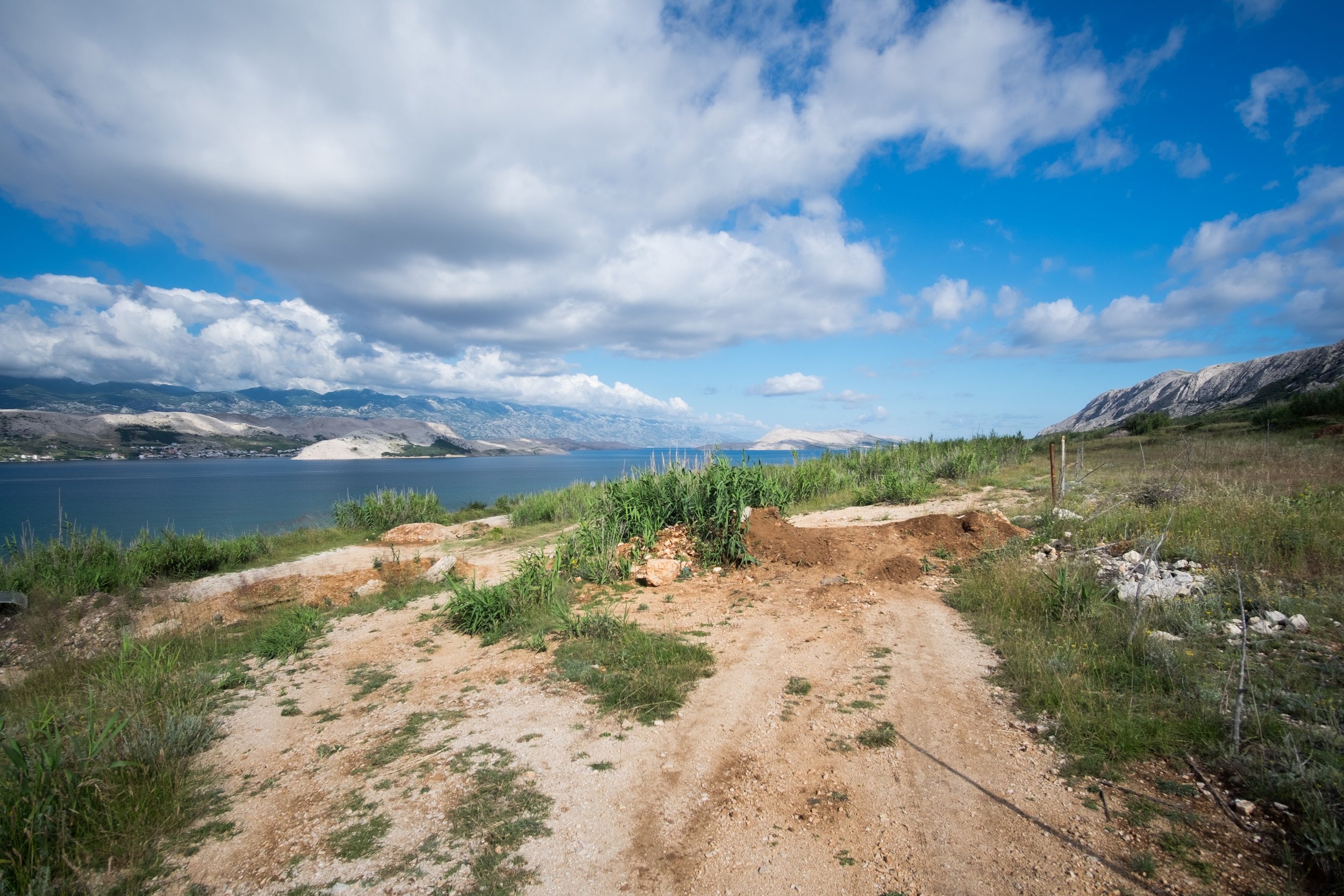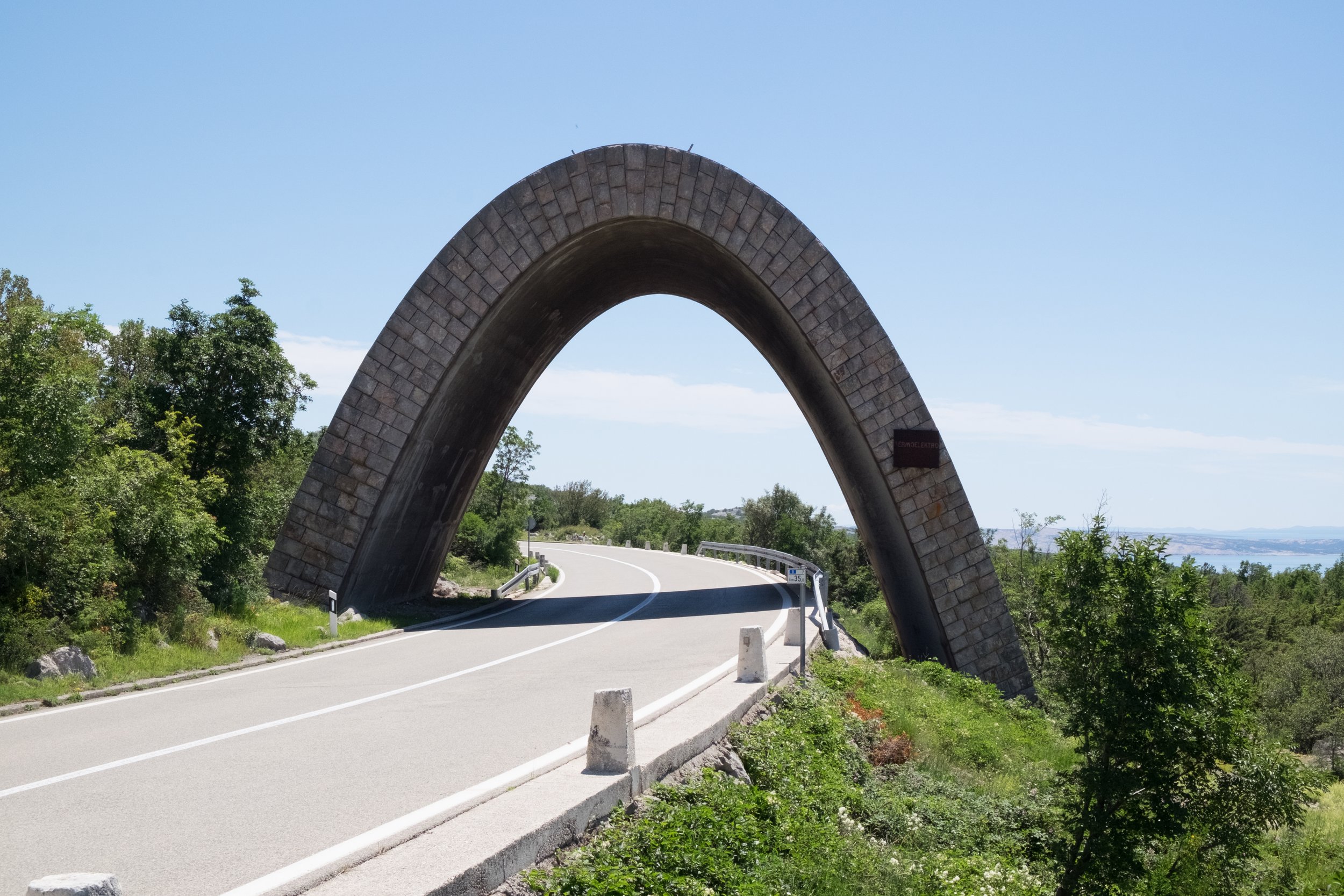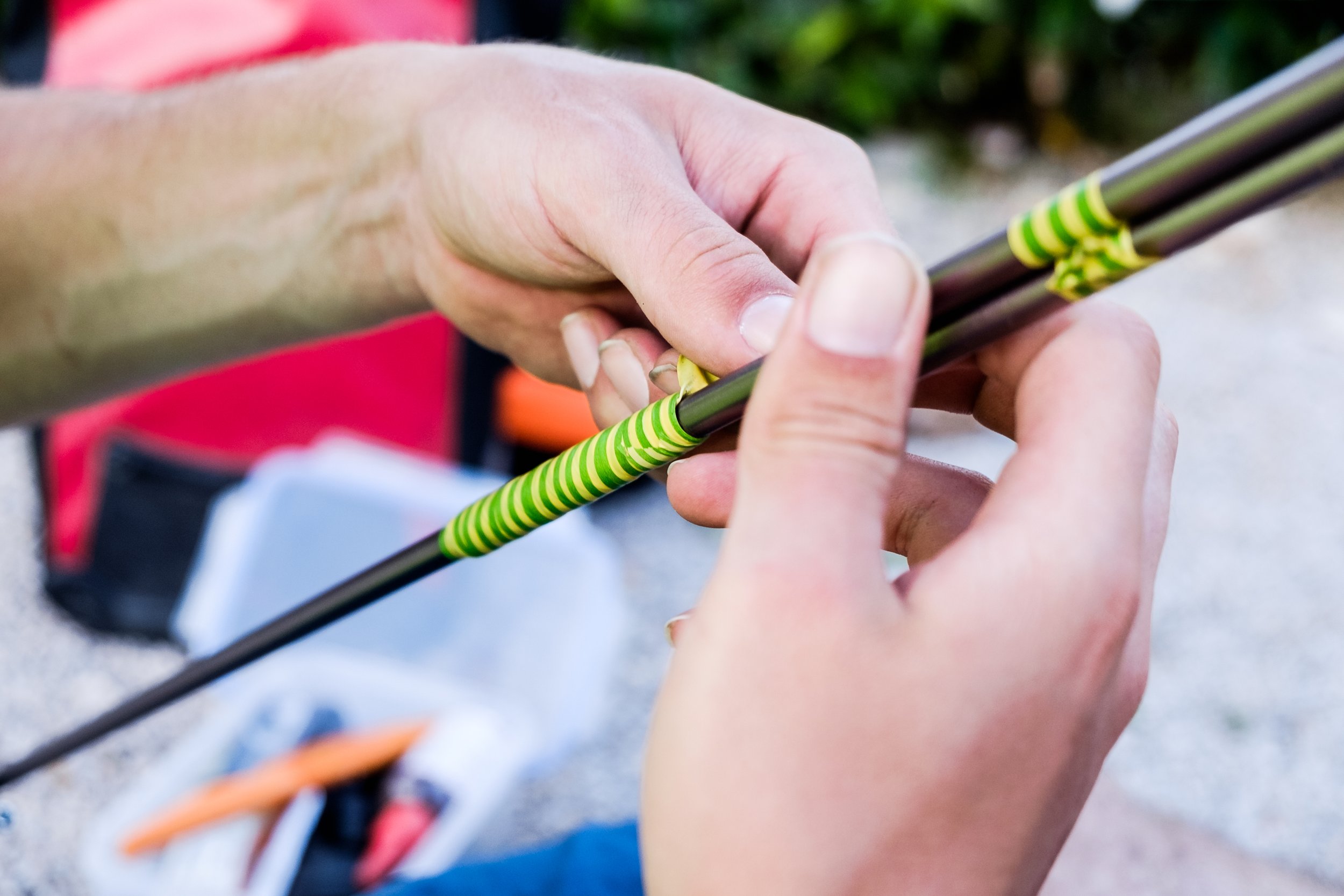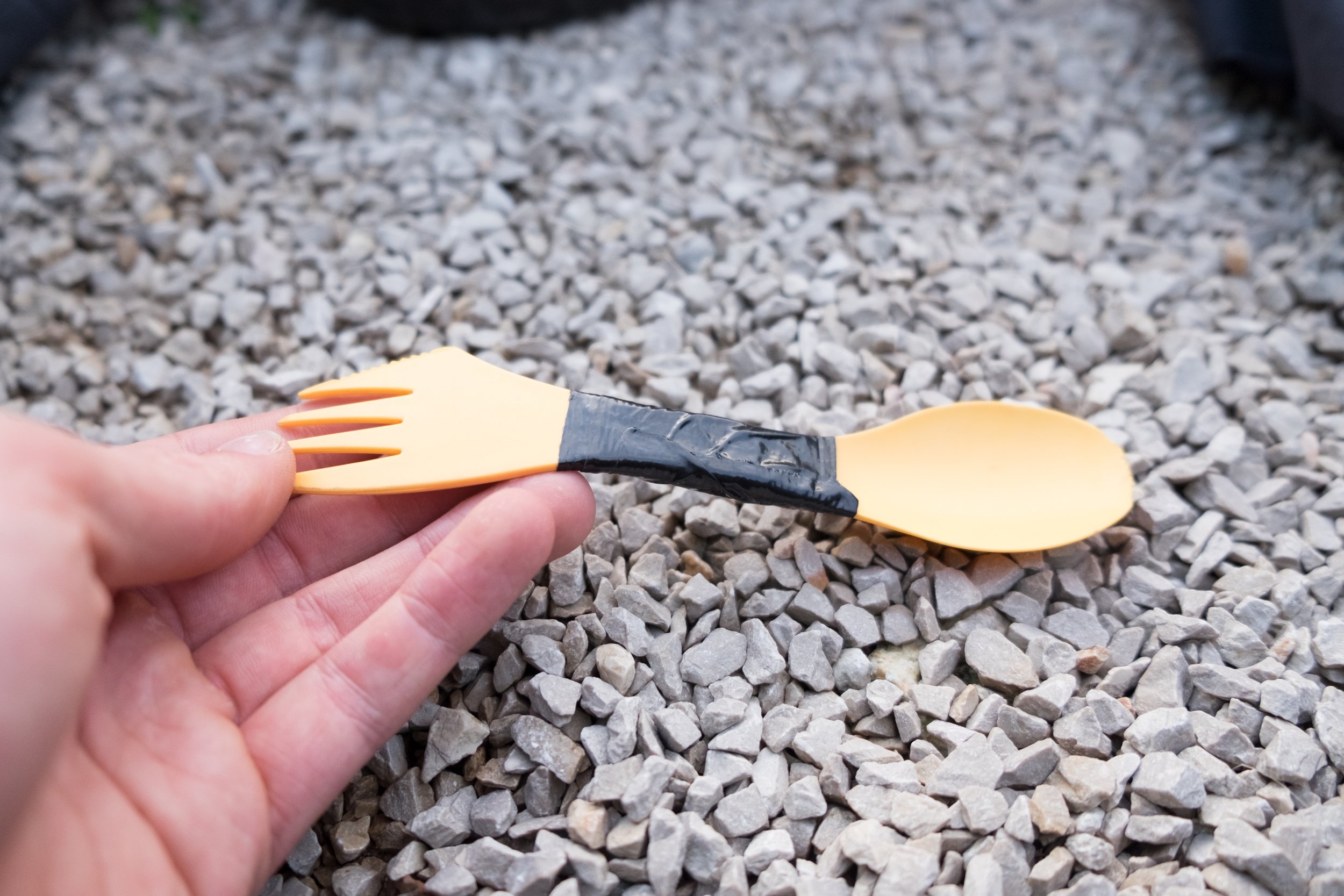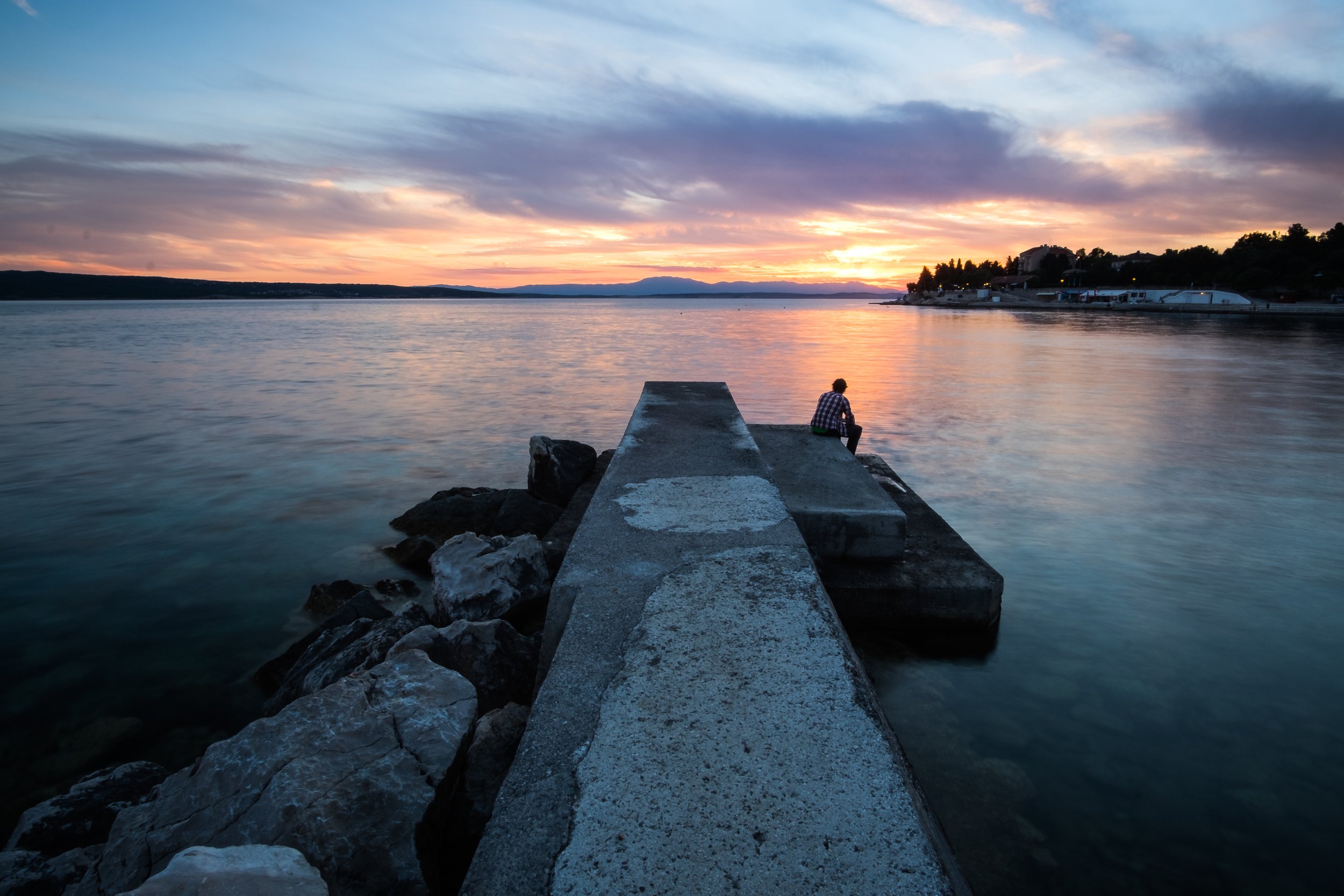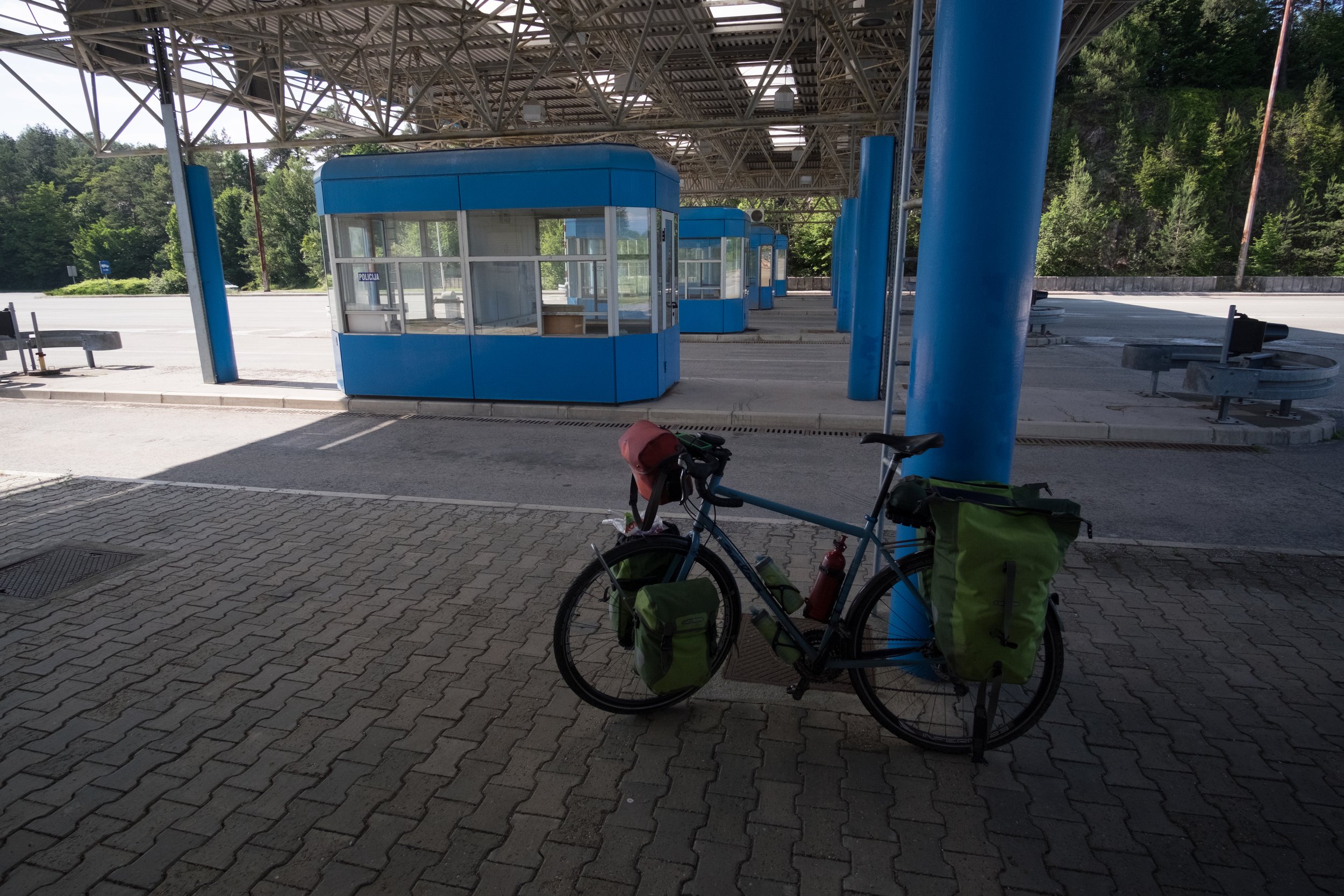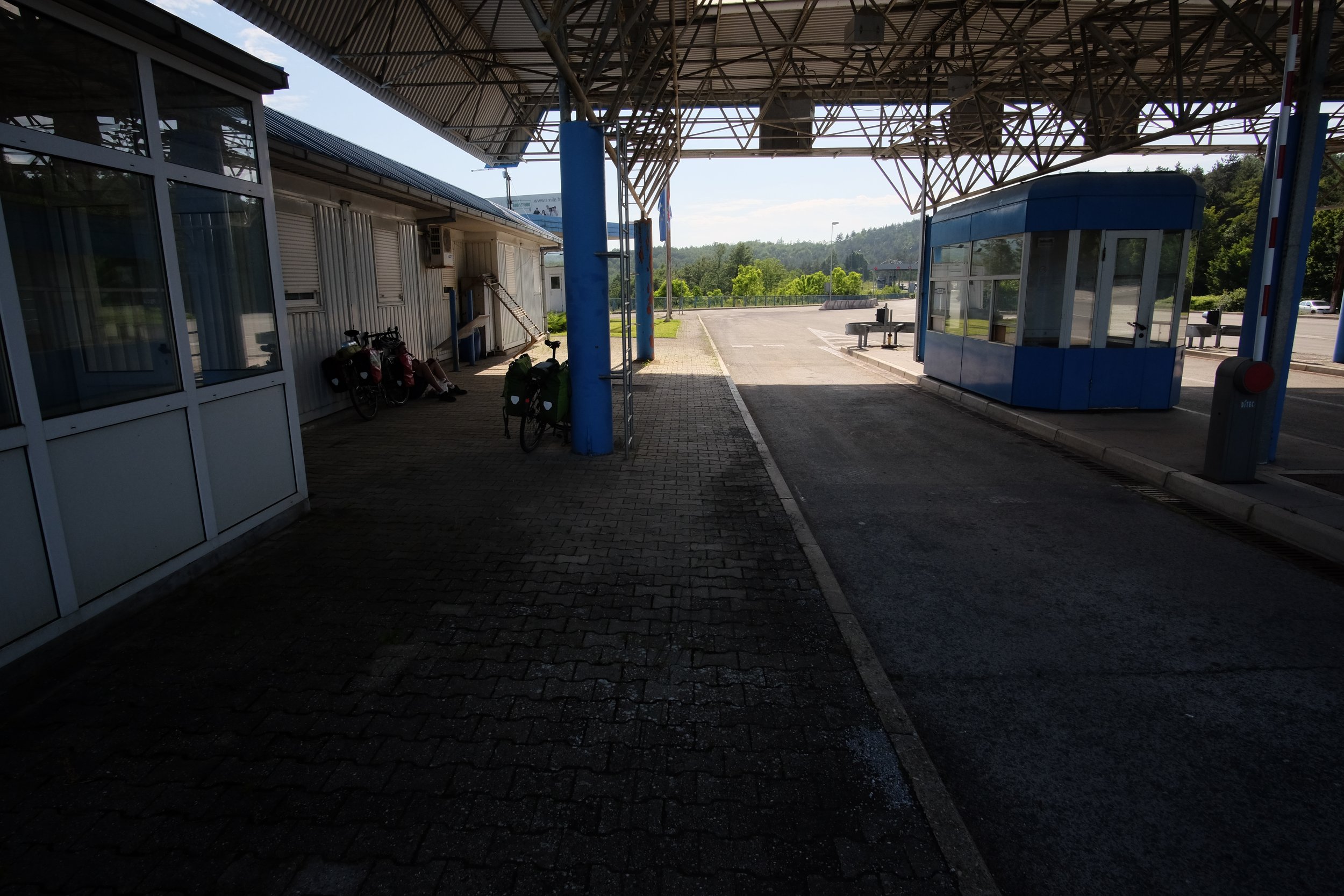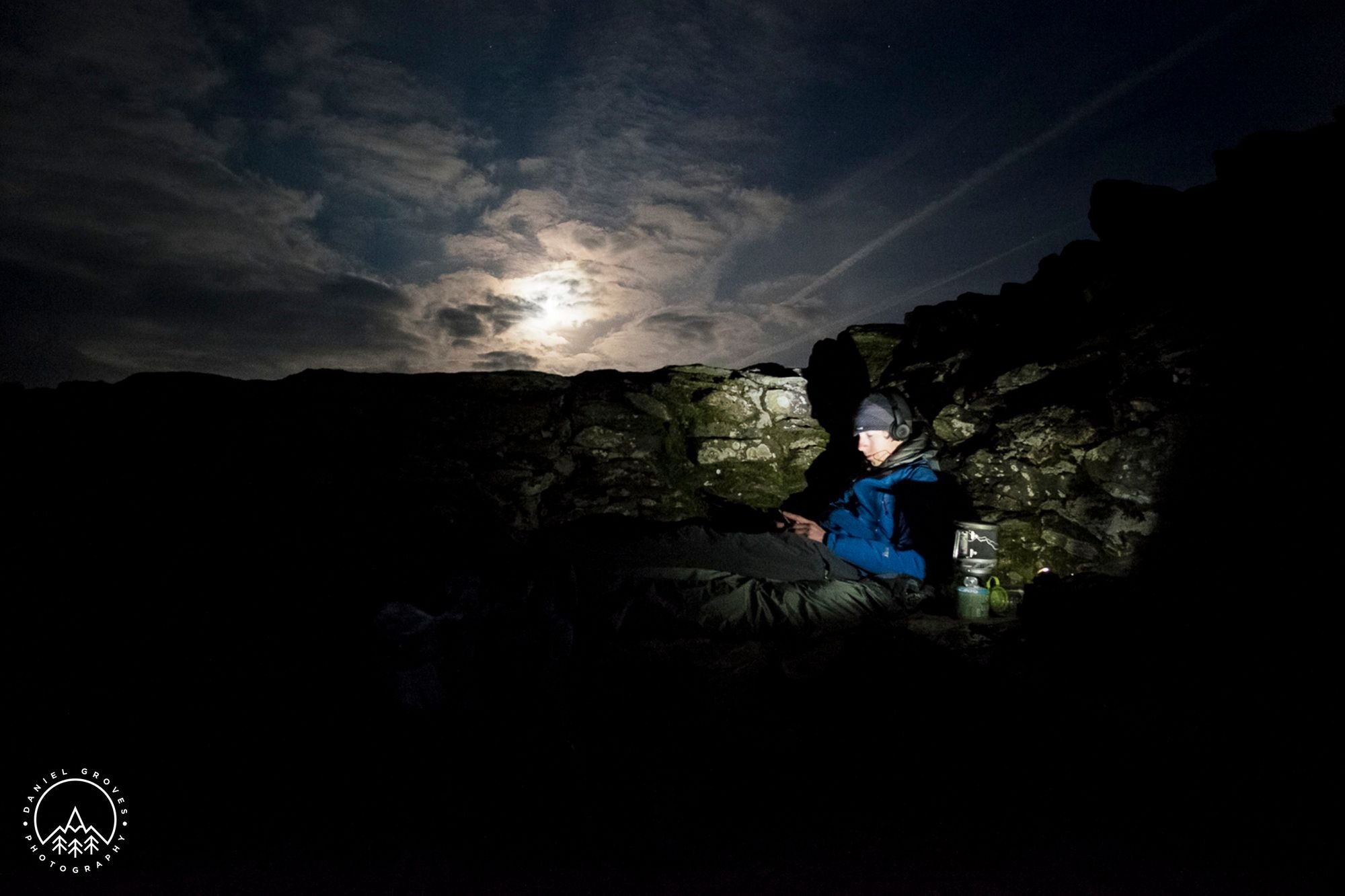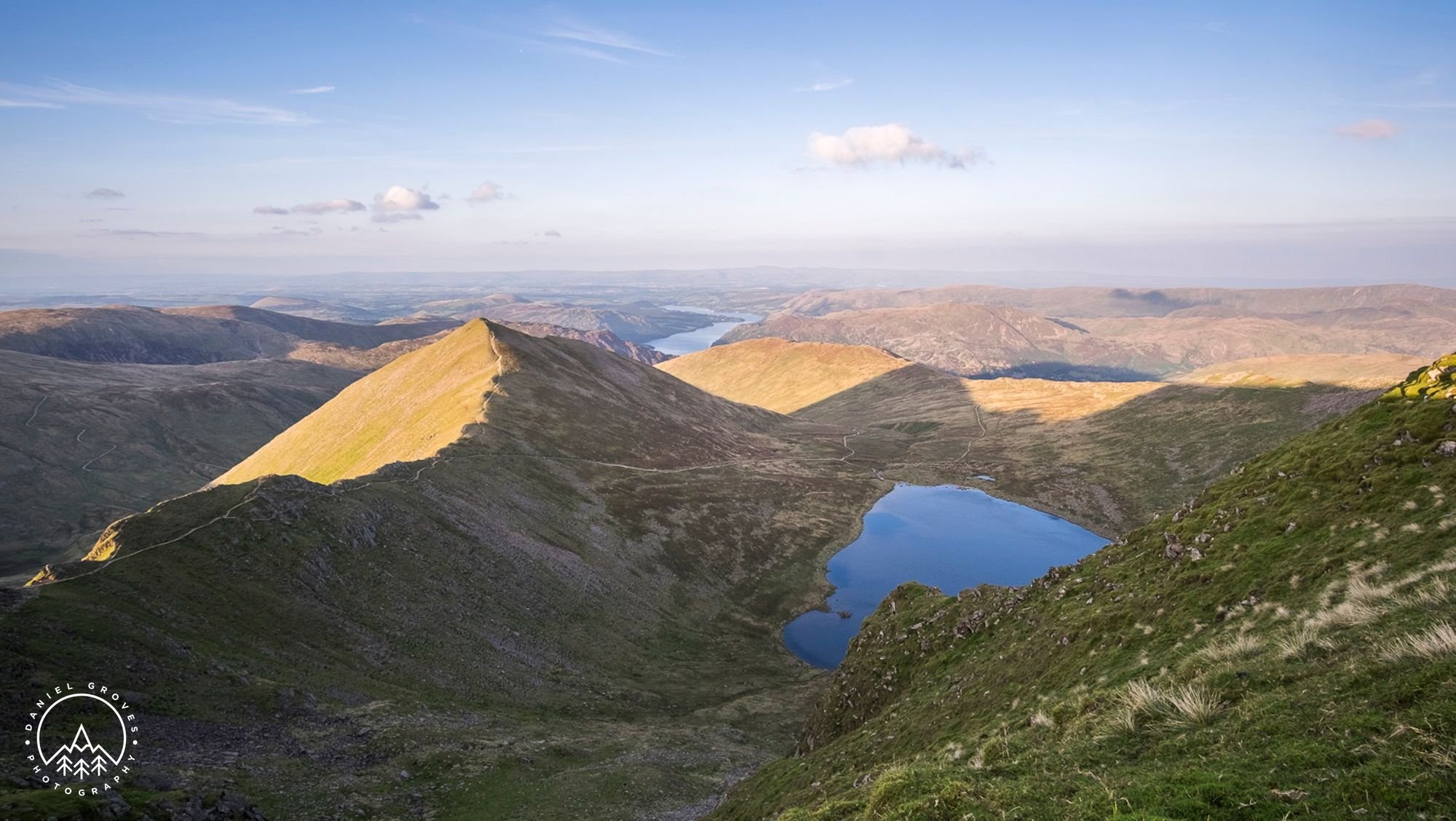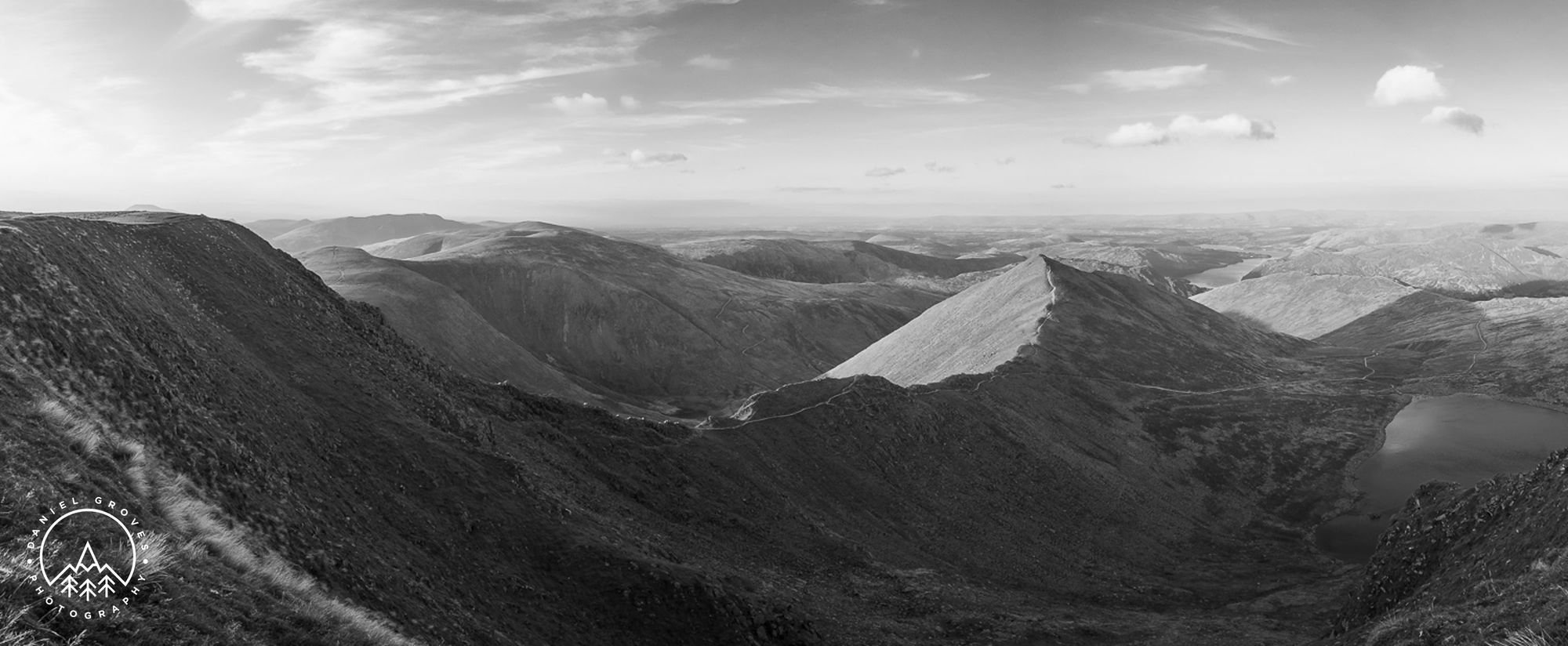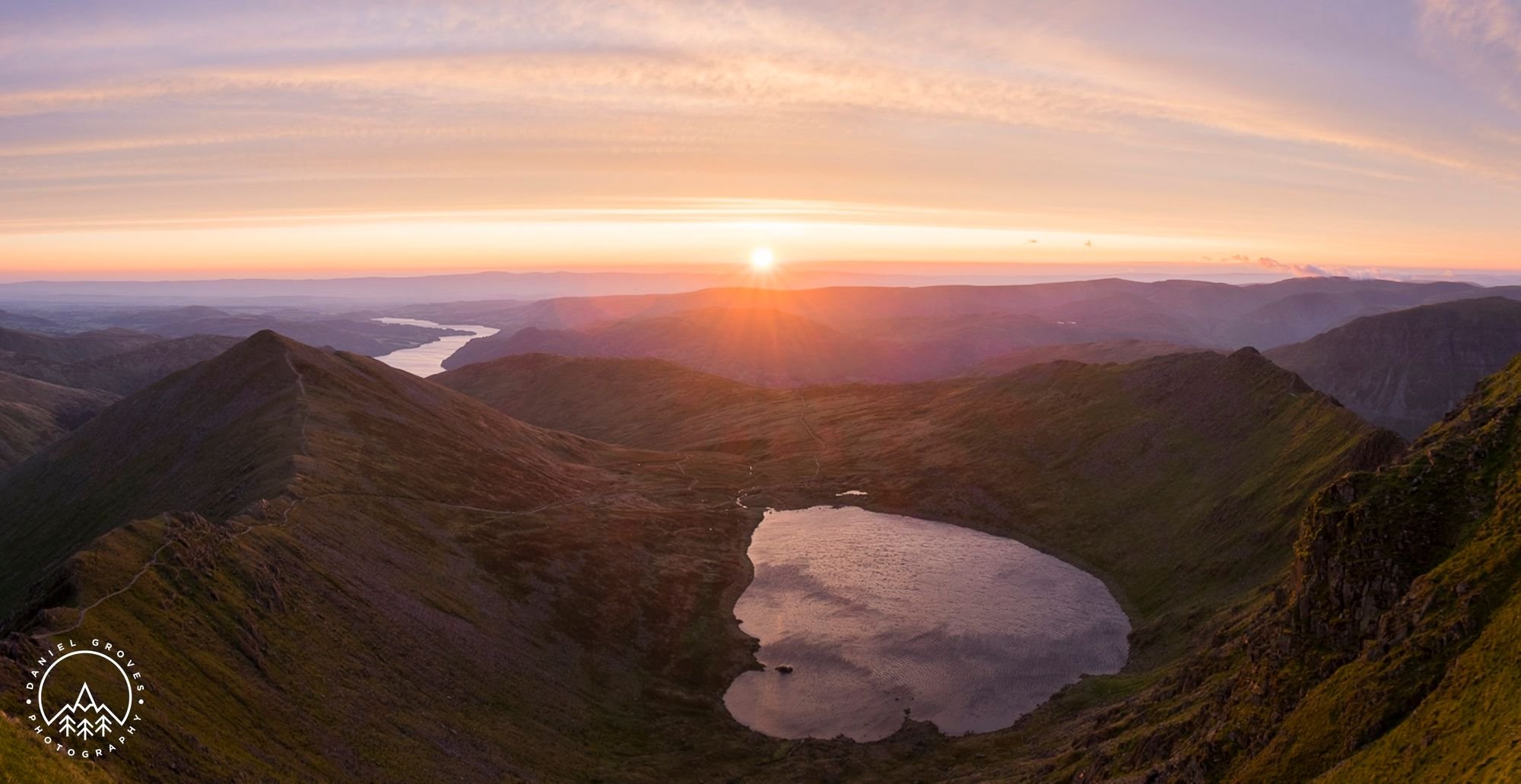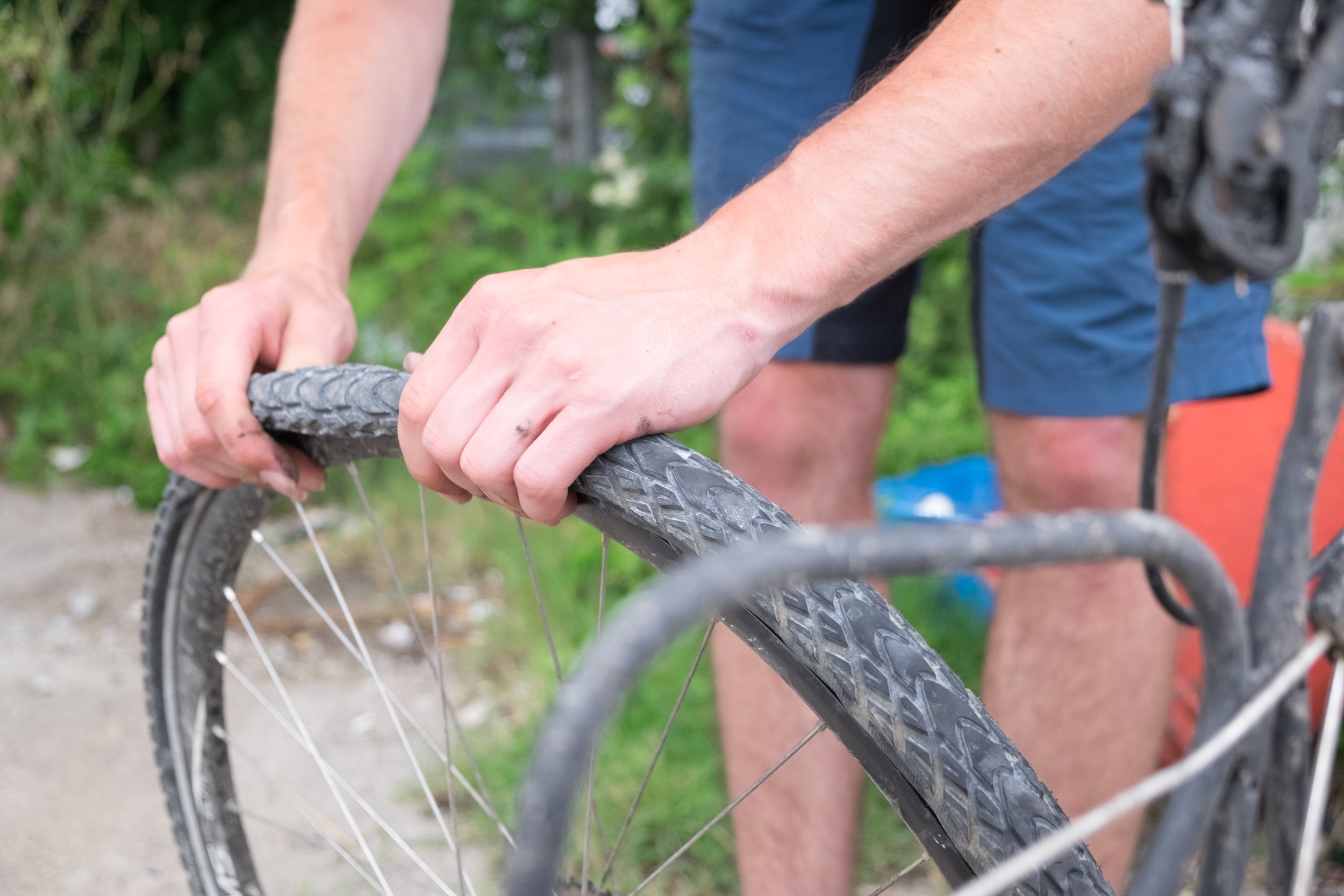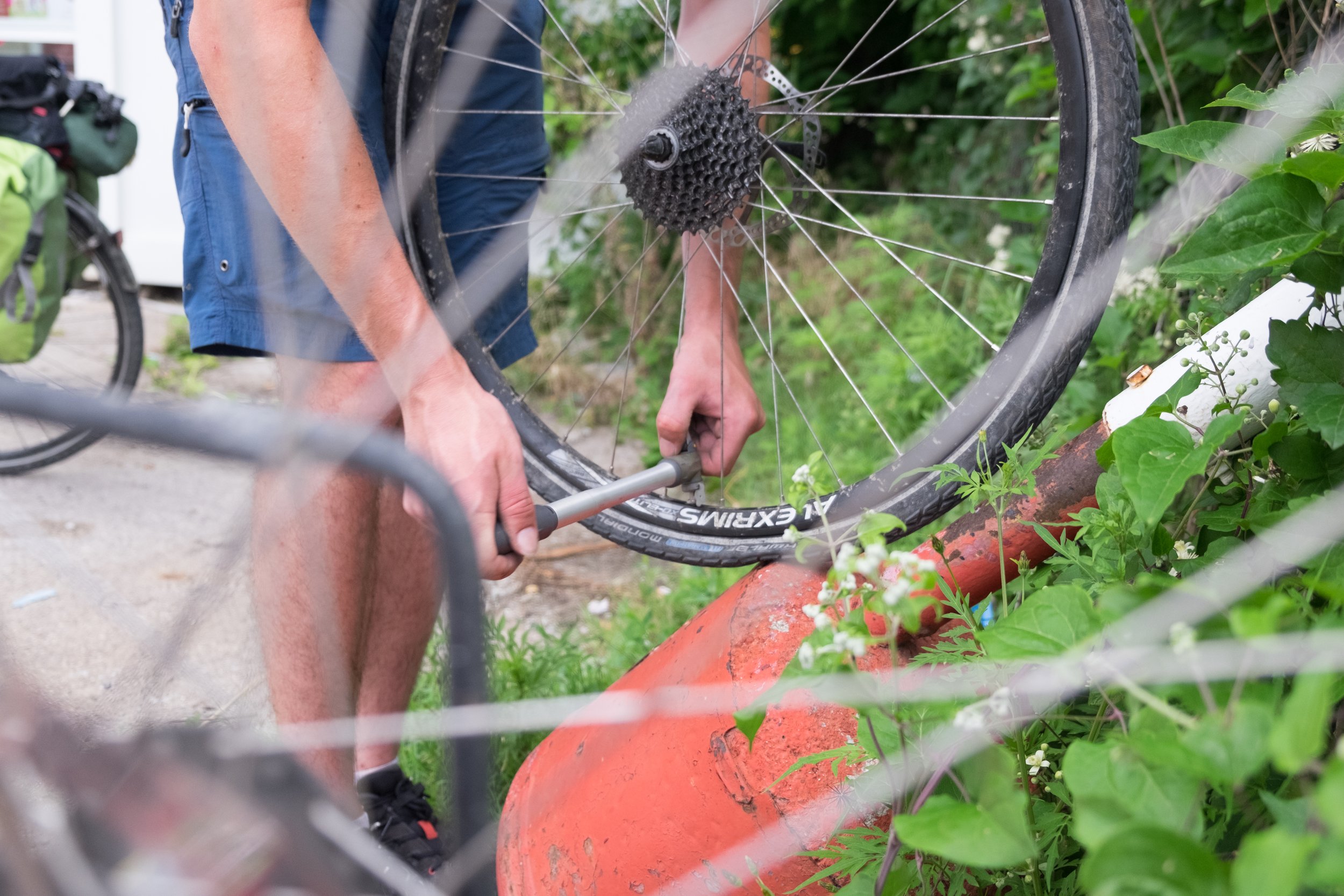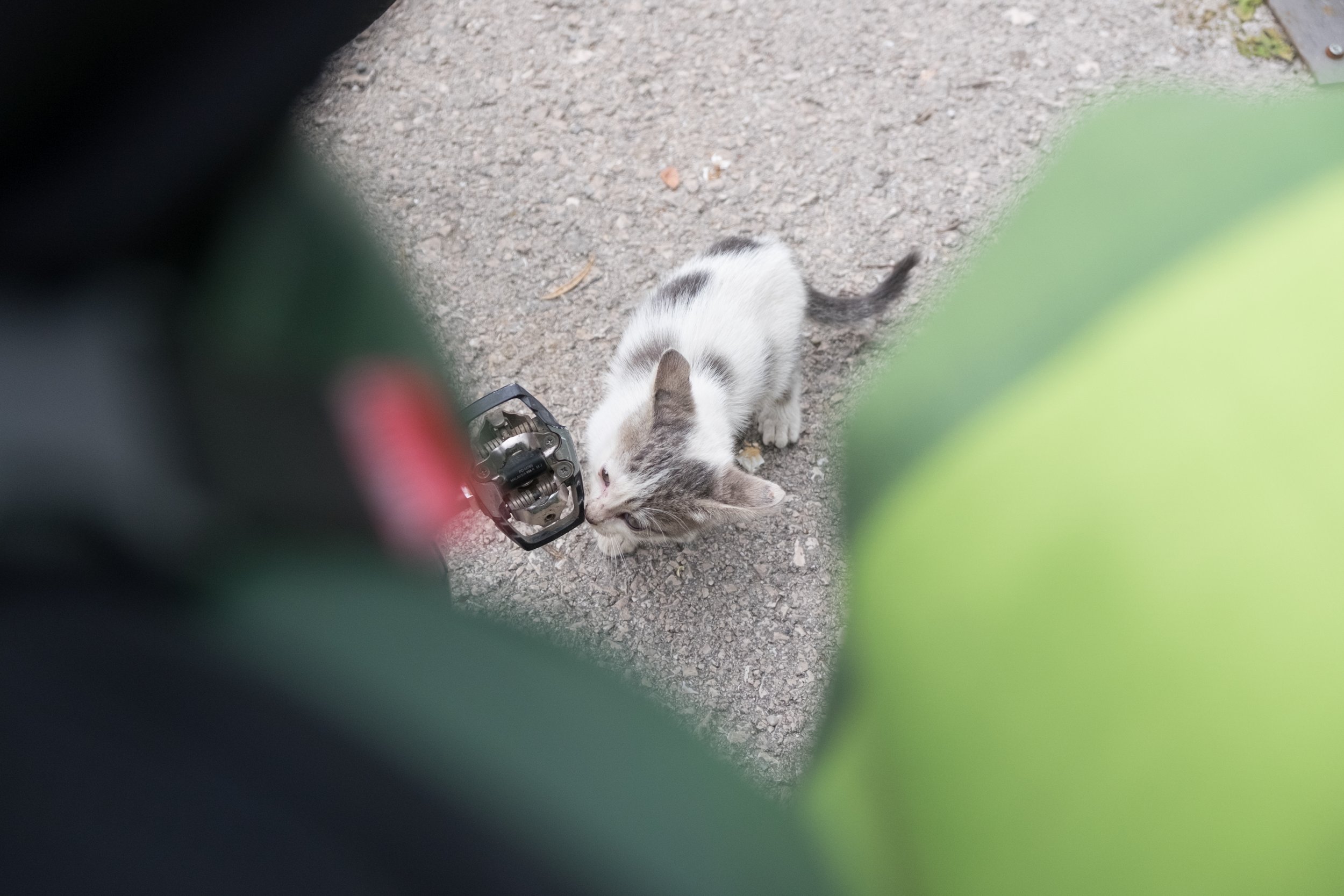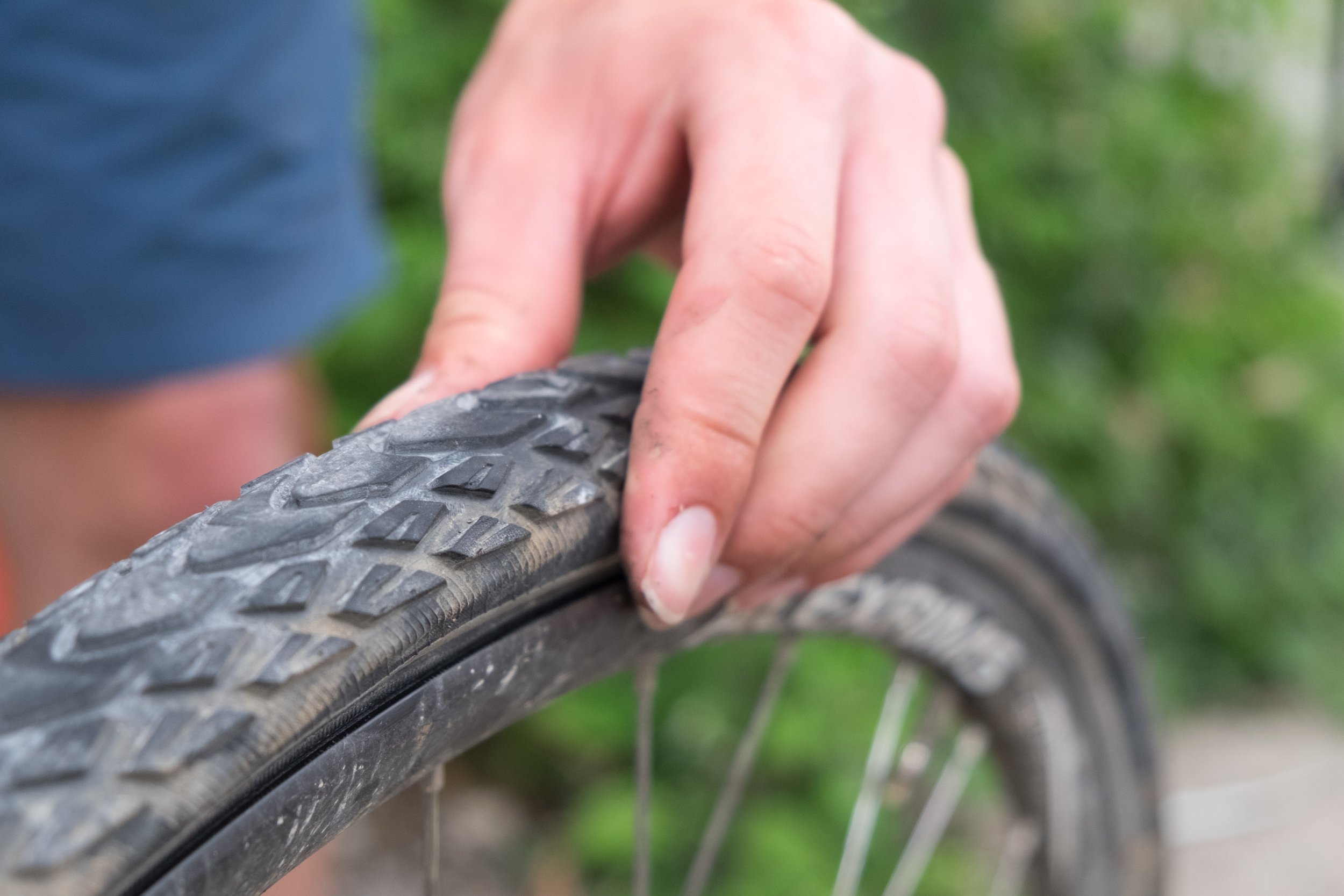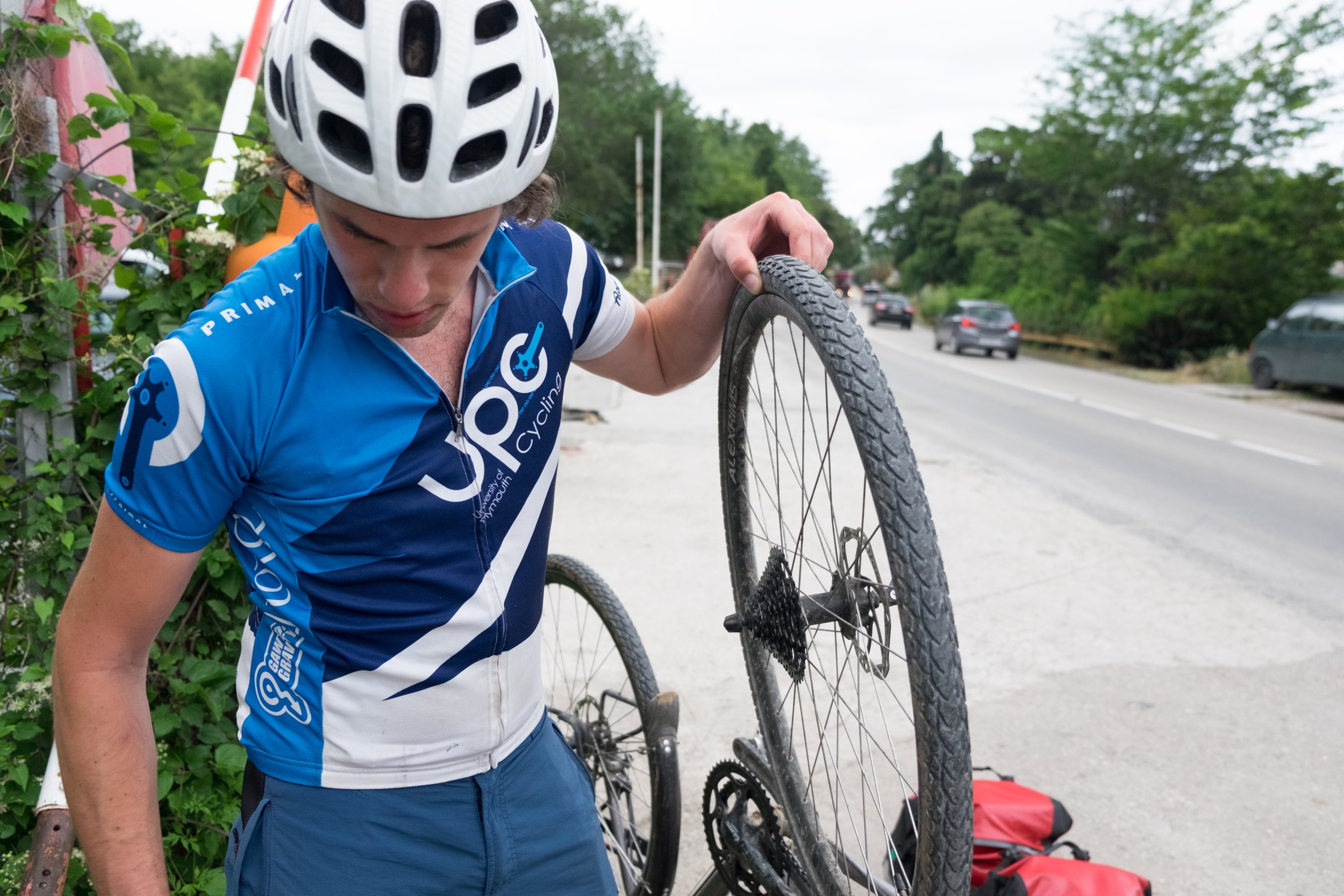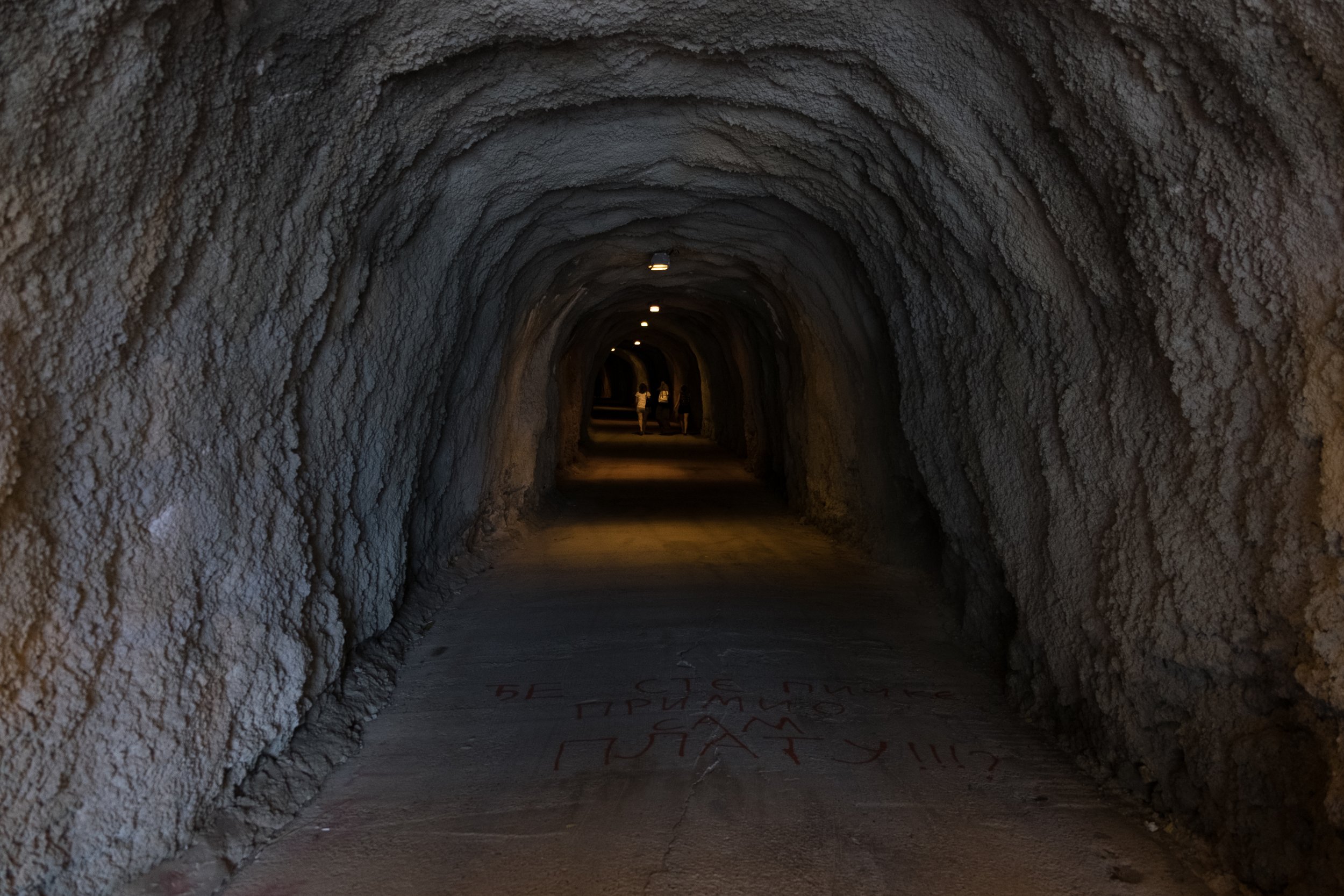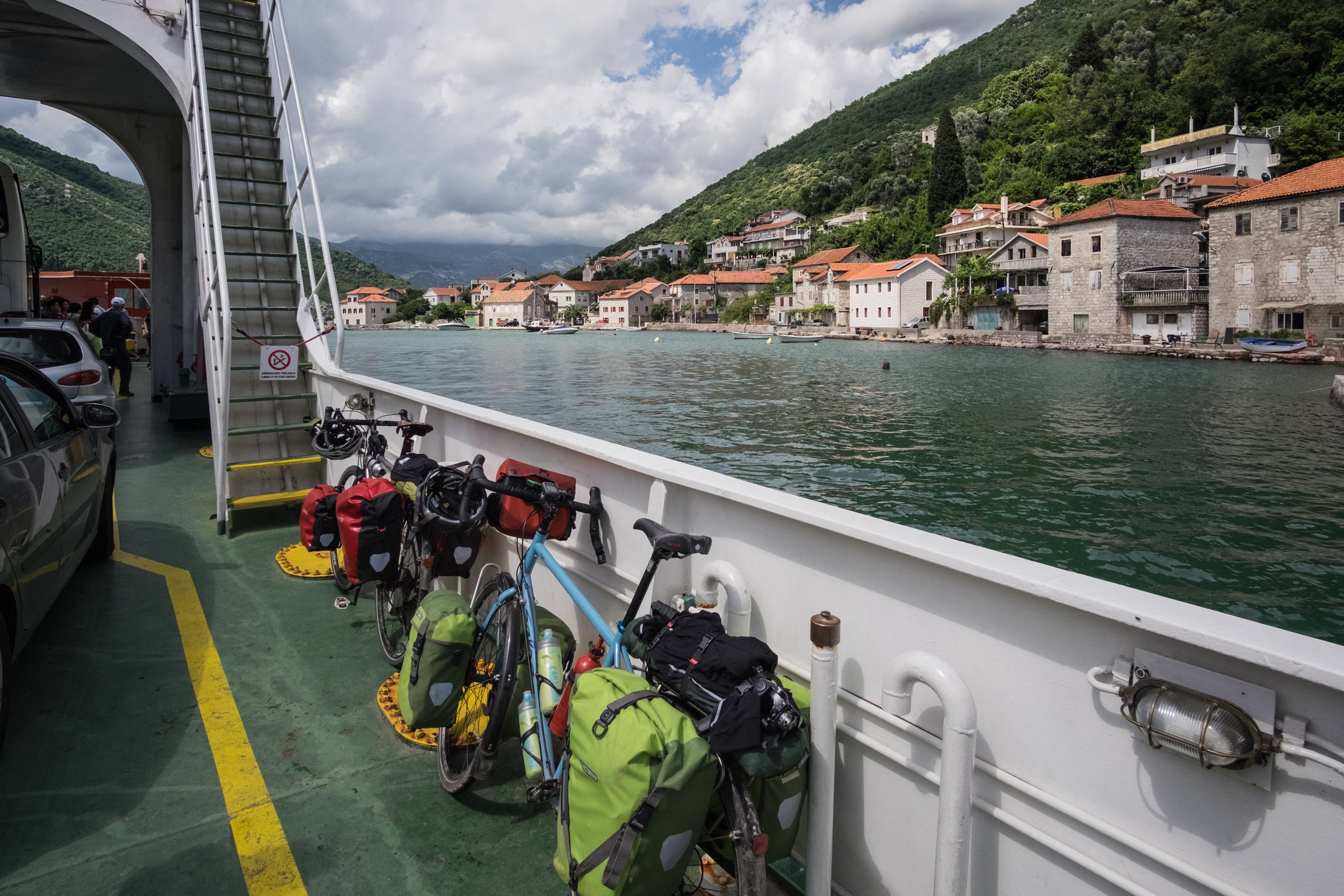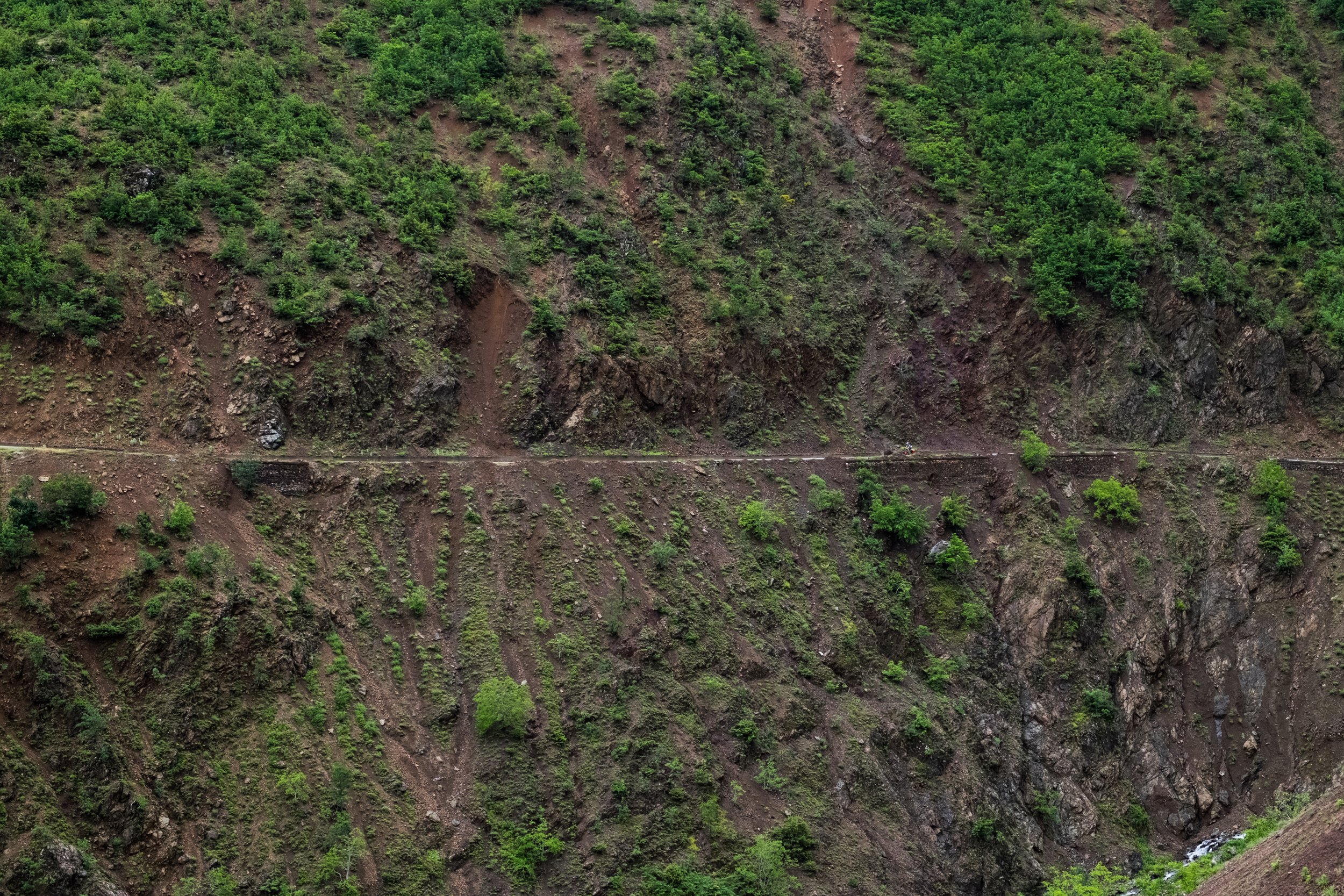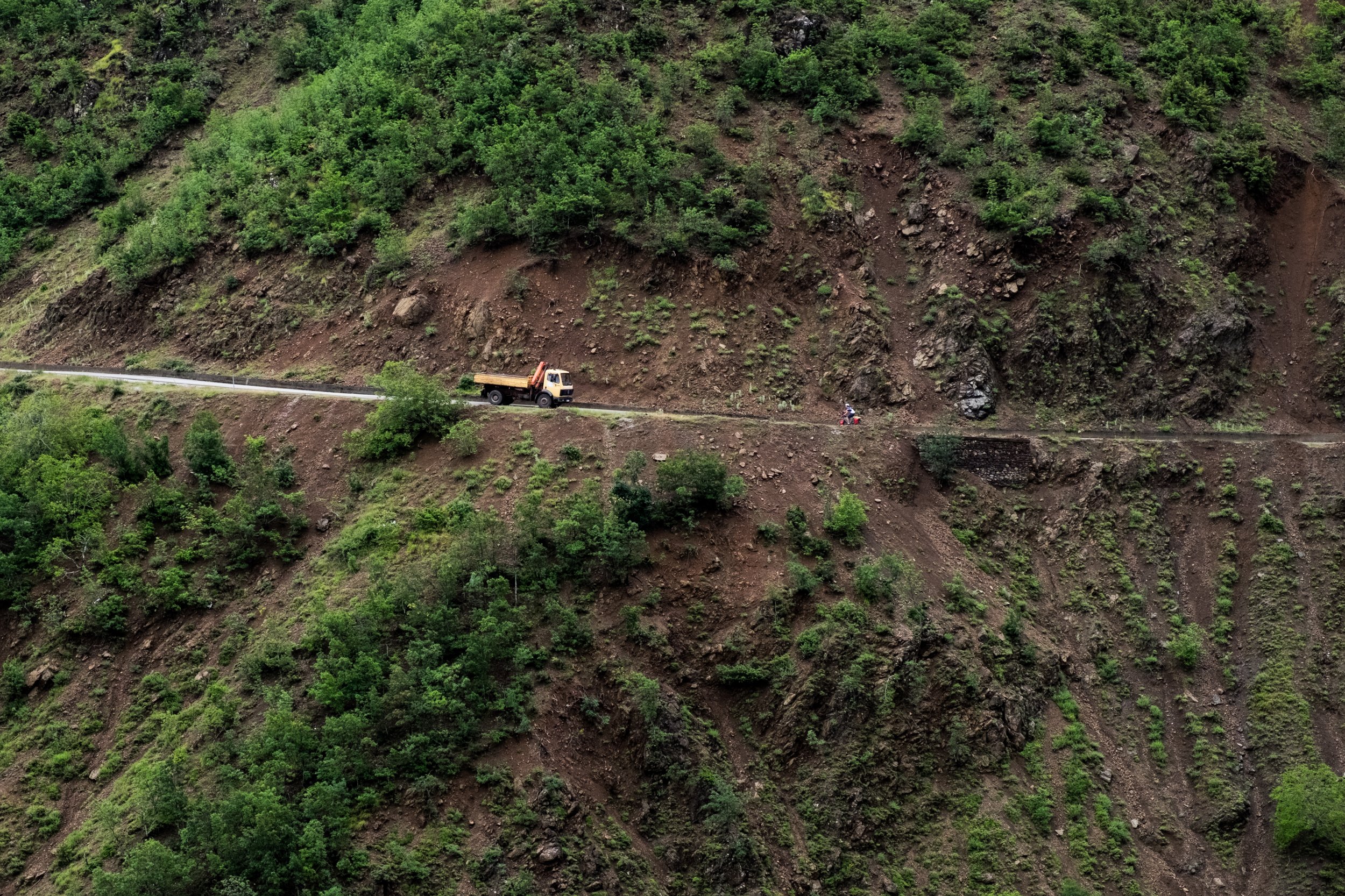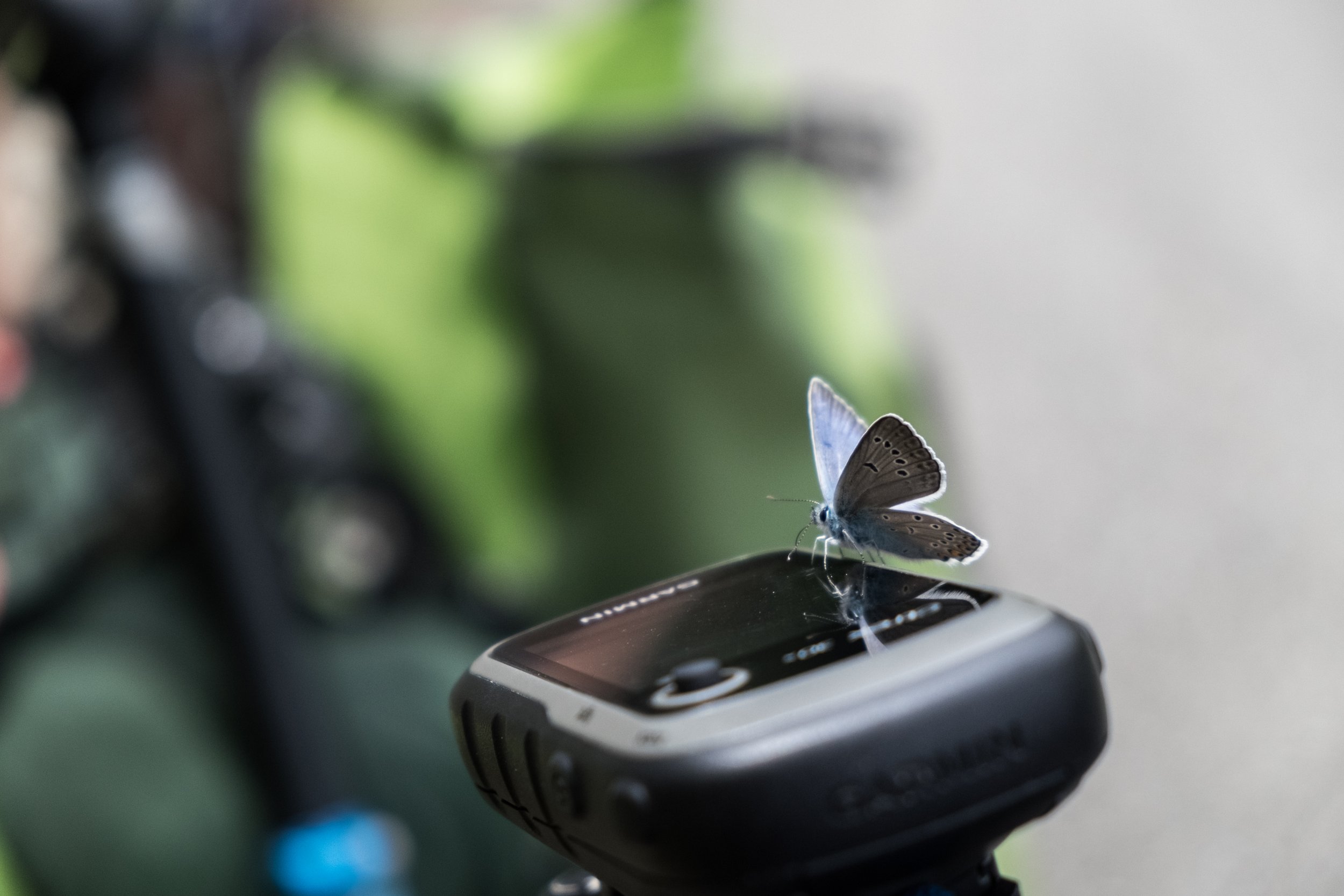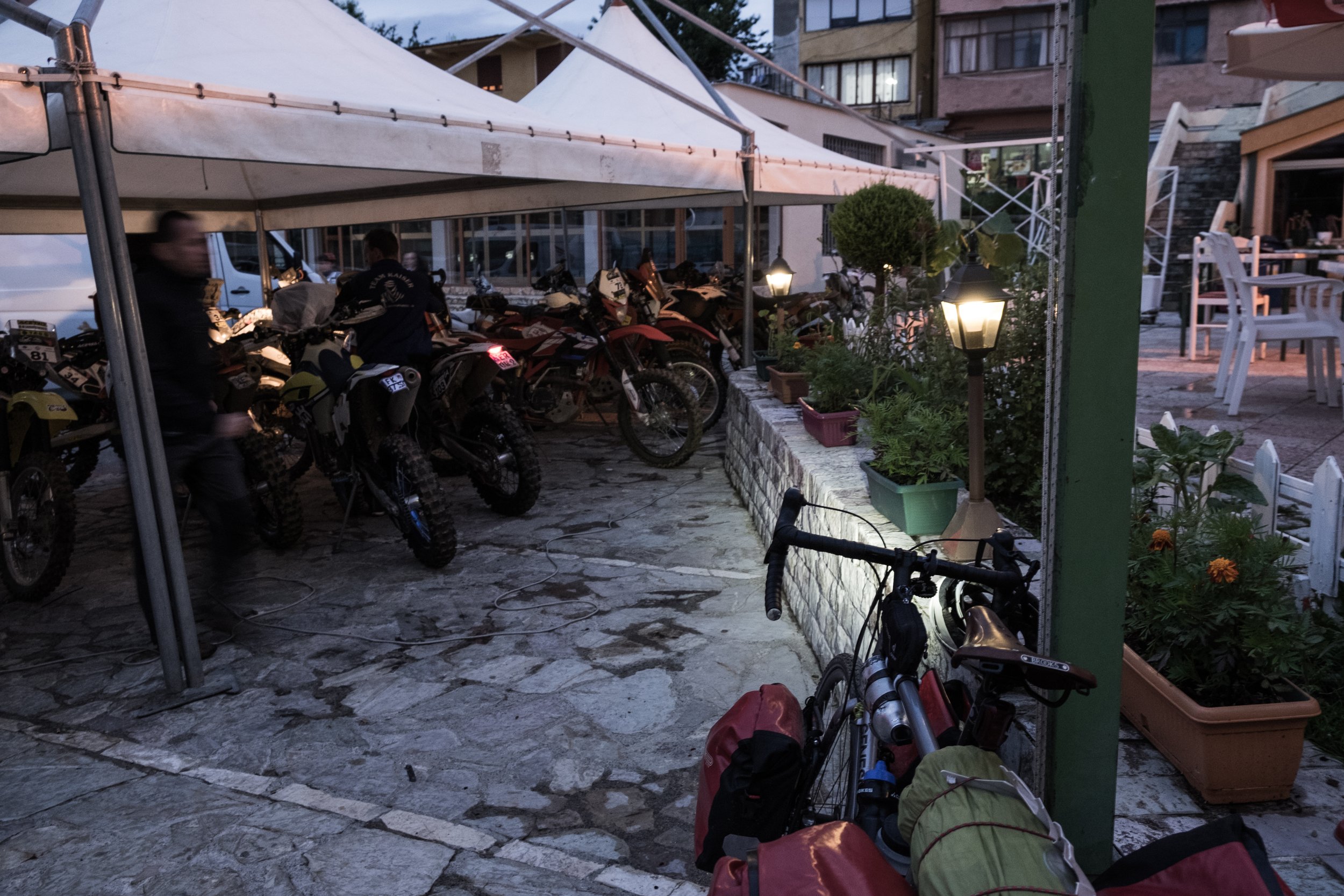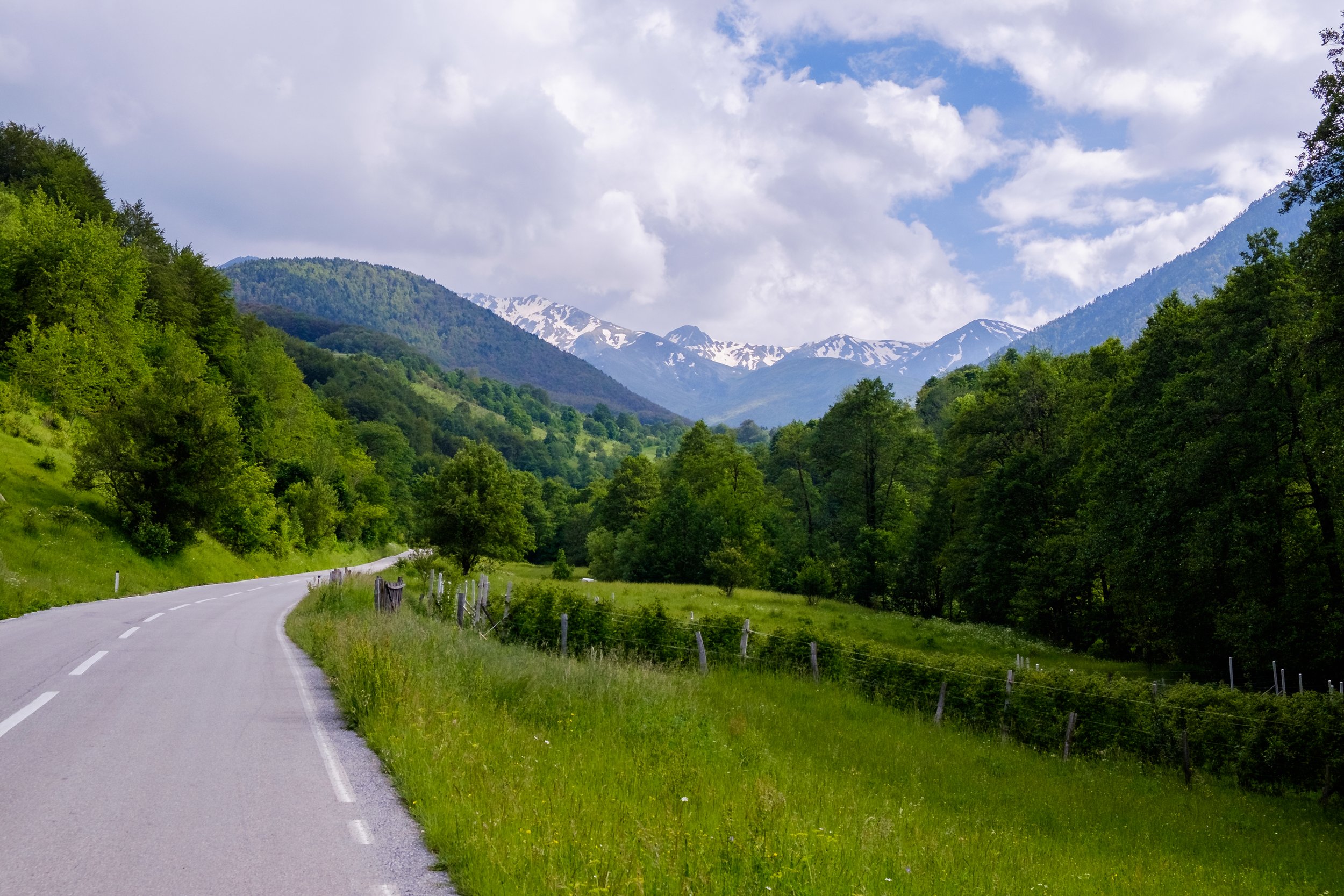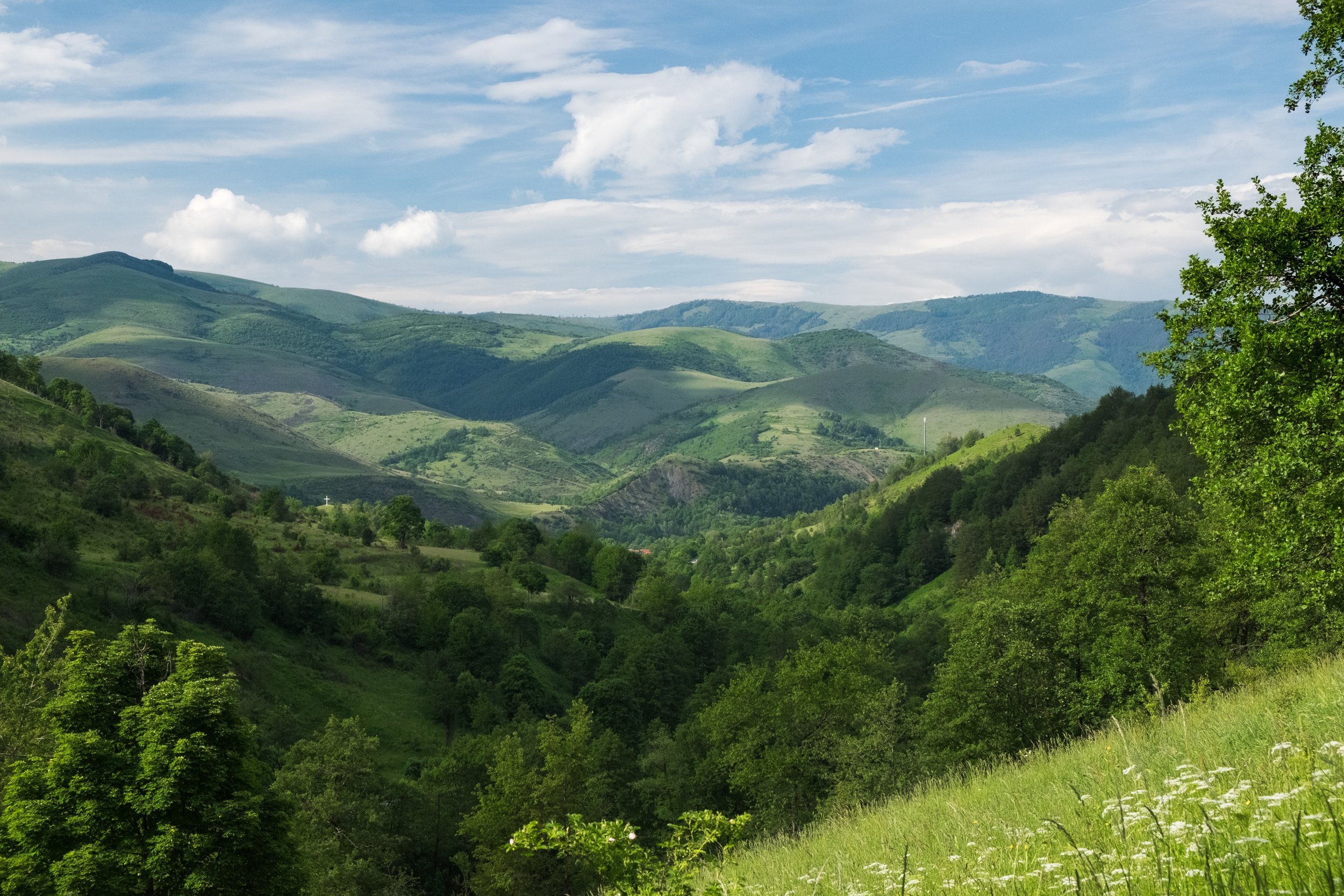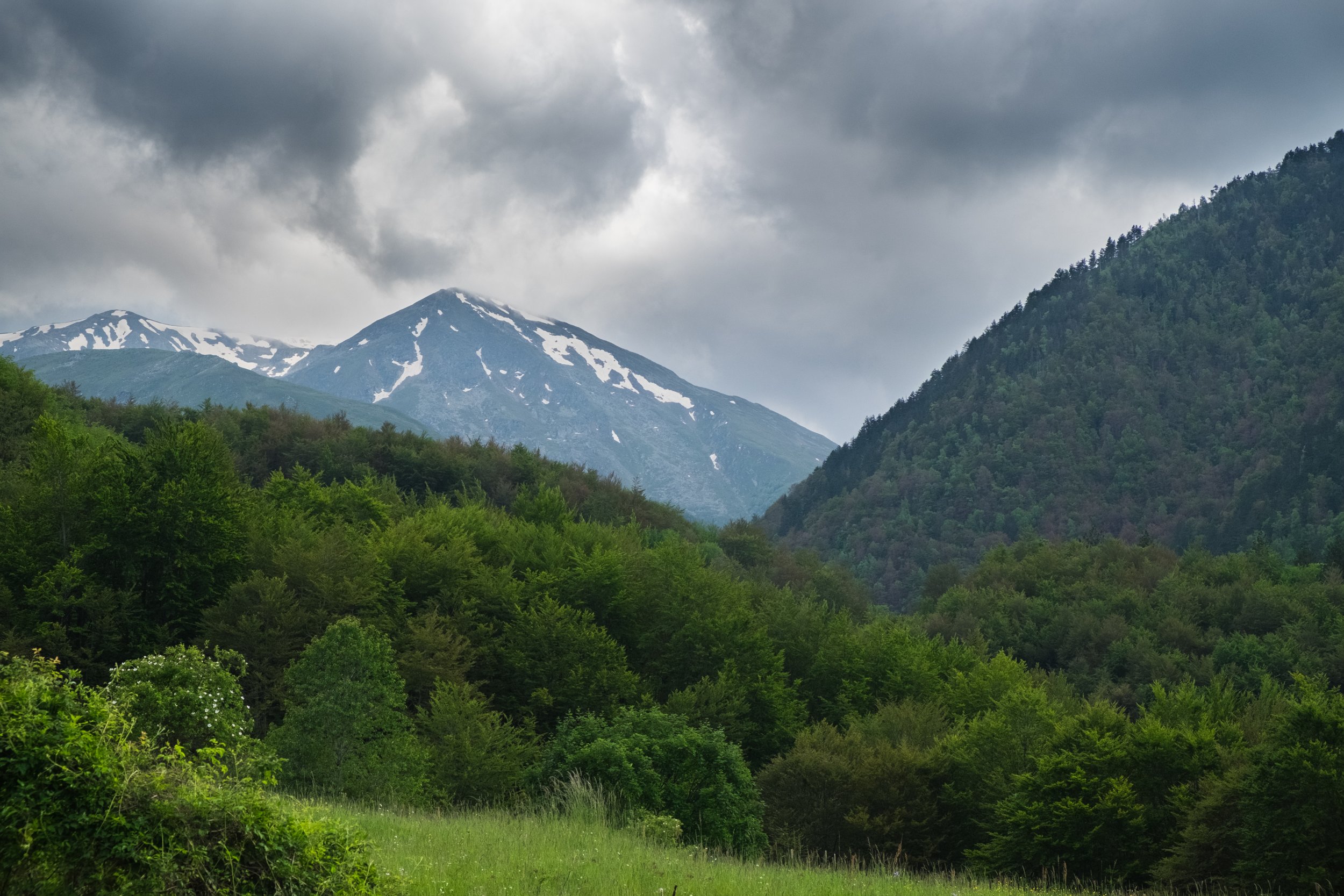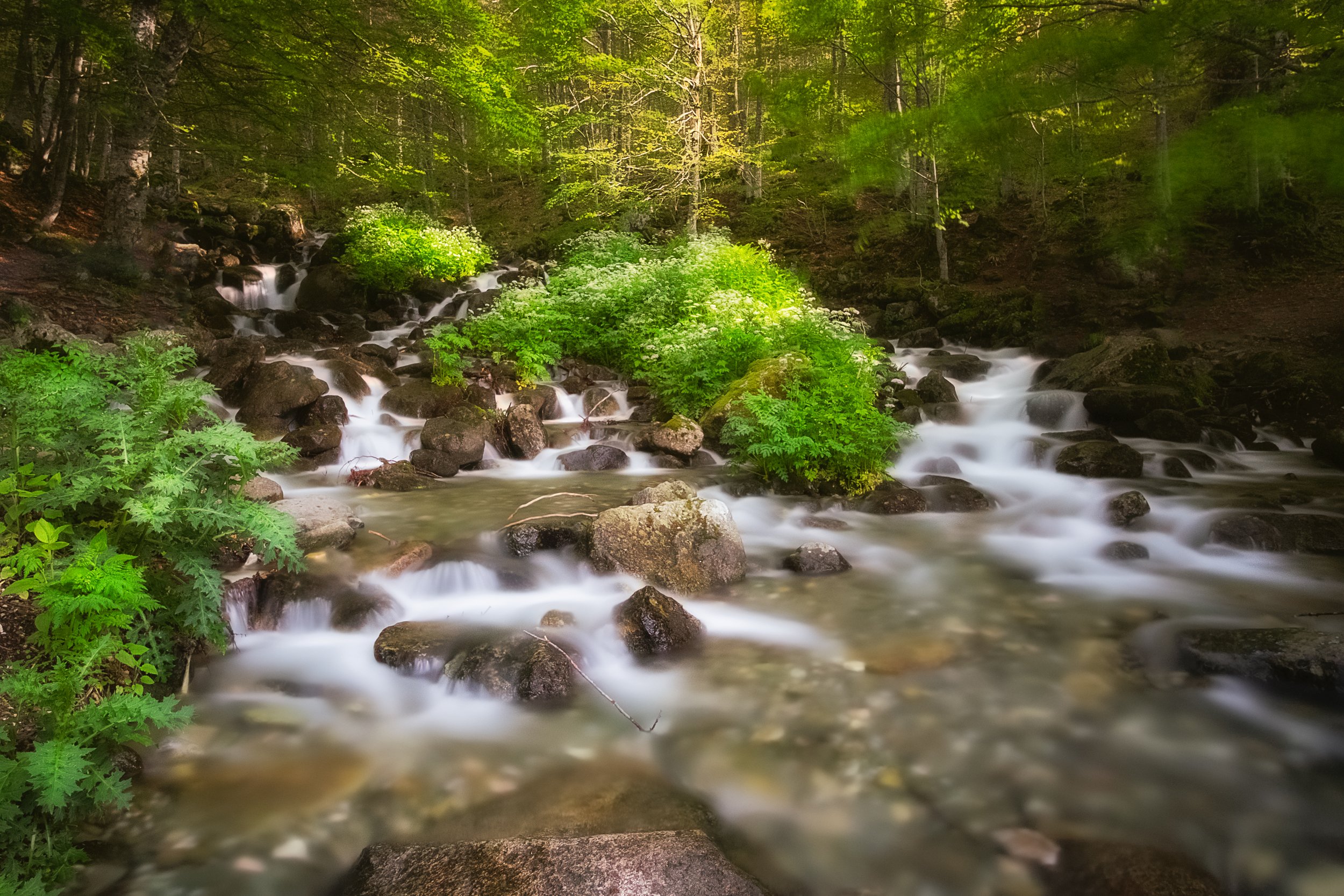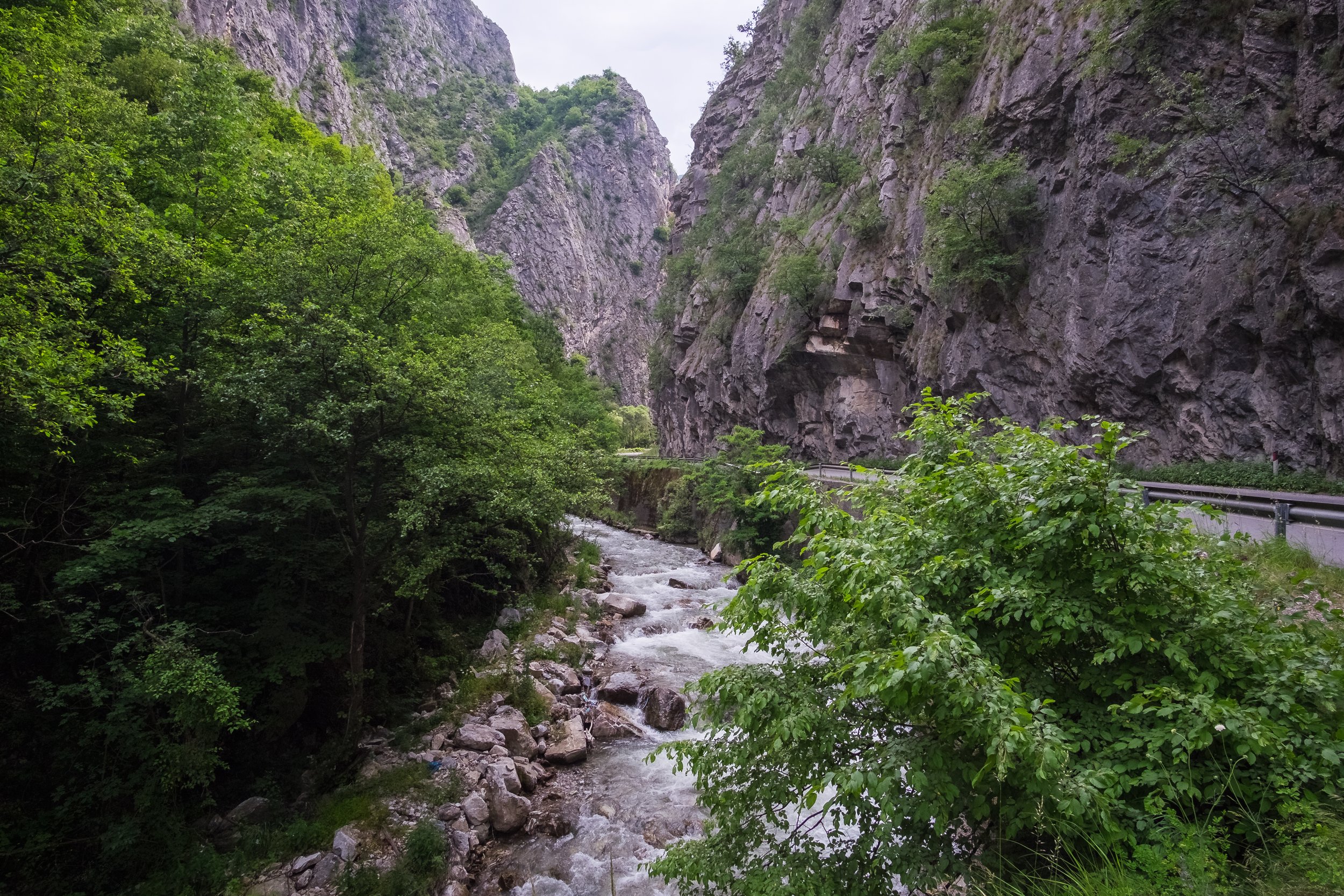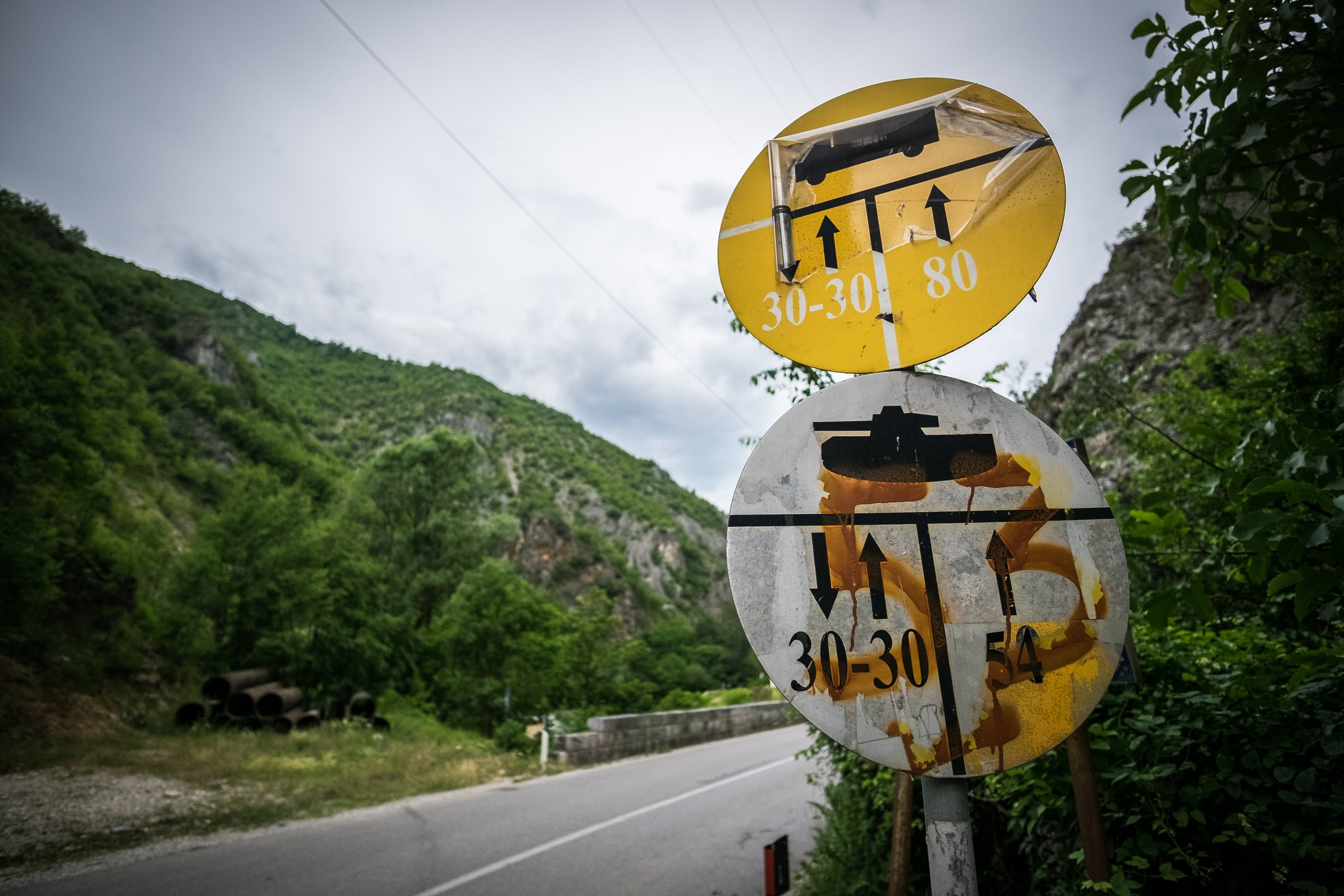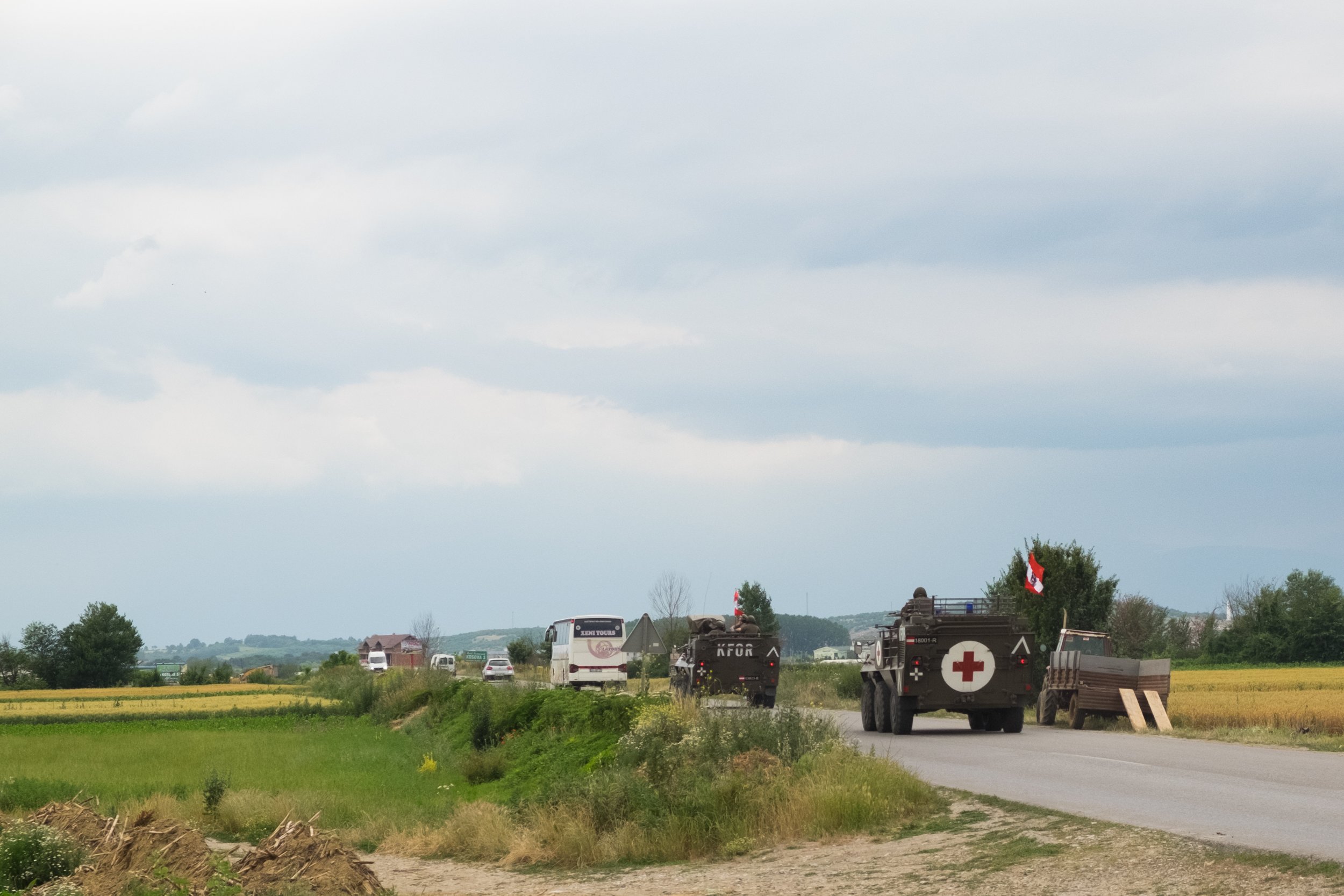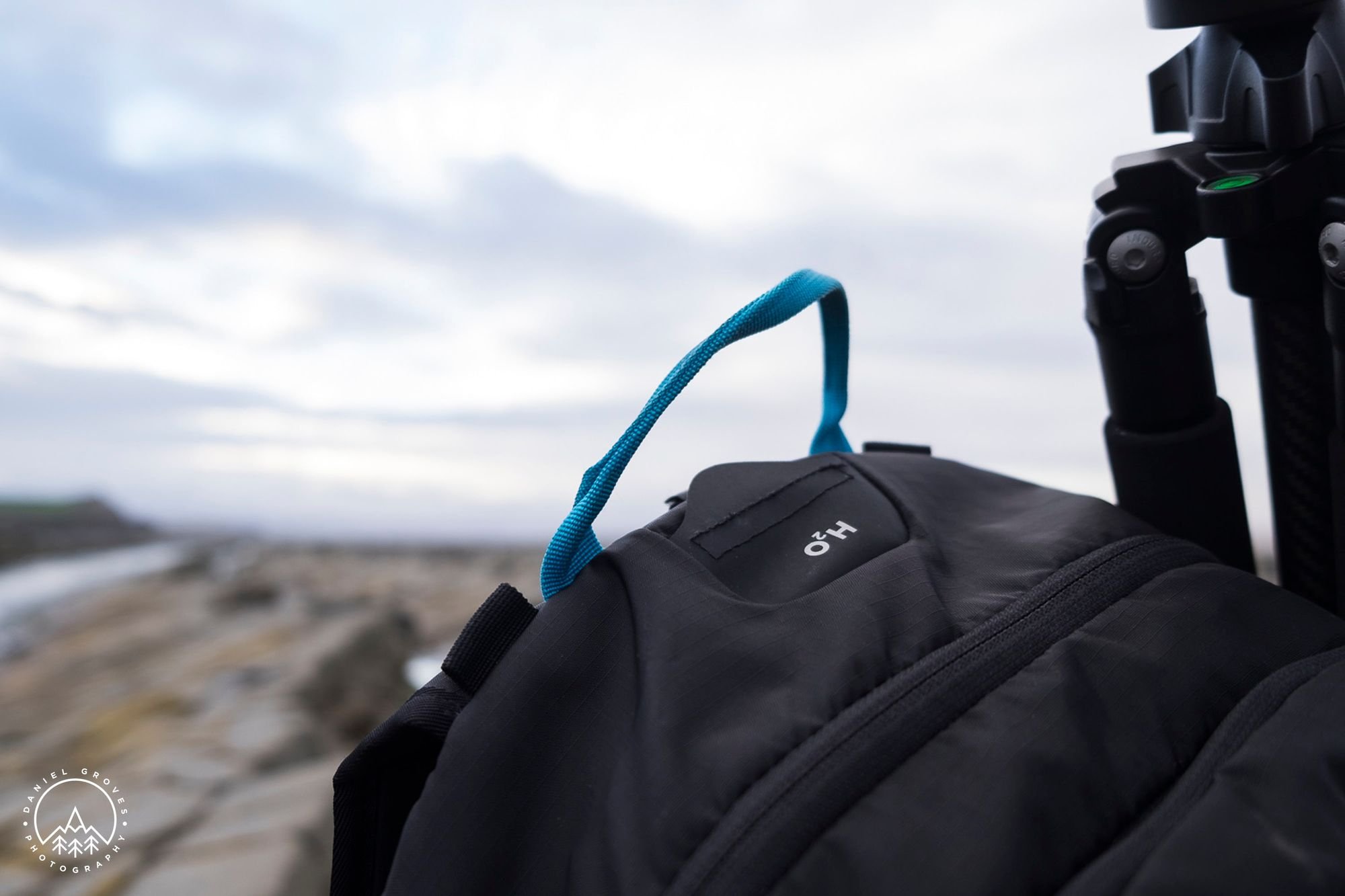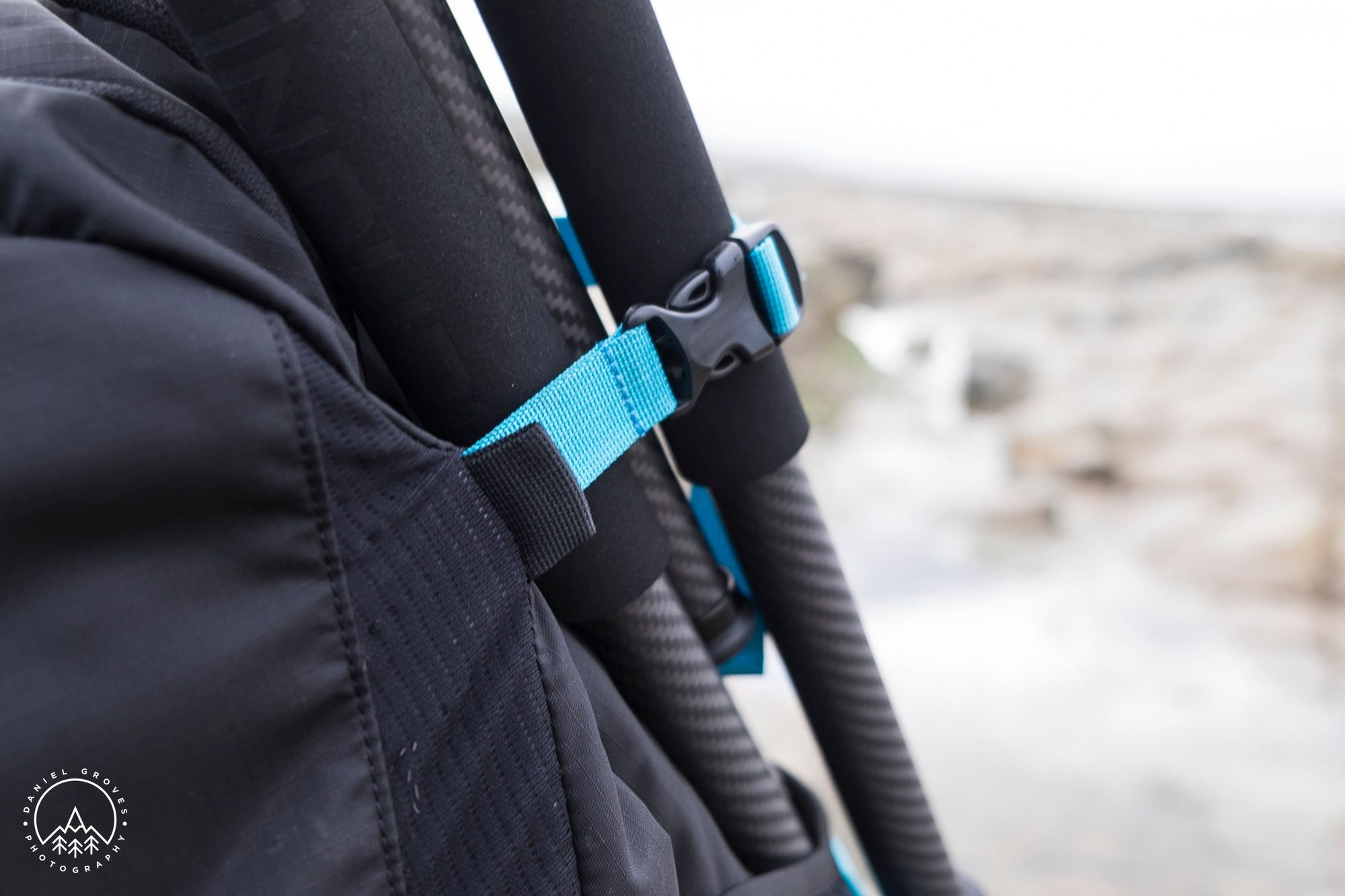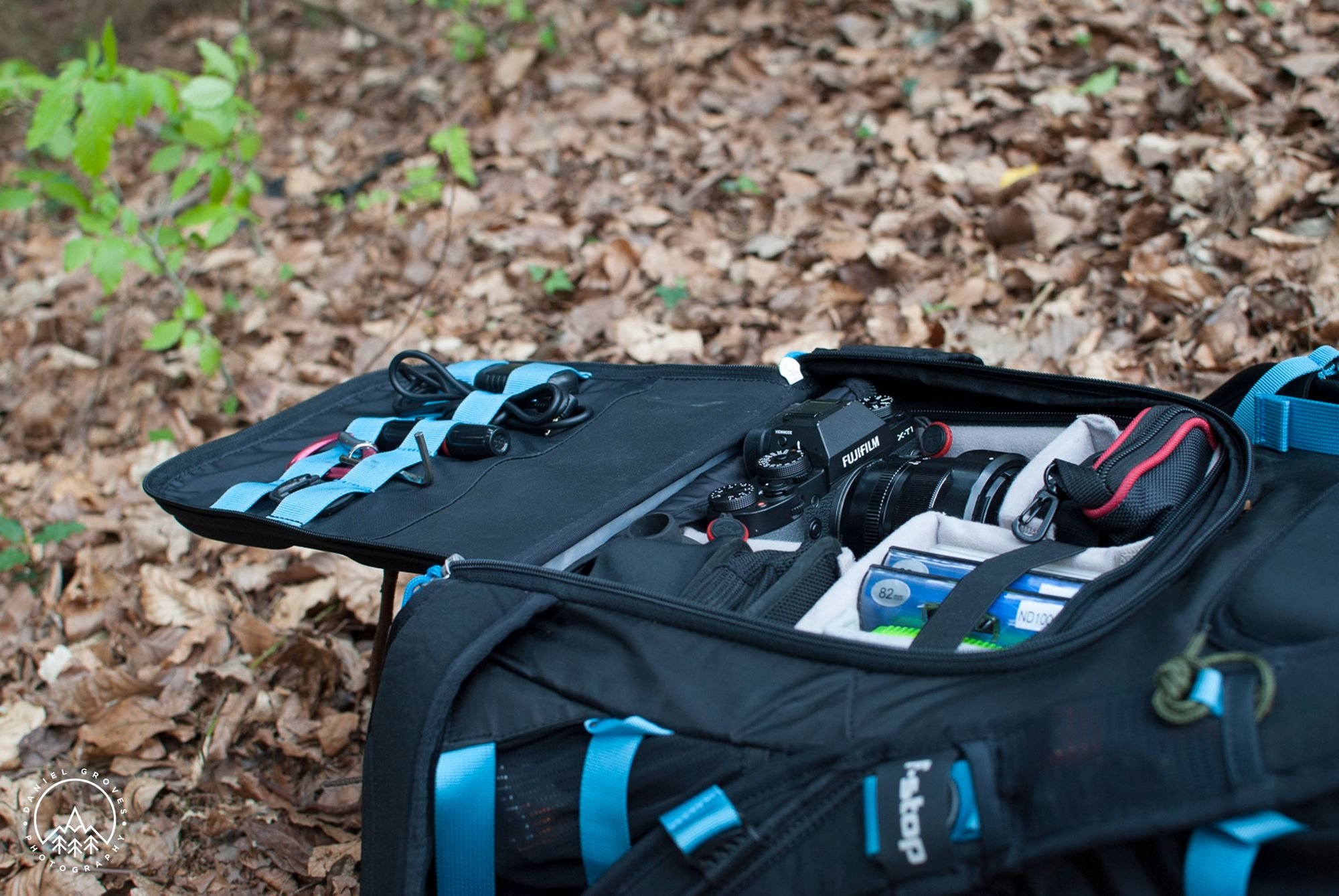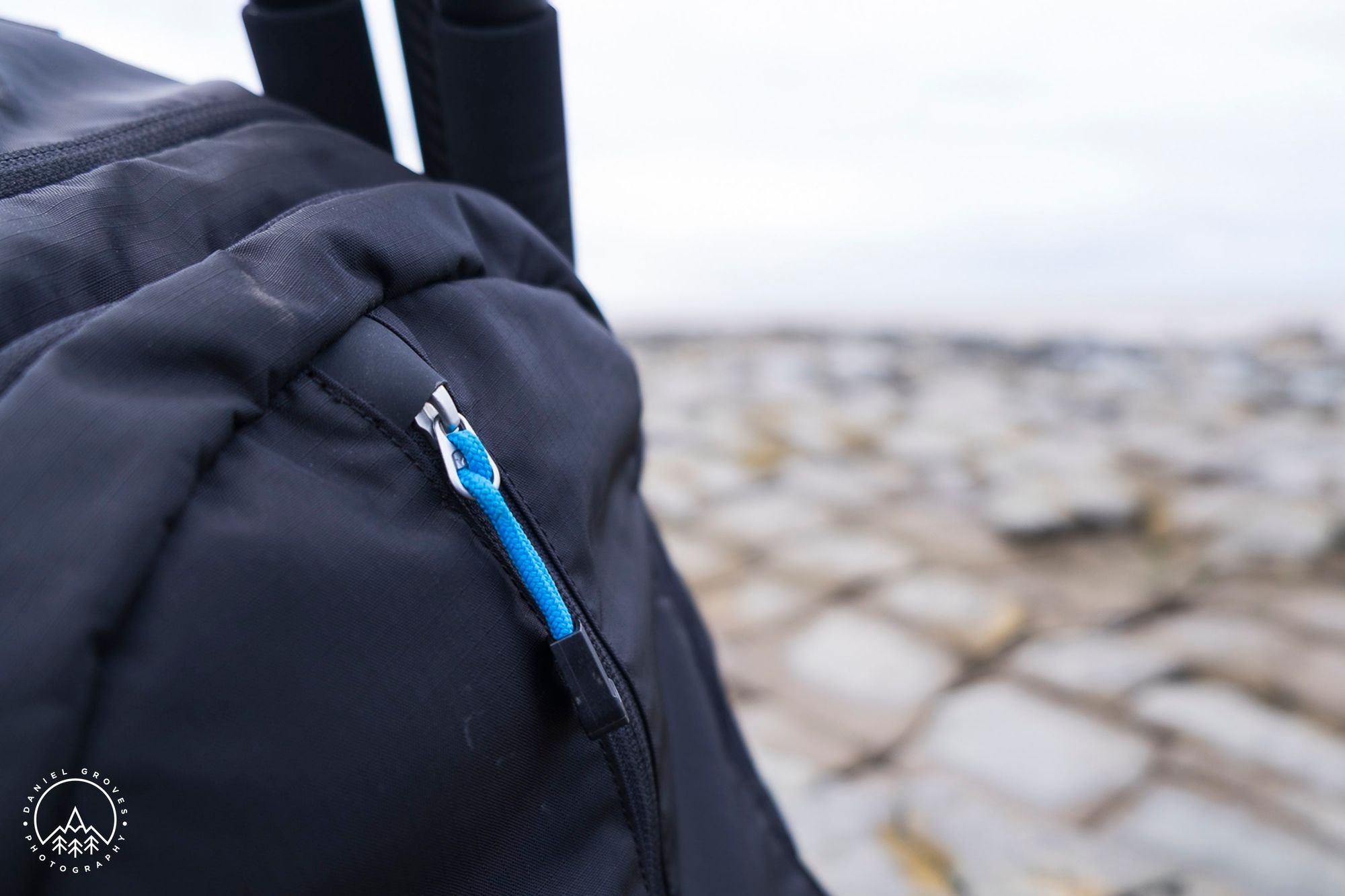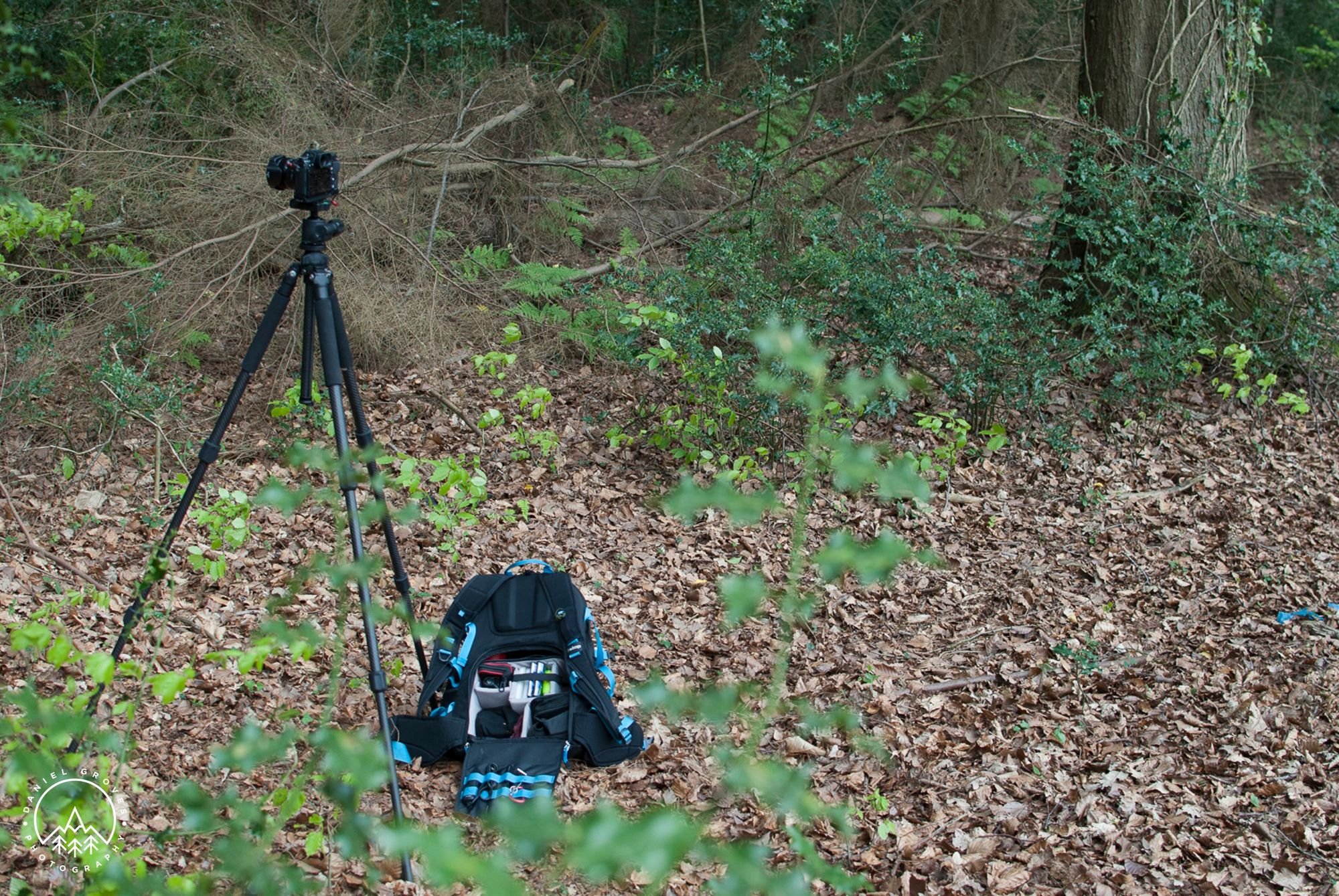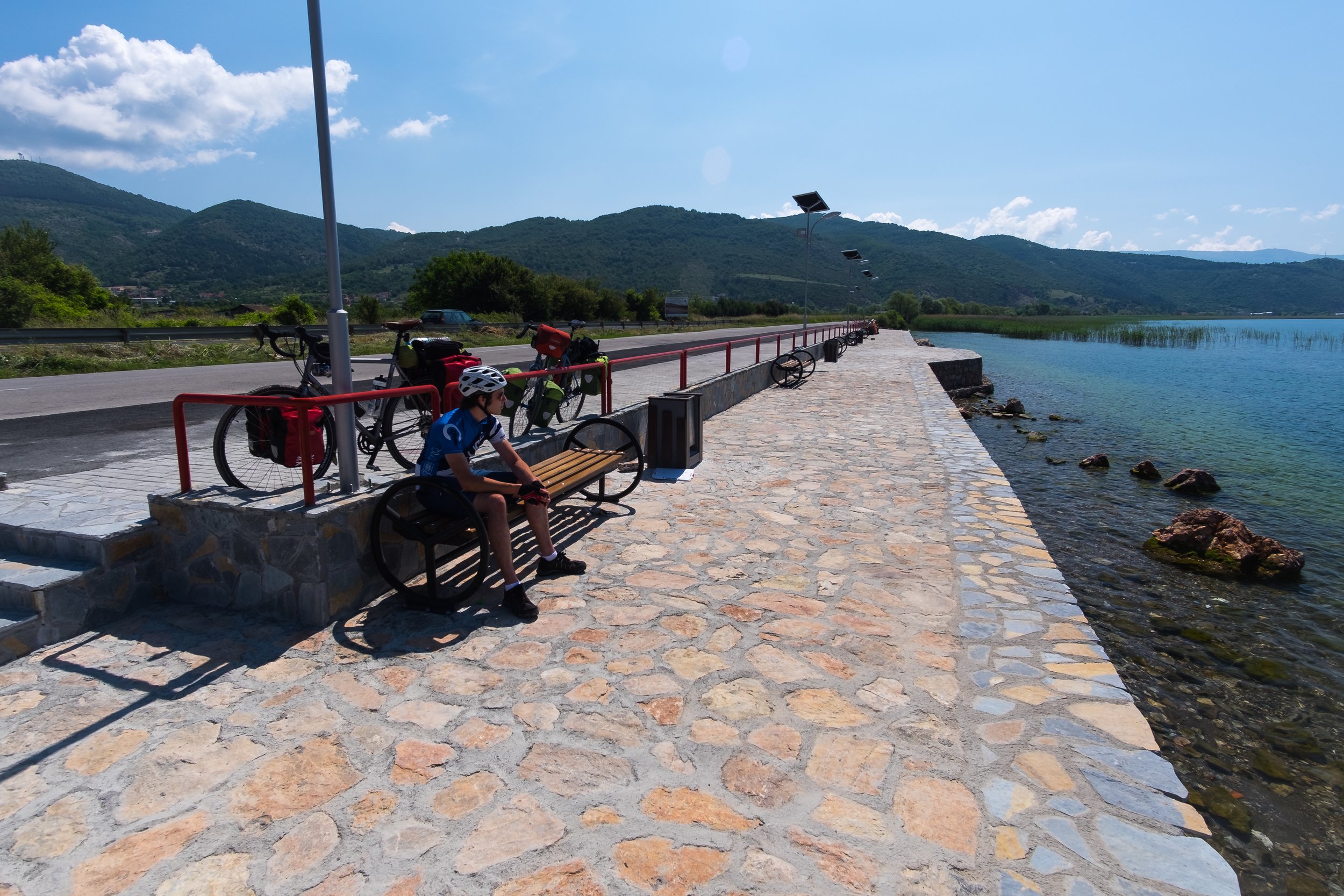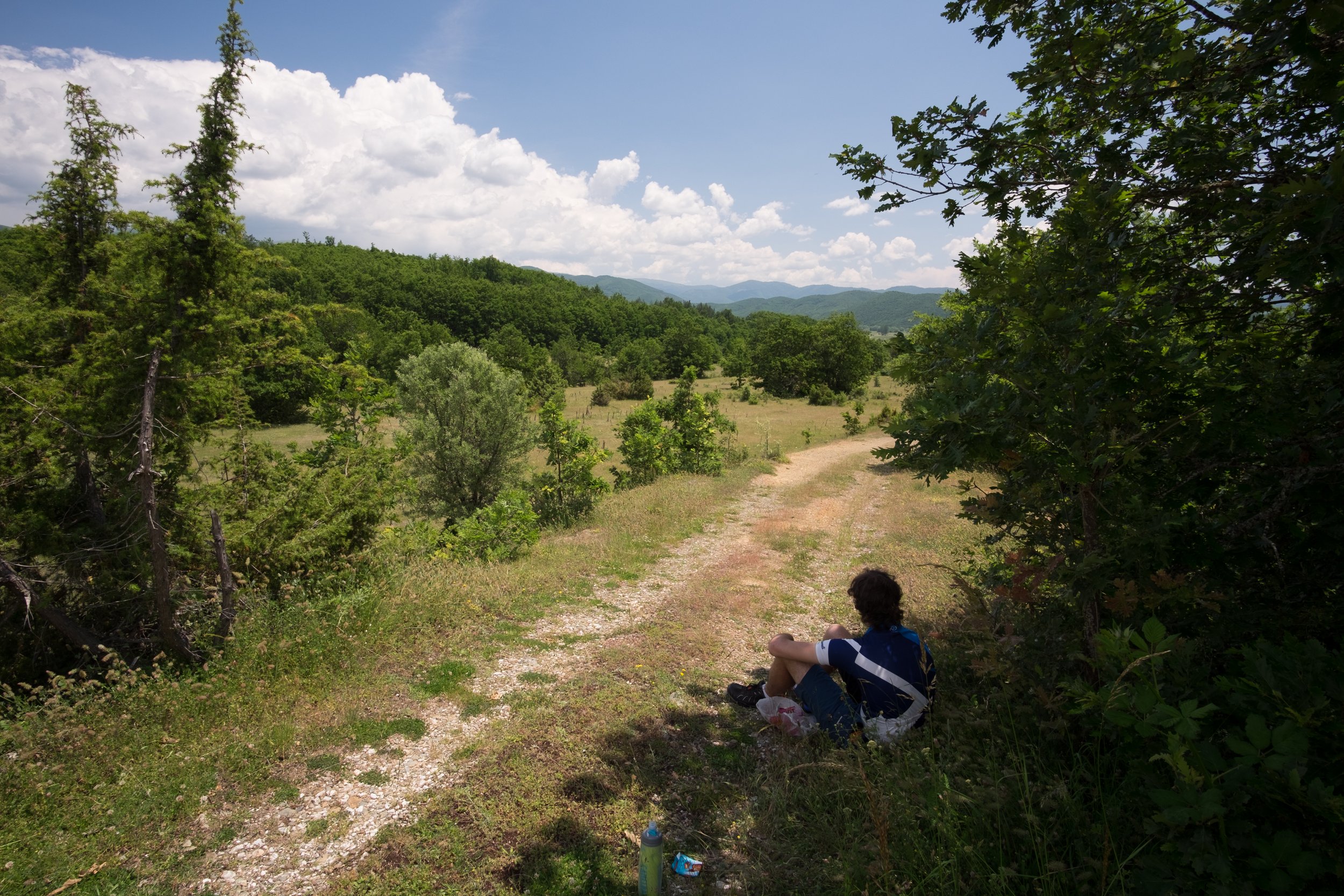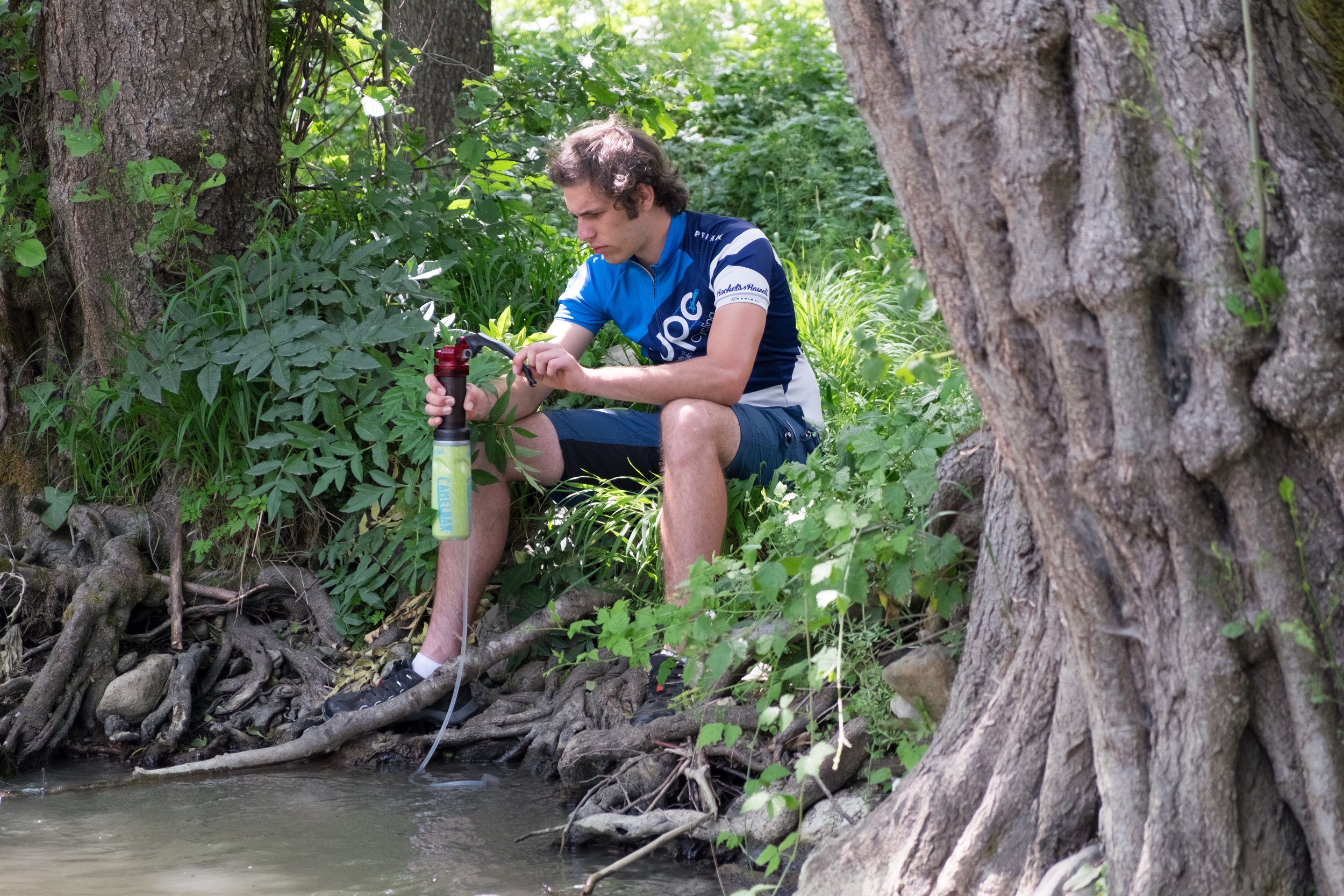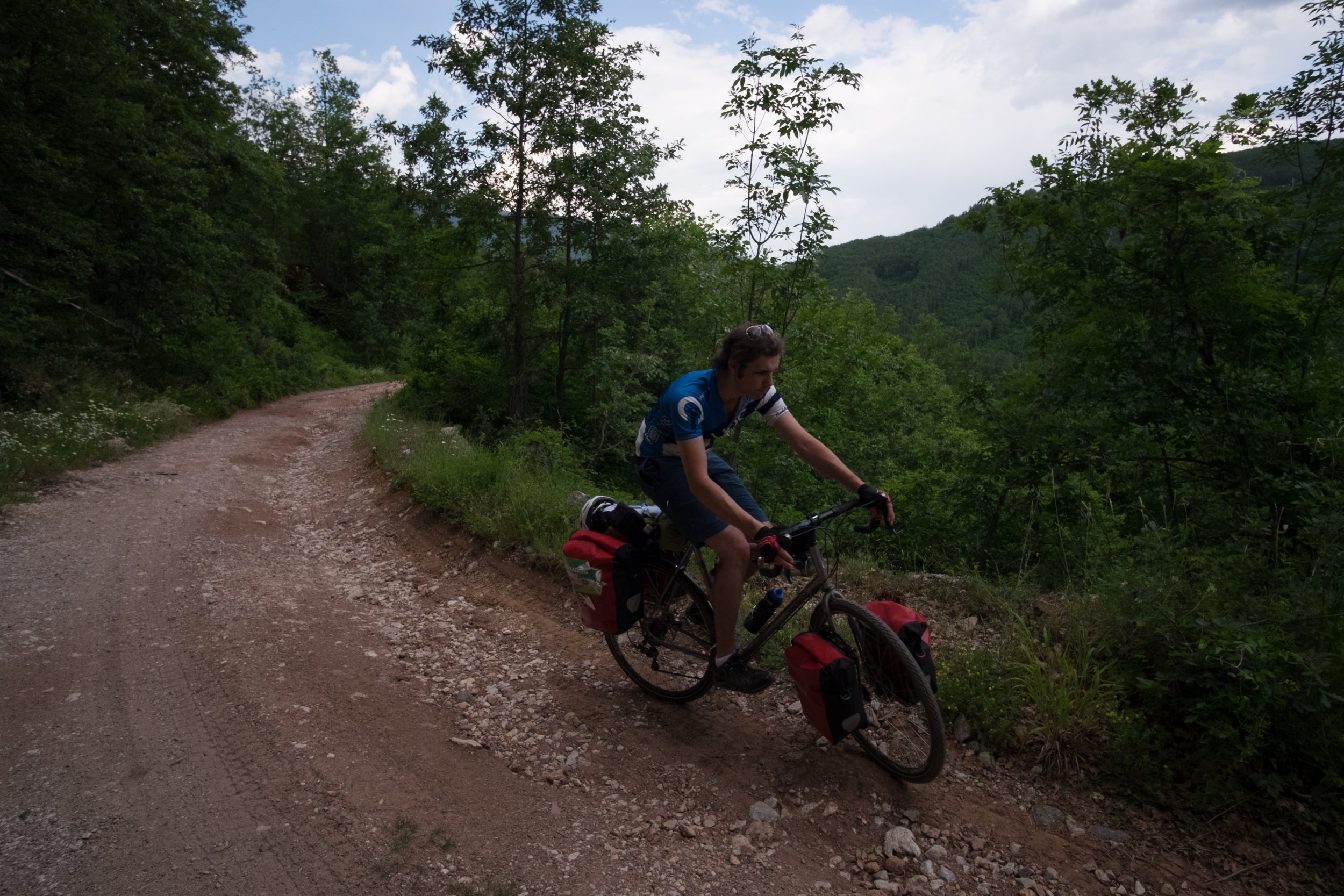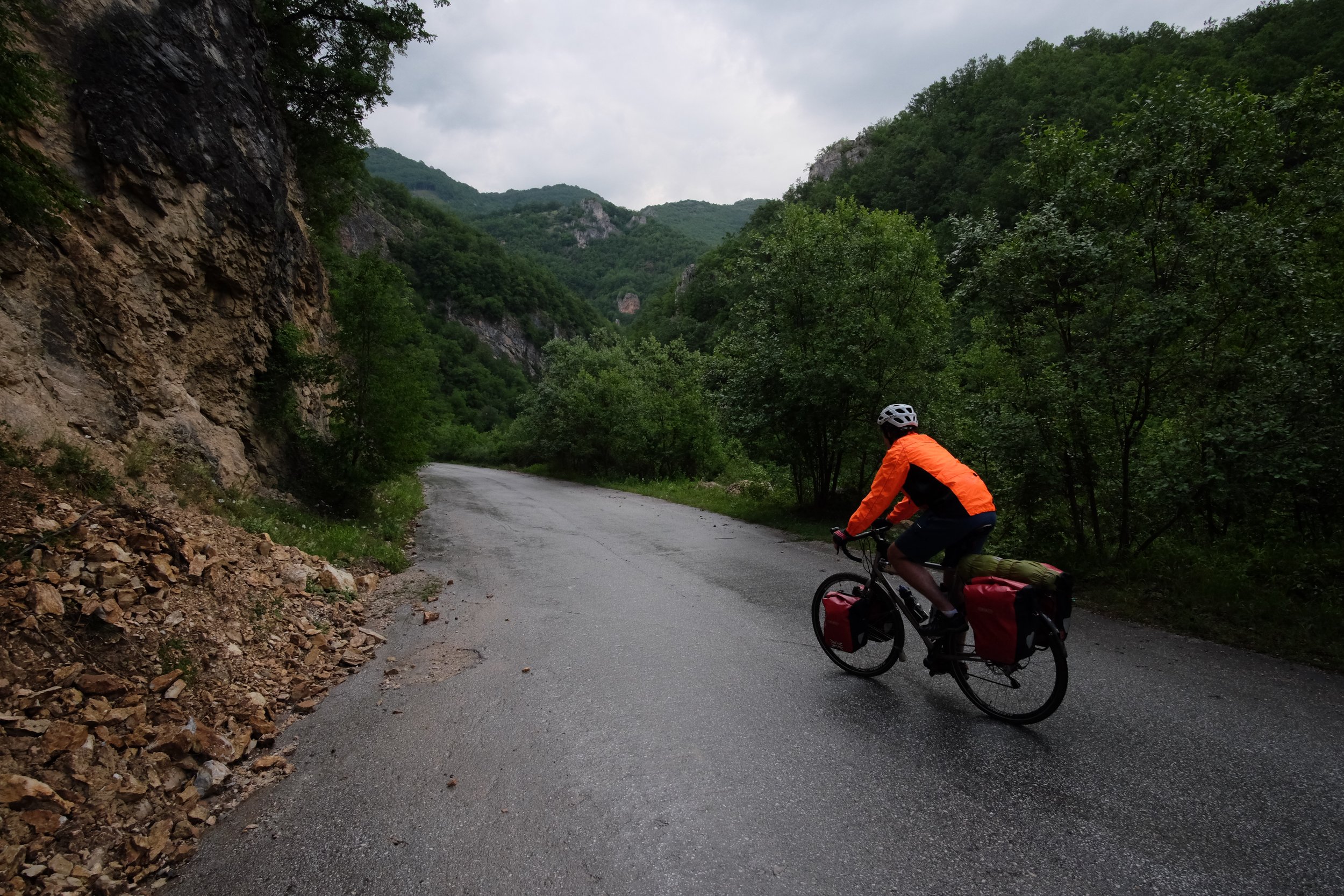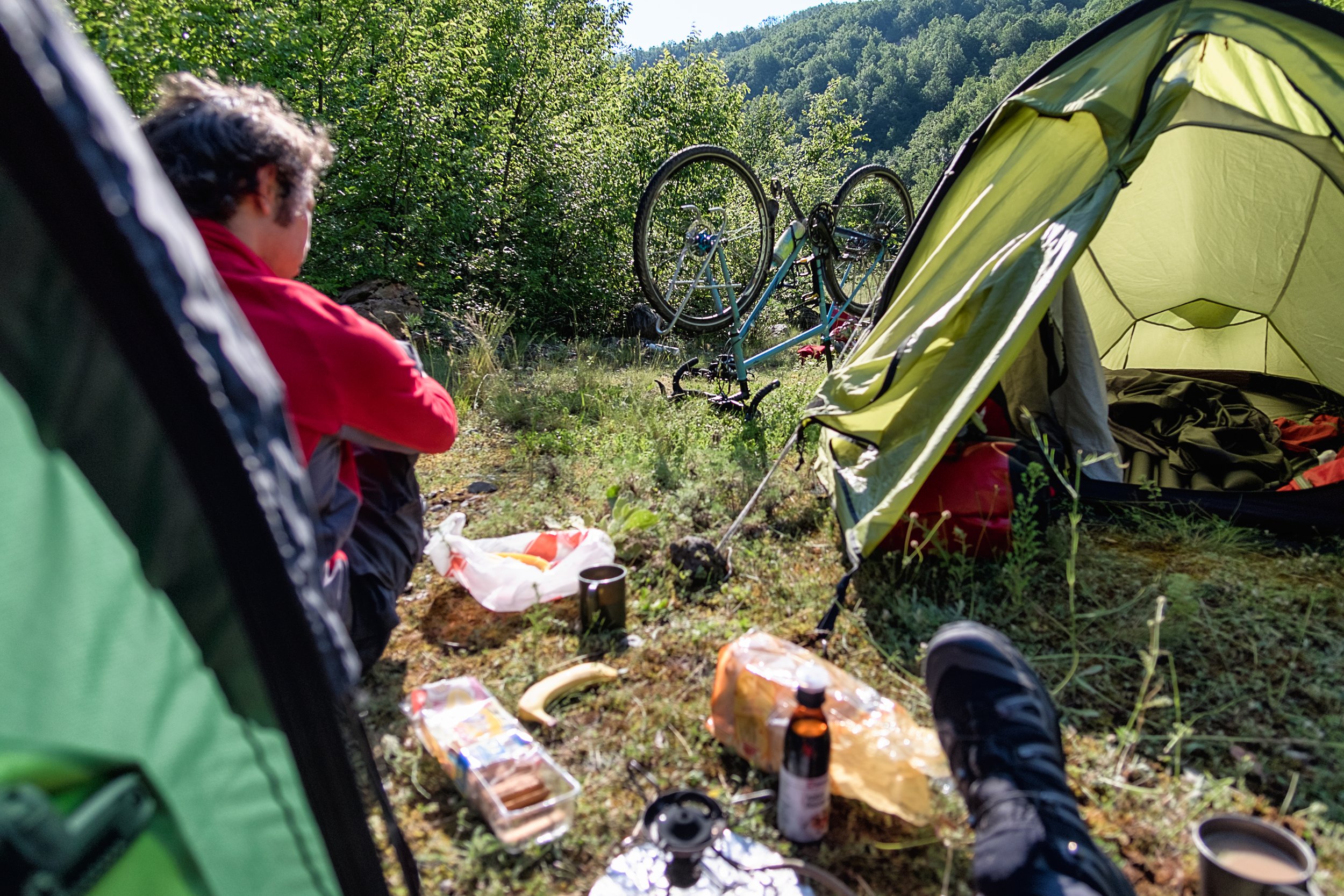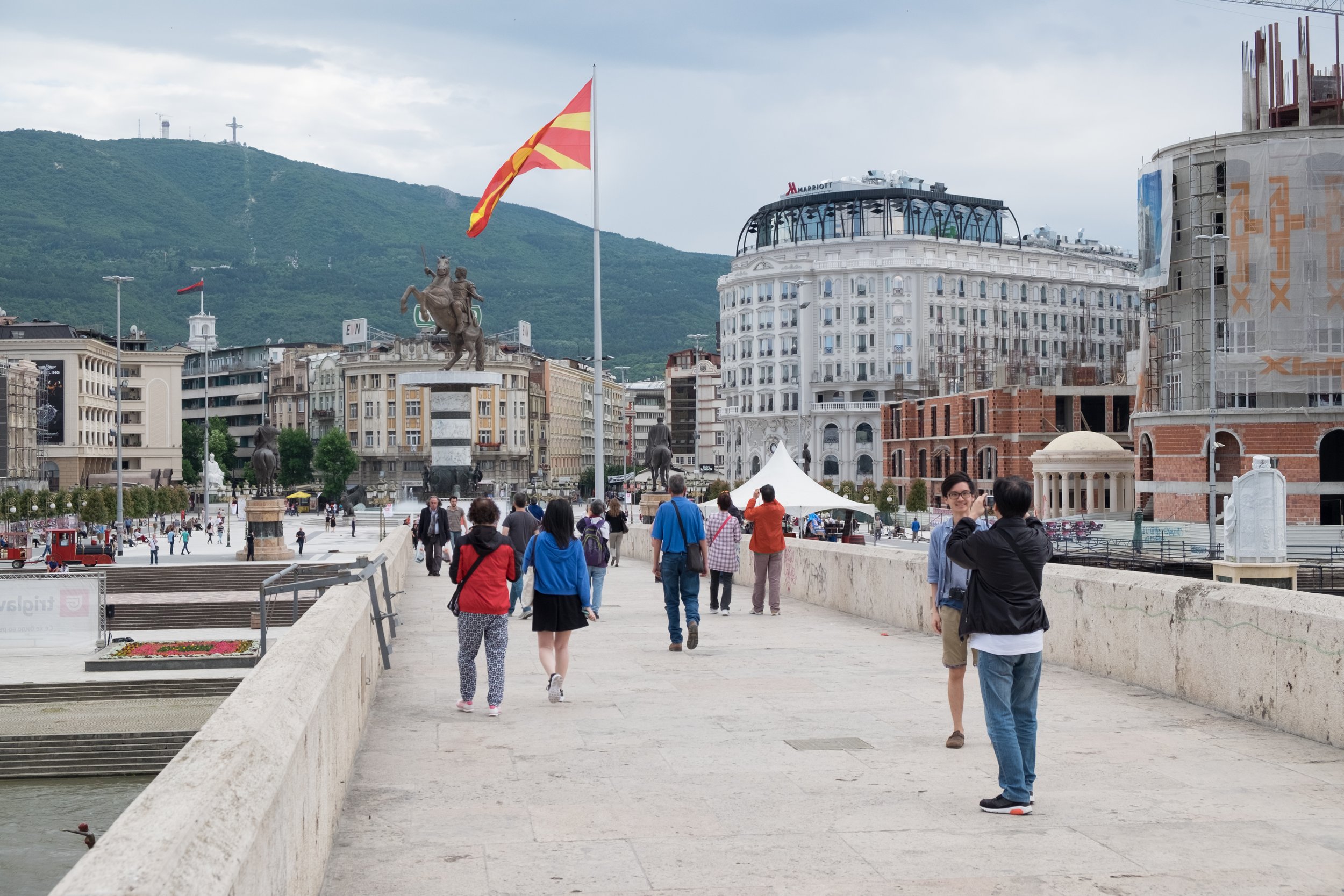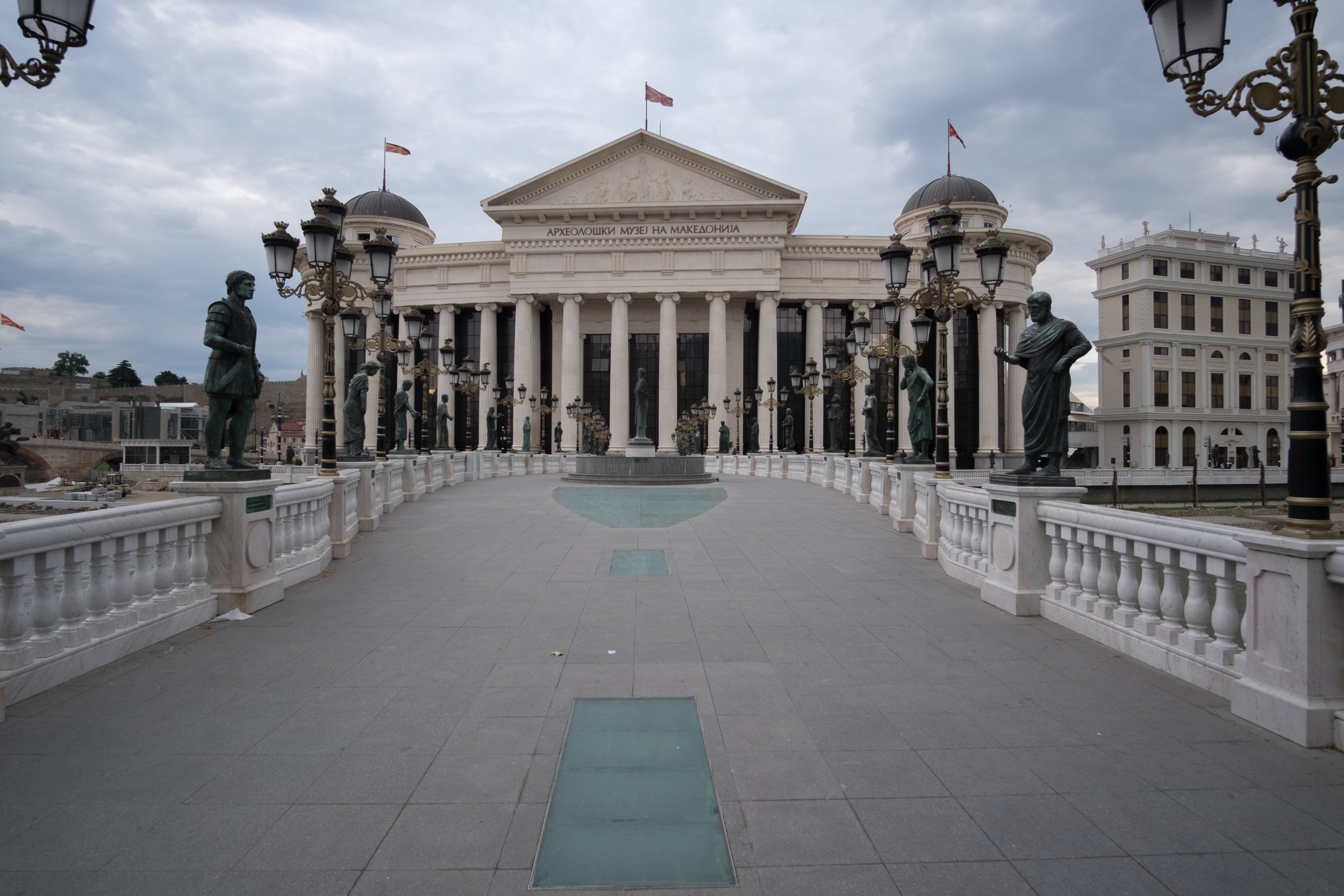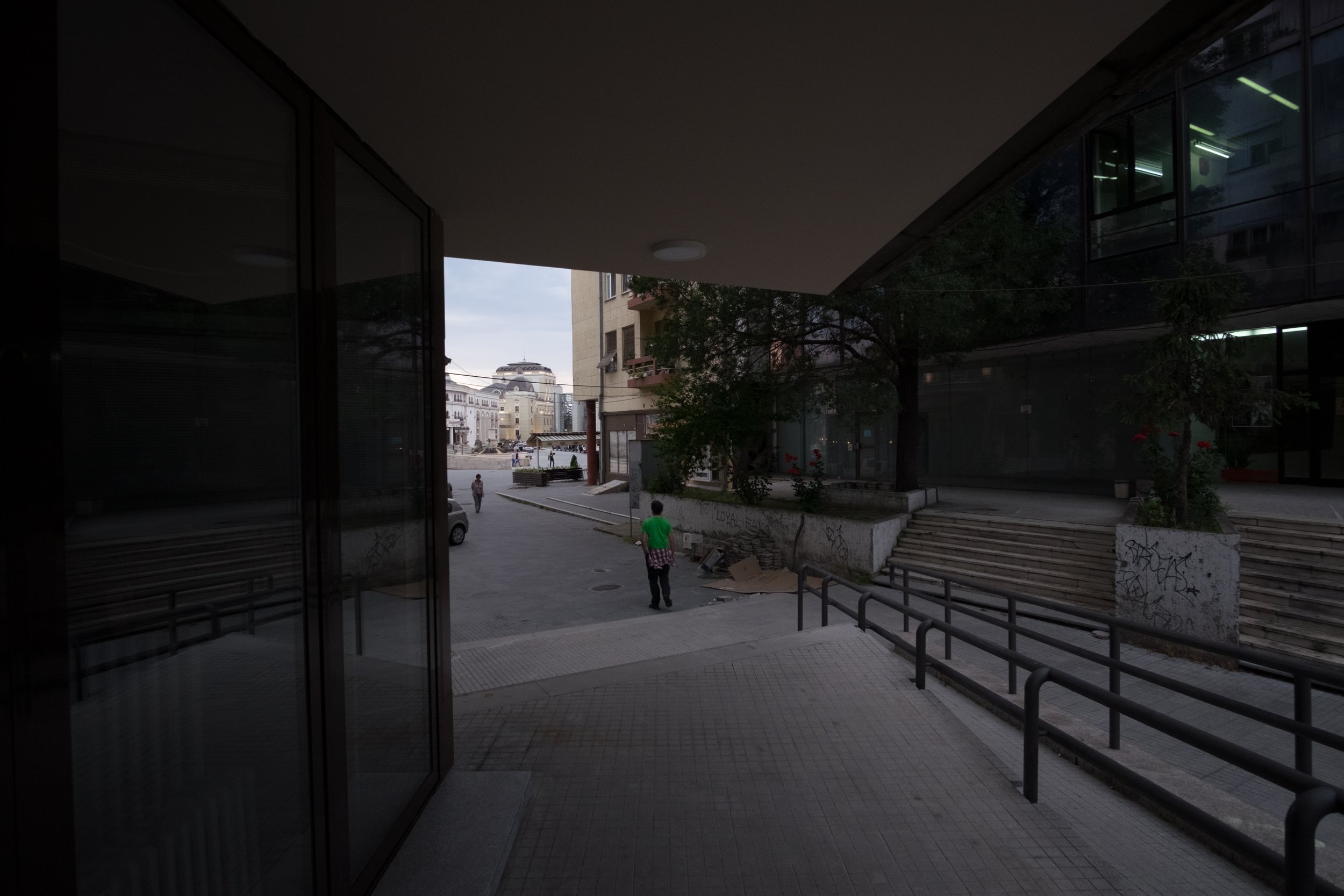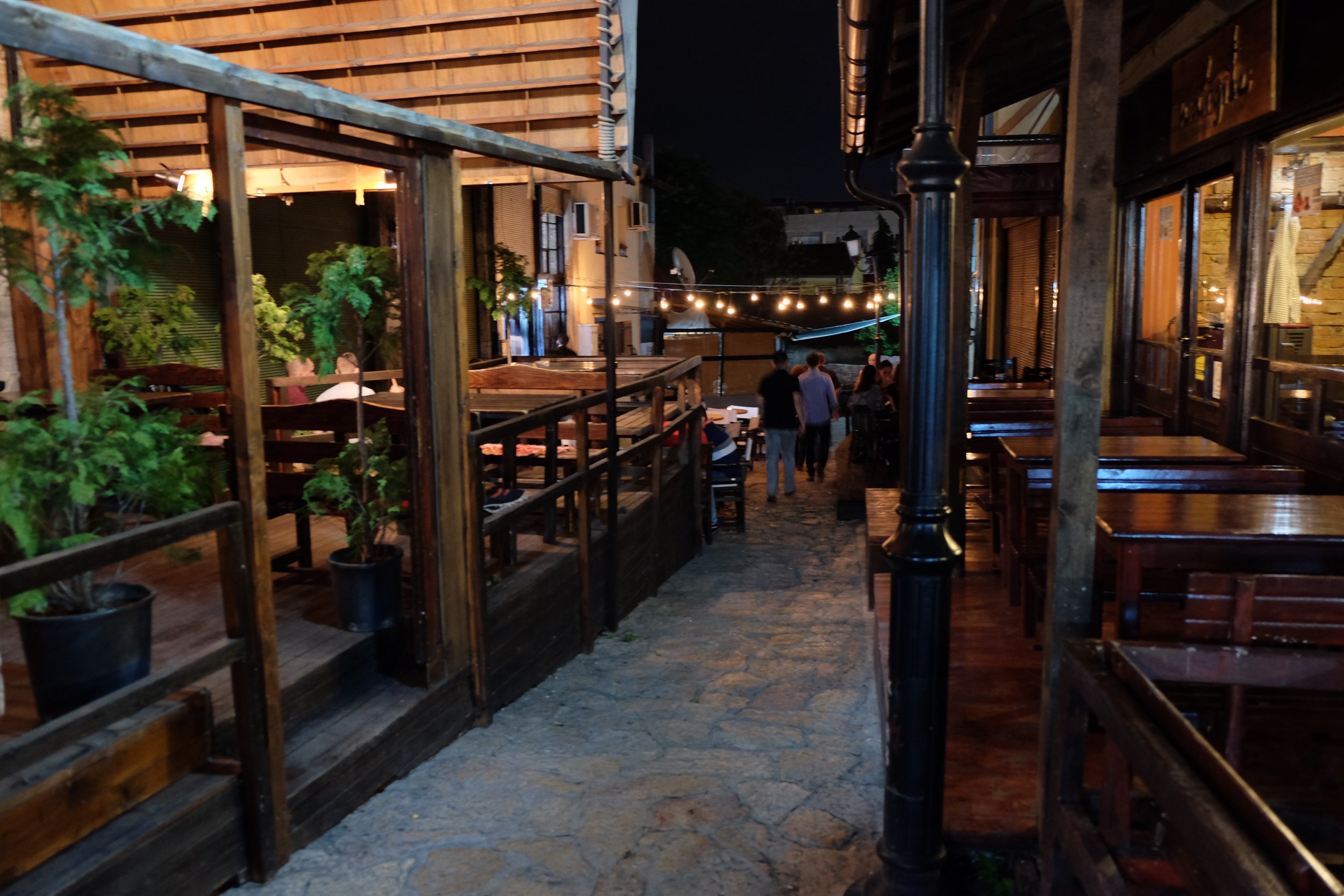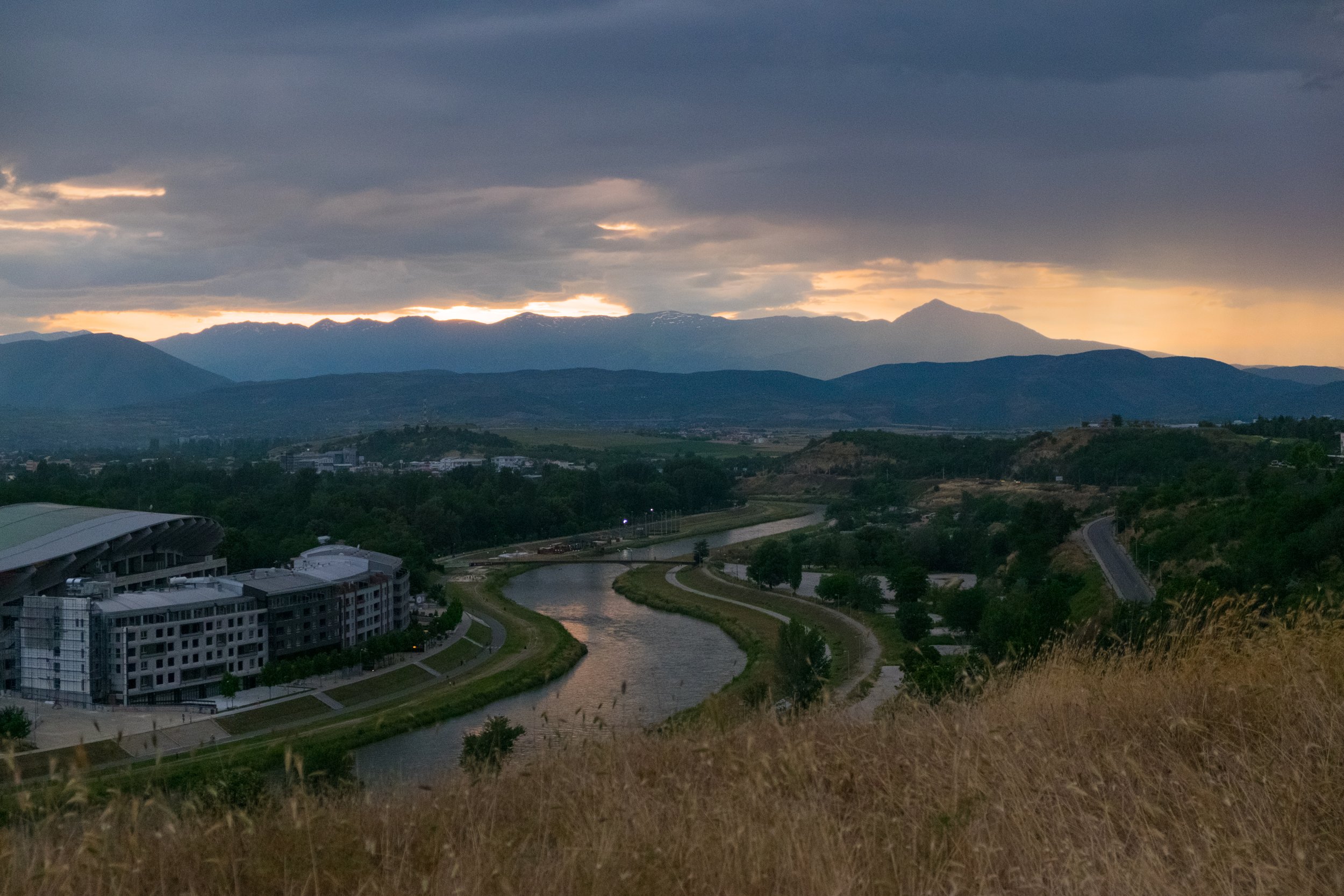Purbeck Bikepacking
It’s May 2021. We’re fresh out of the first what seems like and endless stream of lockdowns, and Mike and I are looking to rekindle the spirit of adventure we both shared during the days we’d meet up on Dartmoor at the end of the working week when I lived in Plymouth he in Torquay.
Mike has just build his Brother Big Bro, and I’m finally escaping some of what felt like endless months of DIY and itching to put some bikepacking miles on the Fairlight.
We headed to the Isle of Purbeck for a few days bikepacking.
Eurovelo: Croatia and Bosnia
We were now over 900km down. Both of us agreed that the hardest miles should be behind us now. Not necessarily in terms of the cycling itself, but the miles where your body gets used to the abuse — the strain of riding everyday. Language was going to get easier from here on as we were now in an area heavily touristed by the western countries. Looking further ahead, we both knew that when we left Croatia and entered Slovenia we would be inside the Schengen area, meaning there wouldn’t be any more passport checks.
Out of our small gathering of travellers Max and I were still the first two up. We ended up acting as the kettle for everybody, making a swift round of drinks before starting to pack down while they cooled. Watching the others I started to realise how well practiced we’d both become at setting up and breaking down our campsite after 10 days on the road.
While chatting in a restaurant the night before we’d arranged to spend the day riding with The Daring Dutchie as far as Dubrovnik, where afterwards we knew we’d have to increase the pace which meant riding as a group would not be practical any longer. Still, though, it was going to be a nice change from listening to Max talk about his favourite topic — concrete — for a few days.
We headed out, immediately turning uphill for the three of us to haul our bikes back up the steep hill we’d finished the previous day descending. The previous evening this hill had been such a relief, and now it was torturing our still-loosening legs.
On our way to the campsite the previous day Max had briefly scouted out a dismantled railway that appeared to go all the way to Dubrovnik, so when the opportunity arrived, we turned off taking it for a few kilometres before deciding it was too rough and we weren’t going to make progress fast enough.
We dropped back onto the main roads, which turned out not to be quite as busy as we’d expected, pushing on to Dubrovnik. The three of us had lunch before Dutchie went to find the hostel she planned to stay in for a few days, while Max and I went through our usual procedure of finding a last-minute bargain on Booking.com for the night.
We both quickly showered and ran all of our cycling clothes through the wash while we had access to facilities (this was the first proper wash for any of our gear since we started), taking advantage of the Mediterranean heat to dry everything overnight. We walked back into the centre of Dubrovnik to enjoy the city for the evening and locate some food; we both knew the next morning was going to be another early start as we had to get back to covering big distances everyday.
Leaving Dubrovnik saw Max and I crossing 500-meter Franjo Tudjman Bridge after just 30 minutes of riding. It was here we spotted the first set of bike tourers that we didn’t get a chance to talk to. We were cycling along the Adriatic Highway, also known as the D8; it was simply too busy, and they had their heads down going into Dubrovnik.
We spent the day glued to the coast, dipping in and out of bay after bay, looking at the yachts of those that Max would describe only as “the flithy rich” — it was hard to disagree with him. Despite the constant variation in gradient we made good progress, and soon spotted another group of tourers stopped on the other side of the road, which seemed like a good chance to stop for a few minutes. We quickly found the other group were cycling from Spain to Dubrovnik. This would be the final day of their tour.
Just as we came up on lunchtime we hit our first major distance milestone of the trip — 1000km covered — somewhere just short of the Bosnian border. To celebrate we pulled over for a relaxed lunch in a seafood restaurant on the side of the road, fully aware we may pay the price for such a luxury in the evening by having to ride into the night.
As we approached the border crossing with Bosnia we both had our passports handy, but just as we expected we passed straight through the brief part of the country we would see without being stopped. This short stretch of road took us around 30 minutes to pass by bike, and we weren’t exactly trying hard; in a car it would have been a matter of minutes. Despite the short time there we both made the same observations about the small part of Bosnia we saw: it felt rundown compared to the rest of the coastline we’d seen.
Passing through the far side of Bosnia both Max and I were starting to grow tired of the relentless undulations in the road where we’d climb over 100m only to descend it again almost immediately. It was because we were growing so tired of this that when we turned a corner and saw the flatlands open up below us we immediately started studying the map to see if there was a road we could take through them that would help us avoid the main roads traffic and any further undulations.
We descended quickly into the flatlands passing occasional houses, some occupied, and some likely empty. We noticed there was a drainage ditch running behind them with boats moored near many of the houses and the fertile lands behind were clearly divided into fields. This was land that would flood easily and often, yet it would be because of this that it remained fertile enough to keep the families here. We quickly reached a small river which led us to a weir and a lock-gate controlled marina with a small collection of boats.
We stopped here for a short while before resuming following the road along the far side that took us to a bigger river and a bigger road. This led us to a slip road would lead us over a bridge, and back up onto the main road where we started seeking a shop to buy dinner and some potential places where we could camp for the night.
It wasn’t long before we’d located an Aldi which made for a fast resupply before we continued to follow the main road until we saw a sign for a campsite. We followed the signs until we eventually found a very enthusiastic owner, who quickly showed us where to camp and where the facilities were, chatting away in slow English to us. He told us how it was their second year, and how pleased he was with how well the campsite was doing despite us being the only people there. Still though, we had clean water, showers and somewhere quiet and off the road to get our heads down for the night.
The road was blissfully quiet as we headed off again the next morning, although the heat was already unpleasantly high for what we were doing. We were spending the majority of the day on the main road with the aim of reaching Split by the end of the day - 106km away.
When you’re on a trip like this, riding everyday, your body starts to get tired. One of the things cyclists get here is a deep ache forming at the bottom of their thighs which grows quickly in intensity. As it grows it gets increasingly uncomfortable, you have two options: you can stop and it quickly fades, or you can ride through it and it'll continue to build and then eventually fade away once the legs have loosened up. As usual, I rode through it.
We made progress, stopping at Makarska for lunch and then headed onwards towards Split. We kept to the same road all day until it eventually turned into a four-lane road as we approached Split itself. Despite its size the road was relatively quiet and took us straight into the old town. Max had been to Split before, so he took the lead and headed to the place he stayed at last time. Before long we were both showered and back in cleanish clothes as we headed back out to explore the city for the evening.
Leaving Split turned out to be a more complex affair than either of us anticipated. We were trying to avoid ending up on the motorway, but it felt like every road we looked at would try and lead us into it. Eventually we found our way through onto an industrial estate which gave access to the road we needed, but we didn't make it far before Max called that he'd broken a gear cable. Pulling over we set about repairing it with one of the spares we were carrying before heading on again.
We left the coast for the first time in Croatia in an effort to cut a large dog-leg, this came with the cost of some big hills, however the coastline would have been undulating anyway; it's the nature of cliff-top coastline. Much of the day had been overcast but now the sky was clearing just in time for the days climbing to begin, and as the sky cleared the temperature shot up.
The general theme in Croatia was long undulating roads without much of interest to the riding itself, however we spent the entire time surrounded by stunning scenery. This was no exception as we dropped into Grebaštica for lunch around 15:00 on a long white beach. The staff running the hut fed us both and refilled all our bottles with a mix of water and ice to help keep the water cooler as we headed on.
A little later in the day we stopped in Šibenek, and after a break resumed following "the line" which tried to lead us straight up several flights of steps. We both cursed as we hauled our bikes up them fully loaded before jumping back on at the top and following the road out of town.
Around 18:00 we arrived at the campsite for the day. We each paid €15 and proceeded to struggle to put our tents up on the gravelly ground, before having a cold shower (the "solar" water heating didn't seem to work too well) before heading up to the bar we'd been invited to for some ‘shells’. The campsite owner had a massive vat of mussels cooking over an open fire in the yard and handed us each a plate and bread before telling us to help ourselves. While we were eating the campsite owner told us about the area, pointing out exactly where his mussels were collected from in the sea. These are about as fresh as they get.
Once we'd eaten we headed back to the tents to get ourselves sorted for the evening, and as we were getting everything straight the skies opened and the rain pounded down around us. Every couple of seconds the sky would flash which would be quickly followed by the ground shaking from the thunder. After an hour or so the rain stopped so I grabbed the camera and ran down to the waterside and started photographing the lightning. Less than five minutes later the rain returned so we ran back to the tents for the night.
The next day we were up early. The day's target was Novalja, 130km away. The town is located on a small island called Peg, linked to mainland Croatia by a bridge at one end and a ferry at the other.
The days riding went smoothly over ground similar to that which we'd been riding through for the last few days until we reached the island. Here we stopped in a small town to restock on food before heading on using a small dirt road that ran parallel to the main road. We followed this for some distance before we found a pile of dirt with a blockade on telling us the road was closed. Not wanting to double back we simply pushed our bikes around it before continuing and found the road was collapsing. We kept going regardless until we eventually found a second blockade just short of a tarmac road again. Following this we quickly rejoined the main road for the next stint.
Arriving at Novalja we were disappointed to find that the campsite we'd had our eye on was a massive complex. We were riding along it's fence line for over 1.5km before we found the entrance. Here they asked for €24 each. The staff spoke perfect English, so Max tried to barter with them a lower rate as we were on this trip for a good cause... they didn't relent so we paid anyway and pitched up before grabbing a shower and walking into town for dinner.
Arriving in town be both quickly realised why the campsite here was so expensive — this town was built for the student–tourists; we were surrounded by the “gap-year” crowd. I took some photos of the sunset from the beach, and while I was doing this someone came over and asked about the photos. They asked for us to come up to the bar, built on a platform over the sea, after we’d eaten. We went and found some over-priced food before heading to the bar where the manager promptly handed us a beer each and started chatting about the photos. After our free pints we headed on back to the campsite for the evening.
We were now 16-days into the trip, and starting to build momentum with the first 1500km past us; we estimated another two days to cross the border into Italy at this point. As we packed down to start a new day Max discovered a tent pole had broken. He decided it would be a good idea to scavenge an old beer tin to make his own splint rather than just using one of the ones we were both carrying for this exact scenario; despite this we headed off to Lidl to restock on supplies for the day before heading on.
Outside the supermarket I spent some time chatting to a pair of Austrian mountain bikers. You could immediately tell we were closing on Western Europe again as they approached and asked me about my views on the, at the time, quickly approaching Brexit vote, just three days away. After chatting about this and bikes for a short while Max reappeared so we bade them both farewell and made for the ferry back across to mainland. On arrival it turned out we'd just missed one, so we took a seat while we waited and Max started on his tent pole repair.
After an hour or so the ferry arrived, and so after the 10 minute crossing we were first off the ferry and both immediately got stuck into the long and steep climb up to the main road above us. It was already 12:00 as we ascended the steep climb making it torturously hard work without even a hint of wind.
The riding throughout the day was relentless as the undulations never seemed to stop on what must have been one of the hottest days of the trip. We moved our sites down from Rijeka to Senji, and then again to Selce where we ended up camping the the night. We found pizza and beer after the days riding and sat looking at the maps coming up with a new plan. We decided that we'd aim for Rijeka for lunch the following day now, and aim to stop for the night at Triest which would make for a short day to Grado the following day before a proper – and much needed – rest day the day after.
Initially the days riding was fairly flat until we reached a large industrial bay we had to ride around on the slowly ascending road with several large works plants loading ships below. The head wind was torture as it whistled through the bay but we kept pushing on as hard as we could, knowing that we had to make good progress today to get our rest day.
Somehow we managed to make it to Rijeka for an early lunch, before we went and spent the last of our currency on snacks and supplies in Lidl. We wouldn't be needing it anymore at the rest of the trip would be on Euros until we got back to England, except a small stint in Switzerland. Leaving town it was once agin 31 degrees centigrade, without a breath of wind, and the buildings surrounding us seemed to make this worse as the heat reflected off of every surface.
At Lidl we spoke to a guy who was doing a circuit Audax around Croatia — he'd just cycled 500km in two days, having only slept briefly in a bus shelter. He stopped for long enough to scoff some food while chatting to us before jumping straight back on his bike, and headed off in the direction we were headed. We didn't see him again.
Crossing the border into Slovenia was surreal looking around and the abandoned border posts. We stopped at one for a while, using them as shelter from the sun where once we would have had to show passports before crossing. After a short while we moved off into the rolling hills of Slovenia with meadows as far as the eye can see. It felt like a peaceful and tranquil place in our short time there.
Stopping at "Porkeys" for dinner just 250m short of the Italian border we had a relaxed dinner here before picking a campsite out on the map in Trieste and then heading off for it. We were trying to avoid going into the city, and so found ourselves climbing more painfully steep hills as the sun set behind us. Through luck alone we ended up on a campsite with views overlooking the entire city, and sharing a small pitch with another cyclist. The guy explained that he was a British expat who was cycling to China while stopping and teaching English en-route.
For once we didn't set an alarm for the next day, knowing that we didn't have far to go at all and wanting to get all the sleep needed. Croatia was far from Max's dubious statement during our planning of being "flat", and combined with murderous heat and now the wind made it had been very hard work. We were now, however, back in Western Europe and ready for a few more relaxing days before we got back to clocking up the miles.
A Night on Helvellyn
After spending the previous week in the Lake District National Park I decided to end the trip with something a little different. Armed with a basic overnight kit I left Glenridding at just gone 16:00 — when most people were heading back down — for the summit of Helvellyn, a 950m mountain which features a large and rocky summit with a small wind break on the summit: and it was this wind break I had my eye on to provide shelter for the night.
I headed up past the youth hostel towards Red Tarn where others were already setting up their tents for a night under the stars. At 820m I still had over 100m of ascent left before I’d reach my home for the night. I was coming up this route simply to cut the weight I had to haul with me: I’d need water for my dehydrated beef stew dinner, as well as to drink once on the summit where there is no water. I’d have to carry everything I need, so I stopped here to fill my Platypus and Nalgene bottles with 3 litres of Red Tarns finest mineral water, to which I quickly added a few chlorine tablets for safety.
Continuing my ascent I now headed along the path back towards the hole in the wall, before doubling back along the start of Striding Edge, a knife-edge ridge approach onto the summit of Helvellyn with steep sides which could result in severe consequence in the event of a fall. There was only a gentle breeze so I was happy to commit to the 1.5km ridge having previously completed it, despite my heavy pack.
Taking it steady I made my way along the ridge carefully navigating the features as to not slip or trip — something which could be fatal at the best of times here. The entire ridge was just as I remember it from when I last completed it a couple of years back.
Reaching the summit I dropped my bag on the bench in the wind break (simply marked as “shelter” on OS maps at grid NY342150) before looking around at the evening light falling over the hills all around me. The views were absolutely stunning; the next couple of hours were spent running around with the camera.
As the sun set I spread my bivvy bag out on a bench and settled down to make some dinner and coffee before getting my head down the the night.
Anyone who’s spent any time in mountainous regions will be aware of how quickly the weather can turn. The sun set at 20:10 and by 22:00 the wind was starting to pickup. It wasn’t too big a deal where I was behind the wind break – well sheltered from the southwesterly wind.
Around 2:00 I woke up feeling like my face was being sand-blasted. The wind was now hitting the shelter and blowing their debris off the top of the wall straight onto me; slowly piling it up on my face.
At 5:00 I woke again. This time I couldn't open my eyes the sediment had piled up so much in the night. Sitting up in my sleeping bag I wiped it away and opening my eyes saw the colour starting the develop in front of me — a faint orange smudge against an inky blue sky. I pulled my down jacket on and my waterproof over the top to keep the wind out and clicked the JetBoil into life to make a coffee to help me wake up while I started thinking about packing up and shooting the sunrise. Even inside the wind shelter I was being buffeted by the wind so I wasn't keen to leave the protection of my sleeping bag and bivvy bag quite yet.
As 5:30 loomed up I had 40 minutes now until the sun would peek over the horizon for the first time; I reluctantly left my sleeping bag and set about stuffing everything back into my rucksack as quickly as I could. When I'd left the night before I'd thought about packing everything into a smaller rucksack, I was now grateful I could just stuff things in with no concern for how well packed it was, this wasn't a time where careful packing would be easy.
Leaving the shelter I was almost blown off my feet; I carefully moved towards the summit of the mountain again, hoping that I'd be able to find somewhere with enough shelter to setup my tripod and shoot the sunrise. Helvellyn's summit has a small ledge above the sheer drop down to Red Tarn about a foot below the main top, and a foot wide and it was here that I found enough shelter to setup my tripod using my heavy rucksack as a counterweight to help battle the wind. Everything was vibrating as I tried to shoot different angles from this position without moving more than I had to.
The light was amazing as the sun approached a small gap in the clouds briefly lighting up the entire scene and the plumes of clouds coming off some of the other summits around me.
With the light fading the wind seemed to be picking up still, so I threw my camera gear back into my rucksack. My original plan had been to descend via Swirral Edge, a small knife-edge ridge that runs down the other side of Red Tarn to Striding Edge. The wind meant that would be impossible, so instead I made for the longer route down which goes over Whiteside, but with the major perk of having no sheer drops off which I could get blown. I knew until I lost height I was not going to find any shelter from the wind now; I set off pushing as fast a pace as I could.
After 2km I finally stopped for a few minutes, in the shelter of Catstye Cam which was blocking the wind from reaching me. At this point I stripped off a lot of layers; walking in a down jacket is hot work in any weather. Heading off again I found myself walking into Glenridding around 8:00, just as the first walkers of the day were making for the start of trails around the village.
This was a short 'microadventure', but it's a great way to spend a night nonetheless. This really is not something to try unprepared, the weather changes quickly in the mountains as demonstrated on this particular night. If you want to repeat an adventure like this you should make sure you have a map and compass, and know how to use them. It's pretty common in places like this to go to bed with a clear sky and wake up in a cloud. To repeat this particular route you'll need OS Map OL6.
I took the following gear on this trip:
Outdoor Research Helium Bivvy Bag
Exped Synmat UL
Rab Ascent 700 Sleeping Bag
JetBoil MiniMo
Platypus (2l)
Nalgene (1l)
Summit dehydrated meal
Trail mix, serial bars
Montane Featherlight Down Jacket
Mountain Equipment Shivling GoreTex Pro Jacket
Berghaus AQ2 Waterproof Trousers
A stripped-down selection of camera equipment (full gear list) in an F-Stop ICU
Osprey Ether Rucksack
Ortlieb Map Bag, OS OL6, Silva Compass
Garmin Etrex 30 GPS
Headphones, my phone and my Anker battery
Eurovelo: Montenegro
I found Max just past the border crossing topping up his suncream once again. We were now in the fifth country of our trip, and very much aware that this was where the pace would slowly start to increase as the roads and infrastructure would start improving more the further north we would push.
The remainder of the day saw us taking it steady as we navigated along a valley with a small mountain range on our right, and a set of low hills to the left. The scenery created a stark contrast from the plains of Albania we’d spent much of the day so far crossing. Behind the mountains was the massive Lake Skadar we’d originally intended to skirt in order to reach Petrovac. This didn’t matter anymore now though, as we both knew we’d reach Sušanj tonight, and pass through Petrovac early the following day.
Our route along the valley floor undulated gently, taking us quickly to our days destination. On arrival in Sušanj we quickly located a restaurant to purchase some dinner where we could sit near the bikes, and using their WiFi followed our now normal city regime of booking a hotel on Booking.com while we waited for food to arrive.
Two family sized pizzas later we were rolling down to the sea-front before taking a slow ride along the path above the beach looking for the apartment. After a brief affair of struggling to find it in the back-streets we located two large gates and a man quickly approached us, opening the gates for us and pointing to where to leave the bikes and showing us to our tiny apartment — not much bigger than the two single-beds that occupied it.
We both took advantage of the early finish, and all the space in the secure courtyard to give the bikes a little affection before a long cool shower (having waited an hour for the boiler to warm up to get anything above freezing) and give some of our clothes a brief wash out. An early night would do us both good after the intensity of pushing through the remote regions of Albania.
After a small lie-in we stood waiting for the electric gates to open at just gone 9:00. We quickly retraced out steps to the beach from the previous evening, briefly stopping at a shop to grab some breakfast and snacks, before sitting on the beach to eat. Both of the bikes were running much lighter than normal today, as we knew we’d be passing through towns and villages fairly regularly now meaning we didn’t need to worry about finding supplies until later in the day.
If all went to plan today we’d cross into Croatia before the day was out, putting us back on-schedule after the fiasco in Macedonia after finding our planned route was essentially impassable.
Throughout the day the riding was setting us up nicely for what we’d be expecting in Croatia over the coming week or so. We’d follow the coast north for a lot of the day before pulling in-land to get a ferry across the Bay of Kotor. After this we’d follow the coast-road to the border with Croatia and cross this before figuring out where we could reach to stay for the night.
We didn’t make it far before Max pulled over with the first puncture of the trip. I sat down for a few minutes playing with a local kitten while Max pulled his tyre off for me to inspect while he located his spare inner tube. It was only a few minutes before we were on the way again, making a mental note to repair the original inner tube in the evening as a replacement spare.
We spent much of the day riding above small towns and villages on a busy road which was clearly built to link all of the towns. We thought about leaving it for the smaller roads, but quickly agreed the undulations would be an absolute killer, so opted to stay on the main road as the drivers were — generally — being respectful.
As we approached Budva we diverted onto the old road which had been closed for cars and descended gently to a tunnel through a headland before popping out on the waterfront in town. We followed this until we located some lunch, and then located the road the the Bay of Kotor ferry crossing. Once the initial climb was out of the way this proved to make for easy riding which quickly levelled out.
Once we’d crossed the by a on the ferry we managed to avoid any significant climbing until we hit the border crossing. Here we passed through the first checkpoint, before proceeding to climb for over a kilometre before we arrived at the Croatian side of the border checkpoint. Here we joined the queue for EU citizens and were waved through after nothing more than a glance at the cover of our passports.
Locating somewhere to stop for a few minutes we had a look at the map and found a campsite not far off route right on the seafront. We pulled off the main road and started following the smaller lane towards the village of Molunat.
Our first night in Croatia turned out to be an entertaining one. On arrival we went through the usual routine to getting our gear sorted before Max went off to swim in the sea (which after a minute he decided was “too salty”) while I went to shoot the bay. When we got back we found another person around our own age setting up a tent next to ours who was walking the Croatia coast on his own.
We spent a few hours chatting about our own adventures before it started getting dark and decided it was time to go and get food, as we stood to leave another cyclist turned up who we started talking with. She was on a solo cycling expedition around Europe and travelling under the name of _The Daring Dutchie_. She was clearly tired and hungry so we helped her set up her dinner (while Jamie went off to find some footie) and then went off in search of dinner and a group. Three main meals later it was time for bed.
Eurovelo: Bad Roads and Big Diversions
The fresh air hit me as I left the hotel in Bajram Curri. The haze of smoke had followed us everywhere as we walked around the hotel, never able to escape the smog rising from the bar where most people chain-smoked over espressos restlessly.
We wrestled our two heavy bikes down the steps, already loaded with all our gear and started rolling downhill out of town, hoping to find a small shop as we went where we could pickup some supplies for the day. We should have been heading the other way — north, uphill — but after acquiring some local knowledge the previous evening we quickly realised our planned border crossing wasn’t going to happen, so we had to make a diversion in excess of 100km south — further into Albania — before cutting west and then north again to reach Montenegro.
We’d spent the evening in the bar using the free WiFi trying to plan this diversion out, using Google Earth in attempt to figure out what the road and terrain would be like. Despite all of this attempted preparation we still had no idea what was coming. What we thought was lightly undulating would soon turn into significant climbs, and so what we thought would take the morning took most of the day.
Still, ignorance is bliss, and so we were both happy to have escaped the hotel smog at last as we rolled out of town without finding any shops into the mountains. We would start the day on a fantastic descent surrounded by some of the best scenery of the trip so far with the clouds shrouding the mountains all around us as we steadily descended towards the valley floor on surprisingly good tarmac.
Before long we found ourselves in front of the dam holding back the Fierza Reservoir. The dam was built in late 1970s by the Albanian government for a hydro-electric project. The dam wall is 167m tall, and the dam is 70km long; we’d have to ride to over double this height to keep to the road, which would drop and climb heavily for the full 70km length before swinging to the right straight through the mountains that surround the reservoir.
As we stood on the dam a couple of Slovakian motorcyclists told us in broken England that it was a big climb and a long road. The language barrier stopped us getting any real information from them, so we settled in for what we hoped would be the only significant climb that day to climb clear of the dam.
The road was relentless. It was always climbing or descending without a break on a road surface that was less than ideal. In a single corner we’d regularly go from tarmac to gravel to mud to find a couple boulders in the middle of the road before switching back to tarmac and avoiding a man-hole with no cover; you had to stay on your toes.
The day was torturous as the novelty of the views wore off and we both grew tired of the constant and unexpected climbing. We’d both run out of food too, down to our last few nuts, and were now desperate to find somewhere to either re-supply or buy a meal to keep us going. Eventually we found a hotel where we stopped for lunch around mid-afternoon and quickly bought some pasta dishes of the menu. Mine quickly turned out to be just a plate of pasta with some olive oil on, while Max’s was pasta with some kind of tomato sauce on it. We both quickly demolished this, before getting distracted on our way out by a large cage.
We stood there looking through the bars of these small cages at two brown bears, each separated from the other and both looking very bored. Neither of us were impressed by this, it seemed cruel to leave these animals locked up in such a small space, barely enough to stretch out; I made no effort to hide the bars when I pulled the camera out. With this we quickly hit the road again, it was now getting late in the day and we really needed to get out of this valley before dark and find somewhere we could get a proper meal and stay for the night.
We hit the road again with renewed energy. Eating always makes a huge difference on big days like this, and we were soon leaving the mountains and making progress towards the main roads where we hoped the terrain would level for a bit and the road surface might improve. As we reached the main road we saw it fall away in one direction and climb in the other so we checked and double checked the maps before turning right — downhill — and were soon cruising through the forests on a wide and very well-made road towards the valley floor.
We quickly came to another post-industrial town which had a very similar feeling to Bajram Curri, so we made the call not to stop. We were aiming for the town of Puké which wasn’t too much further anyway, and acted as at the regional capital for the part of Albania we’d been cycling through all day. As we passed out the far end of the town we soon began climbing into the mountains again, except this time the climbing was over within an hour as the road levelled and we started spotting luxuriant meadows among the forrest to the right. We made a mental note of where we were as a potential camping spot before continuing. A few minutes later we arrived in Puké.
Puké wasn’t what either of us had expected. As we rolled into town we were surrounded by large expedition vehicles covered in sponsor logos and large motorcycle companies. As it turned out we’d stumbled across the 2016 Albania National Rally, and there were teams from all over the world here to compete. As I looked around I spotted Max just ahead gesturing money and slowly saying "lira” to a group of children. They ran off and we rolled along behind them on our touring bikes until they stopped outside the bank. We both took out some more cash before heading into the shop next door to pickup some snacks and breakfast supplies for the next day.
Riding back up to the top of town where the rally was based we leant our bikes up against a busy looking restaurant and went in looking for dinner. We were quickly offered a table outside where we could watch the teams preparing motocross bikes and expedition vehicles to move out the next morning while we ate. A group of germans came over to ask what were were doing in perfect English before going back to their tables and laptops.
After dinner we took a short ride back out of town and up the hill to the meadow we’d spotted earlier which turned out to be much harder to spot in the dark under our lights before setting up the tents and getting our heads down for the night ready for an early start the next day, hoping to make it into a more populated area of Albania where supplies would be easier to come by.
We woke early after a peaceful nights sleep. The road we’d dropped off to access the meadow was now busy once again, but we couldn’t hear any of the traffic from the tents. We both quickly ate and packed down so we could hit the road early, ready for a big day.
Following the main road back towards Puké we took the left fork in the road this time, following the bypass around the town that would save us descending into it just to climb back out the other side. The tarmac was relatively new which allowed us some fast progress as we flew along the road.
In front of us the ground opened up as the road swung around to the left as the forest trees came to an abrupt stop, contouring along the vast valley which just appeared below us with near-vertical walls. We both pulled over to take in what was in front of us, and the endless line of spaced-out expedition vehicles along the ribbon of switch-backing tarmac down one side, over the bridge, and back up the other side. We both knew the descent was going to be a good one.
Max let me go ahead so I could setup a couple of photographs and set off once I gave him a wave. It was hard to take a bad shot here. I quickly packed down and we both hit the road hard for the bridge, before grinding to a halt on the hard and steep climb out the other side. It was hard going — even some of the huge expedition 4x4s the rally teams were using were struggling on this climb with steep and tight corners.
Eventually we hit the plateau top again and spent a while cruising along a flat road in desolate terrain — sand-coloured bedrock as far as I could see with a black ribbon of tarmac straight down the middle, slowly winding its way along the latest line. It was on this road Max and I were surprised to see the Google Street-view car driving the other way — providing the only picture of both of us as the same time.
Eventually we rounded a corner and saw the ground drop away again. Unlike the previous time though the ground didn’t rear up steeply on the other side — quite the country. This time it dropped as far as the eye could see, and we both got rather excited and the prospect of the decent down to the plains of Albania below.
We flew on this one, hardly letting up on the fast and twisting tarmac as we wove our way down the side of the mountain's plateau until we eventually left the desolate colours we’d been riding through for the last few hours and hit the vivid greens of the valley floor, and with that the road quality deteriorated again, the traffic came back, and we had to work for progress once again.
I say we had to work for progress, but we never really had it that hard in the remainder of Albania. We spent the morning crossing the rough and broken roads along the valley floor, regularly subsided or missing sections until we found the city of Shkodër. Here we found a restaurant and sat down to celebrate making through Albania. We were now just a couple of miles short of the border with Montenegro and it was only lunchtime.
The driving in Shkodër would be unacceptable in the UK, and Max and I both maintain they were some of the most terrifying roads we’ve ever ridden. People were impatient, and vehicles rarely stopped moving. We approached one roundabout as we were leaving town and had to simply aim and hope for luck as we shot across it. Stopping wasn’t an option, we just had to copy everyone else and hope that nobody hit us. By some stroke of luck we made it.
As we approach the border we saw another tourer going the other way. He was a few years younger than us, and travelling solo. He was doing a vary similar route to us in reverse — skipping Kosovo and going straight into Macedonia — so we passed on our advice not to drink from any public water fountains in Albania due to bad water and then pushed on over the border crossing back into Montenegro.
Eurovelo: Kosovo
Directly in front of us an imposing black structure towered above us, covered in decades of dirt and decay, a clear heirloom of the Soviet era. We’d just crossed the border into Kosovo and were already at 375 meters, having started at 240m that morning in Skopje, yet the days climbing had barely started.
We’d been riding for a couple of hours already, leaving Skopje about 9:00, so we quickly found our thoughts turning to food and decided to stop at the next town — Kaçanik. We found a small burger shop in town and took a minute to figure out what language the locals were speaking before pulling the phrasebook out and ordering two burgers in German. The two men working in the store quickly became excited when they realised we weren’t local, and we had a short conversation where we all spent a lot of time looking words up in the phrase book while we explained were were from England, and planned to ride across Europe.
After lunch we were headed for the Sharri National Park. As we climbed everything started to feel a lot more western as we left the buzz and heavily trafficked roads behind and climbed into the mountains. The ground around us changed rapidly as the the hills quickly became steeper and rolling meadows spread out either side of us. Steadily we progressed throughout the day wondering when the climbing was ever going to end. Eventually the rolling hills got steeper still as we climbed into the real mountains, where we eventually stopped for a break by a small stream which seemed to be a popular stopped place as cars frequently moved in and out of busy nearby lay-bys.
We stopped here for a while, letting our legs recover from a seemingly never ending climb and spent a little time watching the river and locals pass by. We seemed to go entirely unnoticed. Soon we were underway once again on the never-ending climb passing groups of people filling plastic containers of water at every stream now and loading them into the back of cars. I wouldn’t have wanted to drink of of the water from these waterways now as the rubbish piled and and around them seemed to increase with each we passed.
Eventually we saw buildings — Prevalla — at a height of over 1600m. We’d reached the top of the pass after a days endless climbing with over 1360m of climbing. It would be too cold to camp up here with the equipment Max had, and as it was late we knew we’d have to make for a fast descent to find a hotel or somewhere to camp.
Over the next half an hour we kept dropping further and further until, around half-way down the pass, we happened across a hotel. Looking quite upmarket we found it to be — as expected — out of budget, so we keep descending until we found a normal €30 room at another hotel further down the pass.
We still had a short distance to go until we were to reach the bottom of the pass, which made for an easy start to our day after enjoying a slow breakfast at the hotel. The gradient relaxed further until eventually we were riding along a flat plateau which would take us most of the way to the Albanian border that afternoon. We’d been lucky with the weather so far on the trip, but as we approached the sky was darkening rapidly.
We pushed on aiming for lunch in Gjakovë — a small town just short of the border crossing with Albania. We arrived sometime around lunchtime and located a small burger joint for lunch — just as we sat down under some umbrellas outside it started raining hard, and we knew this wouldn’t blow over while we were eating making for a potentially very wet and uncomfortable afternoon.
After a slightly-drawn out lunch we both proceeded to pull on all of our waterproof layers before heading out into the rain. Doing this would — we both knew — be unpleasant for the next few miles. For the first few seconds you think it’s not so bad, and then the tops of your shorts soak through within a minute or so and start sticking to your undershorts; as these soak up more water they start to rub a little, and if you’re unlucky develop into soars. Meanwhile the pad in the bottom of your shorts is acting like a sponge and seemingly soaking up a small lake which proceedes to get increasingly unpleasant the longer you ride. Now the rain is pouring down your face and running off your chin. Not all of this water avoids going down your collar either, and proceeded straight down the front of your jacket soaking into the layer beneath. We were both fully aware of how unpleasant the afternoon would be if the rain didn’t ease off anytime soon.
As the afternoon draw on we spotted a petrol station to one side, we made for it seeing there was a sheltered area to one side. As we approached a couple of teenagers quickly wiped down the chairs to clear them of water and invited us to put our bikes to one side. We gratefully accepted while we enjoyed five minutes in the dry before moving back out into the rain. We weren’t far from the fork in the road that would take us up from the plateau into the mountains and over the border into Albania, and to our destination for the day — Bajram Curri.
Reaching the border we were thankful of another opportunity to escape the rain for a while. When we approached one of the guards quickly waved as past the queue of traffic waiting to be checked into the sheltered area where we both pulled out passports out and managed to skip to the font of the queue. We clearly looked cold and wet because after handing my passport over a guard tried to rub warmth into my hands (we really weren’t cold after all the climbing — just very wet).
Once our passports had been cleared we set off down the hill towards our final destination for the day. Spotting a small cafe on the side of the road we pulled over again to get some hot drinks and have a little time out of the rain again. Max tried to order two coffees a couple of times before a local walked in who knew some English and translated for him. Coming back to the table where I was sat looking at the map for the rest of our days riding he put two espressos down on the table — the only coffee available outside of the tourist hotspots.
As we continued towards Bajram Curri the roads quickly deteriorated into a gravel track and then a rough decent towards the main river which almost glowed it was such a bright blue below us. As we reached the bottom we crossed a rickety wooden bridge which had clearly seen better days before climbing into the town itself.
There’s only one place on the entire trip where I felt uncomfortable or unsafe, and this was it. It was a tired town and everyone watched as we went past. It felt poor — even for Albania — and they clearly weren’t used to people from Western Europe passing through. Max and I exchanged one look which said it all, we’d be finding a hotel tonight. We quickly found a place where the owner would let us keep our bikes inside and took a twin room for the night. The next hour was spent trying to dry clothing out and get warm and dry again while my phone kept trying to dial emergency services until it dried out.
Finally, once we were warm and dry again we made out way down to the smoke-filled bar where it was like walking back in time, and settled down with a couple of beers and pizzas.
Review: F-Stop Gear Guru UL Camera Backpack
Camera bags are one of those things that are surprisingly personal. Some people don’t feel the need for one at all, while some of us are rather picky and want something which fits our exact criteria; I fit the latter of these two groups.
Lsat year I wrote about my first impressions after switching from Nikon to Fuji, and with that it bought a problem for me: my camera system had shrunk so much that it now rattled around in my ageing Lowe Pro camera bag. I never really liked that bag, so it made the perfect excuse to look into a new bag that I really would like.
When I started looking for a new bag I had something of a rather specific criteria in mind: I wanted to be able to fit my full camera setup inside, have room to expand in the future, be able to squeeze my down jacket, waterproofs, food and my JetBoil inside. On top of this I wanted it to be small enough to use on the mountain bike, be able to carry multiple tripods, be comfortable to wear all day, and to have a sensible ratio of camera equipment to personal possessions: something just about every manufacture gets wrong!
After investigating the offerings from multiple companies including Lowe Pro, Evoc, Dakine, Tamarac, and Peak Design, I eventually stumbled across the line of F-Stop bags. They looked good, but they were more expensive. After a few weeks of thinking about it, and multiple chats with the F-Stop team via their online chat system I decided to make my move: I ordered a small-shallow ICU, a medium-shallow ICU, and a the F-Stop Guru UL. As far as I can tell only Paramo’s London ad Keswick branches are the only shops that stocks any F-Stop gear in the UK, and being reluctant to travel that far to view and try a bag, I ordered the lot online direct from F-Stop.
Features
The Guru UL is a well-featured bag. Its light — really light — for a camera bag at around 1kg. The Guru UL comes in at about 25l which sounds relatively small, and you’d be right, it is. This isn’t a bad thing though, as with the F-Stop interchangeable ICU system you can easily change the ratio of camera-gear to other-equipment in a few seconds. This means I can cinch it down small enough to ride hard on the mountain bike, yet it will happily expand large enough to take a surprisingly large pile of gear.
The bag fully loaded still doesn’t look huge, yet I can carry two full-size tripods (externally), my JetBoil Mini Mo, mug, spare gas canister, two head torches, a hand-held torch, map, compass, snack, two liters of water, down jacket, and numerous other things, as well as my medium-shallow ICU. It is genuinely surprising how much the bag will hold despite its small size thanks to some clever use of materials from F-Stop such as military-grade mesh stretch-panels on the front-most pocket.
The bag features two shoulder-strap based pockets for some emergency energy snacks, or as somewhere to stage an extra lens cloth and two plastic cargo straps. I don’t use these for carrying gear, so I’ve tucked one back up on itself to make space for my Peak Design Capture Pro clip, which tucks perfectly below.
To further expand the equipment you can reach on the move the bag has two waist-belt pockets, one made of the same nylon as the majority of the bag, and the other from their mesh to make it expandable for slightly bulkier items.
The bag has two side pockets (mesh, with rip-stop nylon bottoms) to tuck your tripods feet into and straps at the top and bottom to keep them other control, and to help cinch the bag down as small as possible.
Through all of this one of my favourite features is how you access the camera equipment. The Guru — like the rest of F-Stops bags — is rear opening. This means when you put the bag down on wet ground the back-panel does’t get wet, and as a result it doesn’t make your back wet when you put it back on. It also means you don’t have to faff by removing any rain cover, and it presents all of your gear neatly when you need to access it.
Cargo loops inside the access door means you can keep essential small items immediately available too, such as a lens-pen for removing grease and rest from your camera lens, a remote shutter release, or even a pen.
Build Quality
The build quality from this bag is unlike anything I’ve seen before from a camera bag manufacture. Everything about it feels solid, from the thickness of the nylon, to the density of the mesh and the solidity of the metal frame that holds the back of the bag rigid.
The base of the bag is made from a heavy duty material that feels like it could go through a nuclear war and come out the other side in one piece. The ZIPs are by YKK so you know they can be relied on, and the bag is covered under warranty for three years. Given the conditions the F-Stop clientele are likely to use their bags in this speaks confidence to me.
Each part of the bag has been carefully thought out — the padding is thick enough to provide a good level of comfort while it’s thin enough to keep the weight down. The webbing straps are solidly sewn, the clips are all of high quality, and the moulded foam backing is thick and dense.
This bag feels like it was designed to take some serious abuse.
Comfort
A lot of camera bags go down the “use plenty of padding” school of comfort. F-Stop Gear have put a bit more thought and creativity into this — they’re more concerned with where the padding goes over how much of it they apply.
The devil is in the details, and they’ve got this nailed on the Guru UL. The shoulder straps are thin, but well constructed, so they conform to your body. Because they conform to your body they spread their loads better, and thus they’re more comfortable.
It’s the same story for the waist-band. It’s made of of the same dense neoprene-foam hybrid material that perfectly comfortable, and doesn’t get hot. It’s just as thing as the shoulder straps so it keeps the weight down and allows them to mould to your body so they’re once again perfectly comfortable. I’ve never actually used a bag that maintains so much comfort for the amount of weight it’s carrying.
The bag has an internal aluminium frame in the back of the rucksack which transfers weight cleanly to the waist, and helps maintain the structural integrity of the bag. Many camera bags ‘flop’ when they’re not completely full — the padded camera area is structurally strong, and the top half tends to be less so, causing it to fold and become uncomfortable — the internal frame on the Guru UL eliminates this entirely.
ICUs
The ICUs are the true unique selling point of the F-Stop system — and part of what truly draw me in. ICU stands for Internal Camera Unit — essentially it’s the camera bit of the camera bag. These are padded cells that take all of your camera equipment and can be organised internally with the same divider system as most camera bags.
Because the ICUs are removable (it only takes a couple of seconds) you can easily configure the divide between volume of camera gear and volume of ‘other’ gear. As a result of this I own two ICU units — a small shadow and a medium shallow — out of a selection of ten at the time of writing.
The ICUs available range hugely; some are tiny units that will take a single mirrorless camera body, and maybe a second small lens, while others are designed for 800mm cinematic lenses, or for multiple pro bodies with a range of lenses. It really depends what you want to get out of your bag as to which you’ll choose.
For me the two I’ve chosen are the biggest that fit the Guru UL. The larger of the two creates a rough 70/30 divide as is traditional with a camera bag, while the smaller takes on a status closer to a 50/50 divide.
Cost
This is my single biggest issue with the pack. In the UK there’s no official distributer. Paramo stock a few of the F-Stop bags in some of their stores, but that’s a long and expensive trip to buy a bag for me. You can, however, buy direct from F-Stop Gear who will ship your goods from the European warehouse.
The configuration I have is around €280, which works out was £240 at the time of writing. Mine cost a little less though as I purchased it before the pound completely crashed. To further add to that UK residents will get stung by an additional €17 shipping (about £15).
I don’t object for paying good money for a high-quality product like this, although I know many will bulk at that price. I do wish I had ordered a rain cover and a pair of Gatekeeper straps when I ordered the bag now as the cost for these seems excessive when you consider the premium shipping rates for two small items.
For the cost of the pack I really do feel like including the rain covers and gatekeeper straps would have been a nice touch — or even offering them at a slightly discounted rate given the amount of cash being spent. With the mesh panels on the Guru I can’t see me trying it out properly on the mountain bike until I’ve got a rain cover to keep the mud out in the British climate.
Summary
So there you have it — solid and highly configurable camera bag — but at a premium price tag. Although it sounds like an expensive investment — which it is — it’s worth considering how much more you’re going to enjoy what you’re doing when you’re both comfortable and you know your equipment is safe.
When I next upgrade my larger 35l mountain bag I’ll coming straight to F-Stop and picking up the right bag for the job — safe in the knowledge I’ll be getting a solid product that’s well made and will suit my photography workflow perfectly. I can’t recommend these enough.
Eurovelo: Into the Storm
The longer I was stood there, watching the border guard clicking away on his computer and making phones calls — none of which I understood — the more my nerves increased. There was no reason for my passport to be denied, it had only been issued a couple of months prior.
I waited.
Waiting at border crossing while the guards are clearly checking the validity of your passport leaves you with your mind wondering. What are they checking? Have they found something I don’t know about? What will happen next?
I continued to wait.
The guard finally flicked through the pages of my passport rapidly until he found a blank one, picked up the stamp and slammed it on the page. I breathed a sigh of relief as he handed it back, and I moved over to where Max was emptying his panniers in search of his suncream. After two days riding we were in Macedonia, with only one minor hitch — neither of us had any currency.
We didn’t have far to go until the nearest town, Bitola. The roads were immaculate leading away from the border crossing; Max getting more than a little over-excited about how they managed the road, and the quality of the tarmac. It slowly transitioned form rural to urban as a railway formed to the right of the road, set back behind a row of buildings; much like Greece many of the buildings were half complete. Some looked like houses and were being used to store hay, while others were being used to store cars, tools, and building materials. A few went as far as having a roof, and even fewer went as far as being complete with doors and windows. As we approached the town the ratio of incomplete to complete leaned further towards the latter and the traffic levels continued to build up.
Eventually we found ourselves in the centre of town using a mixture of my GPS and guesswork for navigation, finding a cash machine so we could get some local currency. Soon we were both holding 3000 Denar each — approximately equivalent to £15.
Throughout the trip we were using Galileo, an offline vector mapping app for iPhone, to find what we needed in cities. At this point we made use of this again to locate the restaurant district, and a place that looked reasonable from the outside that had somewhere we could sit next to the bikes. We were both preparing to pick something completely at random from the menu when the waiter came out, handed us two english menus, and asked what we wanted to drink in perfect english.
Two family-sized pizzas later we were wheeling our bikes back down the bustling pedestrianised zone, looking for a small shop to grab some fruit for the next day. In the process of this was when an older man on a bicycle of his own came over and started asking us what we were doing in Macedonia. We told him about our trip, and he repeatedly told us to be careful, that a lot of people would steal bikes as nice as ours. A little later we made our excuses and left him — we needed to press on as the sun was getting low in the sky — we needed to find somewhere to camp.
We made our way out of town on the main road towards our next goal — Ohrid — for about 5km, before diving off the side of the road behind some bushes in a field. There were a few sheep at the far side, but nothing that would cause us any problems.
We started setting up our tents glad of the well hidden location when Max suddenly announced he could see someone further up the field. We both stopped. We really didn’t want anyone to know we were here, not knowing how the locals might react to two foreigners camping in one of their fields. As we both stayed still I scanned the tree-line further up, also located the shepherd who was looking in our direction. I hoped he wouldn’t spot us, that he would just move on without causing us any trouble. Max really didn’t help the situation on this occasion as he wore his bright-luminous-yellow shirt, hardly a colour to blend in on the edge of a major town. We waited patently as he slowly moved on, showing no sign of having spotted us in the now fading light. A few minutes later the tents were up, and we got a brew on while starting to sort kit back into some form of organisation. We really wanted to be able to be up and out within few minutes in the morning.
We’d spent the most of the morning climbing this road, and we were looking forward to riding the fire roads back down to the valley floor — our small reward for a lot of pain. We were ready to reap the rewards now, as we both rolled up to a road-block, with the worst of the climbing now behind us. The first guard waved us through into the national park, but just as we started rolling a second one stopped us.
The two guards both spoke perfect english, which did at least make communication easy. Max explained our plans and they asked us to turn around and take the longer route along the valley floors. Max started probing them at this point; why couldn’t we go through? What was the risk? Are there bears? It’s not a long way, and we’re confident we can make it. The guard that had stopped us looked uncertain and hesitated briefly before explaining that yes, there are bears, but those weren’t the issue. He pointed at my GPS and asked if it was for navigating? Could I show him our route? I zoomed it out just enough to show the next village and he started to explain that the route we were planning was badly made, that it was just tracks and we wouldn’t be able to go through. Eventually we got out of them that it was a forest fire-road — exactly what we’d been expecting. Max managed to persuade them that we’d be through within a couple of hours, and both being mountain bikers we could make it. They reluctantly let us go, and we made a point of pushing hard until we were out of sight, not giving them the option to stop us again. A few minutes later we were at the top of the climb, ready to turn off down our fire road descent.
We were soon hurtling along to the sound of all our panniers flapping; they really weren’t designed for roads like this. After a while the tree’s that had surrounded us for so long opened up on one side, so we paused to enjoy the view before continuing our bone-shaking descent back to the valley floor. It was here, just as we hit the first tarmac, that the first sign riddled with bullet-holes appeared, setting a theme for much of the remainder of eastern Europe.
Unfortunately the tarmac was only brief. Max had spotted the old road running parallel to the newer — larger and busier — road we’d planned to use. We decided to pick this up until the next village and see how things went given it was deserted. After a couple of minutes the remaining tarmac turned to cobbles and we were both struggling to find the balance between enough speed to skip over the bumps and not burning all our energy. We took the first opportunity to join the main road.
It didn’t take long to start climbing. The density of the trees increased, increasing the humidity with it, but only providing shelter to the left carriageway which left us both exposed to the full-power of the sun as well as the increased humidity. The climb was torture, with screaming legs and lungs while feeling like we were boiling-over. When we saw tracks leading off into the trees on the sheltered side of the road we would dive into these and lie in the shade until we both felt our core temperature drop.
We repeated this exercise for an hour before we topped-out on the hill, and pulled over at the small service station at the top. The place was firmly closed-up, but there were others using the benches outside. We grabbed one ourselves to collapse onto while we recuperated and re-filled our bottles. It was while we did this I noticed the Freeloader iSIS battery that Solar Technology International provided us with was running low, so I rigged it up with the Freeloader Supercharger panel to recharge on my rear rack before starting the descent.
Leaning our bikes up outside a café bar we’d found for lunch in the small town of Resen was when I noticed a random cable hanging down the side of my bike. Following it along I quickly realised the solar battery Solar Technology International had provided us with was gone. It was a bummer, but there was no way we were riding back the way we’d come for it, so we pulled a spare out of a bag before we ordered some food and drinks while we looked at our goal for the day: Ohrid. We still had a long way to go at this point, but we were felt we could make it.
We had another mountain range to cross before we’d reach Ohrid, and the climbing would most likely be long and steep. Just as we reached the start of the climbing we pulled over for a quick break. Another tourer came flying down the hill towards us, pulling over by our side. He explained he’d been on the road for three years, and would not be going back to the UK; he intended to travel — by bike — indefinitely.
A short while later we headed on. The climbing — although steep — was much easier than anticipated with the only difficulties being caused by a team resurfacing the road. The hot and wet tar caused our tyres to go sticky and made the remainder of the climb much harder.
The decent wasn’t what either of us expected; we thought it would be short, and run quickly into another ascent. Touring bikes gather momentum fast with any kind of gradient, and mixing this in with perfectly smooth roads meant we weren’t going to be holding anyone up. We were swooping through long sweeping bends, breaking hard into tighter ones and quickly free-wheeling back up to speeds fast enough that neither of us had gears high enough. I was keeping an eye on the GPS the whole time expecting to see our line turn off up some steep climb at any minute as our altitude continually dropped — but it never did. We went through huge rock archways, and small tunnels. Neither of us wanted to stop having spent the majority of the day climbing we were now having far too much fun.
17 kilometres after we’d started to descend we had to stop to give our arms a rest. A few kilometres later we were in the heart of Ohrid, surrounded by people trying to sell us cheap accommodation, all of which we denied having a campsite in mind. We got off our bikes and wheeled them into town searching for some dinner and WiFi to catch-up with family and friends.
A short ride out of Ohrid was the campsite. We arrived as the sun was setting, filling the sky with colour. I was excited to check in so I could run down to the lake to photograph the sunset, but unfortunately this opportunity never arrived. We rode onto the site looking for the reception area, but quickly noticed how overgrown it was. As we approached the building on the site we observed that no-one had any lights on, and decided we weren’t going to stay. We might have been able to get away with camping in the overgrown campsite, but some places just don’t feel welcoming at all, and this was one of them. We turned around to leave as some dogs came running out from further up the road, barking as they came. We didn’t hang around to find out if they were friendly — they didn’t look it — so we both aimed for the exit, while the dogs continued to chase us. As soon as we passed through they turned around and wondered off, clearly protecting their territory. Now we had a problem with no fallback plan.
I stood outside an old Motel with the bikes, while Max was trying to slip through a wedding reception to reach the reception desk where, thankfully, they did have space. We were trying to avoid paying for too many hotels, but really didn’t have any choice this time. It was too built up by the side of the road here to hide, and we had a lake on one side and mountains rising steeply on the other, which had us boxed in. The hotel manager helped us take our bikes down into the basement storage area, where we locked them to a railing, and hauled our bags to the room upstairs. After a few nights camping in high heat and humidity we could at least take the opportunity to wash our clothes.
Over the next day we progressed towards Skopje on easy going roads. We were moving parallel to a new motorway network that was being built higher up the hillside; but the road was big enough to safely accommodate us and the construction vehicles. We spent the day on this road until mid-afternoon when we were both running low on water as we approached our turn-off into the hills, and so we paused to refill our bottle from the river with my water filter.
With a full load of water again we were heading for the smaller roads in the mountains; the road quality quickly deteriorated as we headed towards a depot for the building works. The constant lorry traffic meant the roads were filthy and rutted, but we pushed through and found the road to improve again as we came out the other side of the depot. The road was empty now as we headed down a narrow glacial valley with a wide river at the bottom and near-vertical sides.
The rain stepped up it’s calibre again; it had slowly been soaking through our waterproofs, finding it’s way through every crack and crevasse for the last hour while we slowly worked our way up a steep — loose — mountain pass. We hadn’t been expecting this, our research had shown a gravel forest fire road, yet here we were — covered in mud and soaking wet — trying to decide if we should continue or back down and retreat to the valley floor. The weather made the decision for us as the sky flashed all around us, followed by a long and low rumble. We knew we’d be pushing our luck to continue, the thunder and lightening would only add to the risk.
Riding a loaded touring bike downhill and off-road is a whole different ball game to our normal mountain bikes. The skinny tyres provide little grip, particularly in this loose and heavily rutted ground which was constantly moving below our tyres. The weight creates a constant fight for grip, and the size of the load stops you from being able to move the bike around below your body. All of this makes descending in near dark and heavy rain an arduous task. Still, after twenty minutes we were back at the bottom of an ascent that had taken us a little over ninety minutes to climb. Almost on-cue the rain eased off and the sky brightened providing us with conditions that may have given us the confidence to continue on our assault on the mountain-pass. Whatever the case, backing down was the right decision, a remote mountain pass in rural Macedonia — thousands of miles from home — is hardly the place to injure yourself.
We decided we’d camp in the valley for the night. We didn’t want waste time trying to hide near the main road — especially with the building traffic — but we’d only seen a single vehicle — a YuGo 4x4 on the first corner of the mountain pass — since entering the valley. We were confident we wouldn’t be found.
That evening we had to make a decision: we could try again for the mountain pass, or we could go around — which meant taking a train as the only road turned into a motorway. The lack of food we had remaining made the decision for us as we couldn’t be sure when we’d next find food. We decided to play it safe, and head to Kichevo where there was a train station.
I was waiting with the bike, leaning on a fence outside the station, while Max had gone to investigate buying tickets for the trains. He came back empty handed, saying he could’t find where to get tickets from, nor could he see any timetables. We were both puzzled by this as the station was clearly busy.
A man came over and introduced himself, and asked if he could help us. He explained he liked to travel, and that he had some english, and then that there were no trains; the rail network was in place, but had been abandoned. There were, however, busses. He helped us buy a ticket for ourselves, and he explained that we’d have to pay the bus driver €5 directly to take the bikes. We loaded the bikes into the luggage space (quite a challenge, it turns out) while people filed onto the bus. We climbed on ourselves and sat down to enjoy the break.
We pulled into a bus station somewhere outside of Skopje. We weren’t in the city, we both new that, and the driver approached and said to wait 15-minutes. We stayed where we were, and 15-minutes later he approached and asked for the €5 for each bike. He then pointed to the coach next to us, telling us that we need to be on that one. We got off and scrambled to move the bikes and all of our panniers as the other coach was getting ready to leave, before we jumped on.
An hour later the bus pulled out of a grid-locked main road into a bus station in the heart of Skopje. Skopje was the first real city we’d been in since leaving Thessaloniki, and the first time we’d arrived somewhere early enough to enjoy our surrounding properly. We started with a long lunch while we both caught up with friends and family — taking advantage of the tourist-hotspot WiFi — and booking a hotel for the night. We checked in as quickly as possible after lunch so we could loose the burden of hauling large bikes we couldn’t let out of our site, and walk freely around the city for the evening.
The following morning we would be heading for the border with Kosovo, a few kilometres north — the only section of the trip that gave me any cause for concern.

